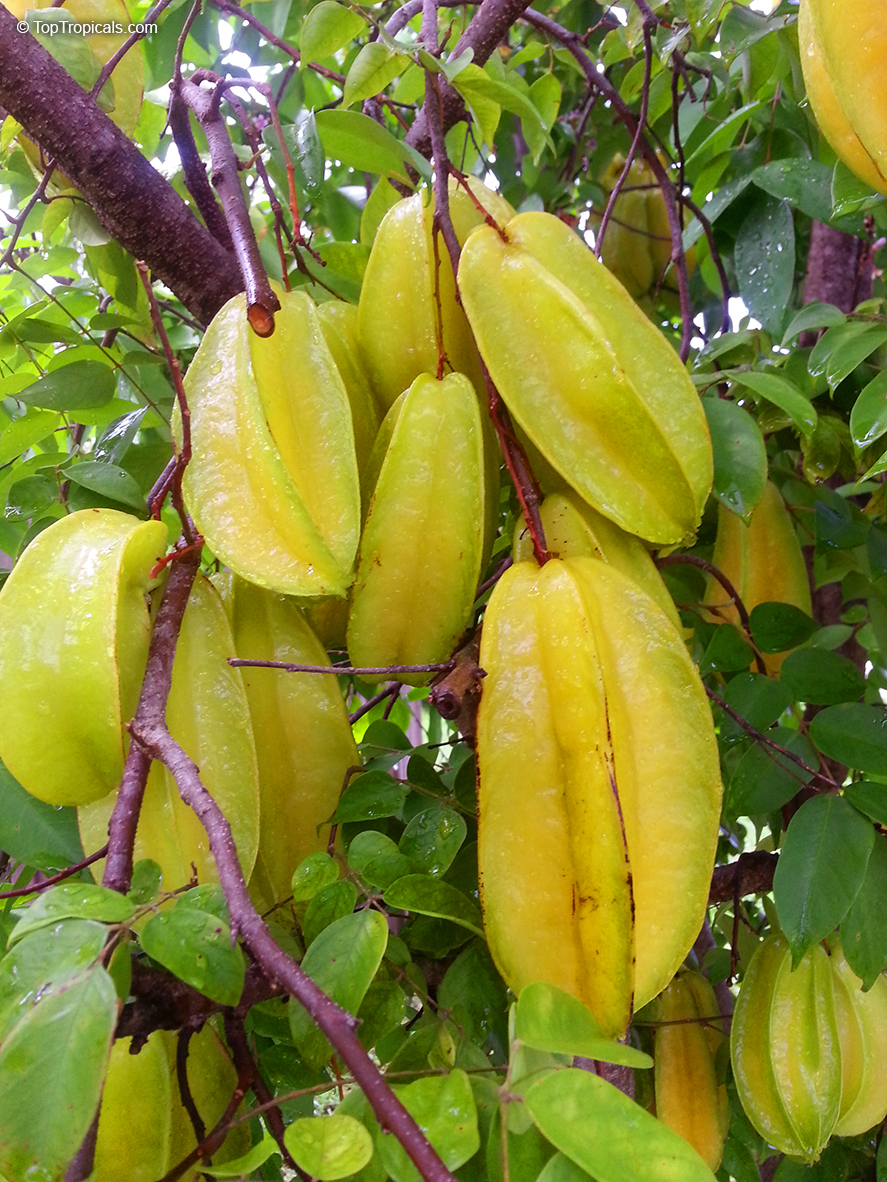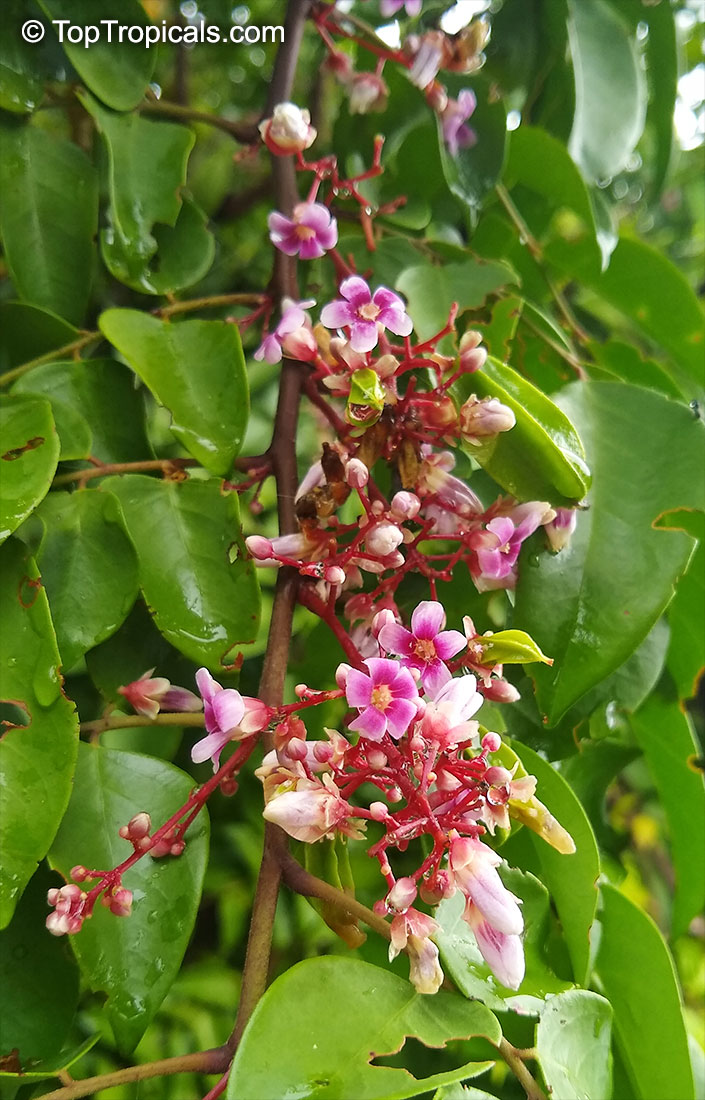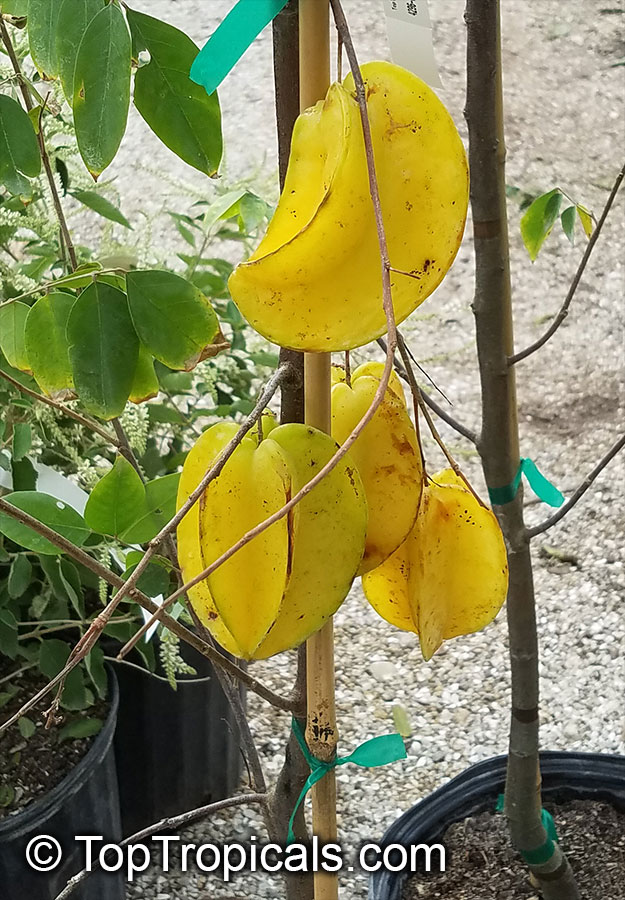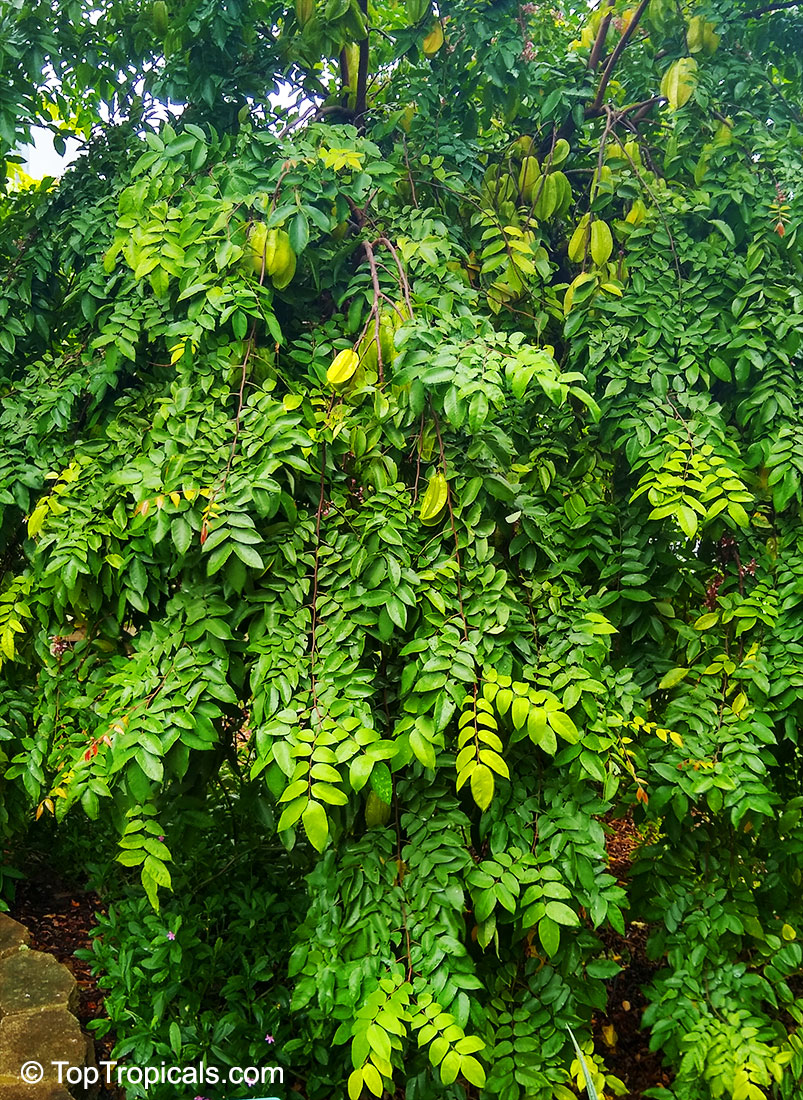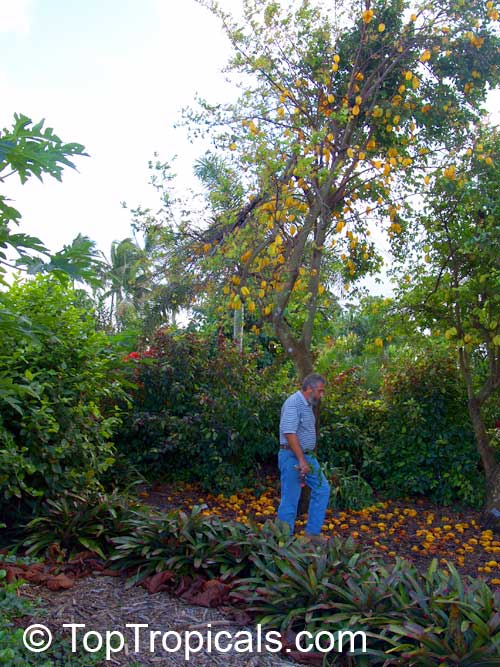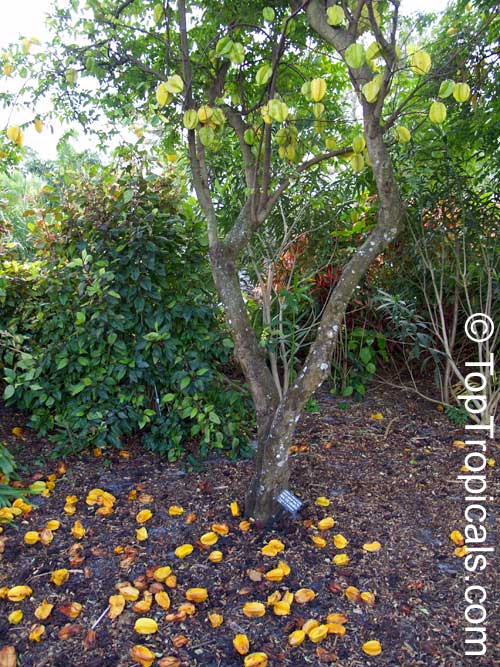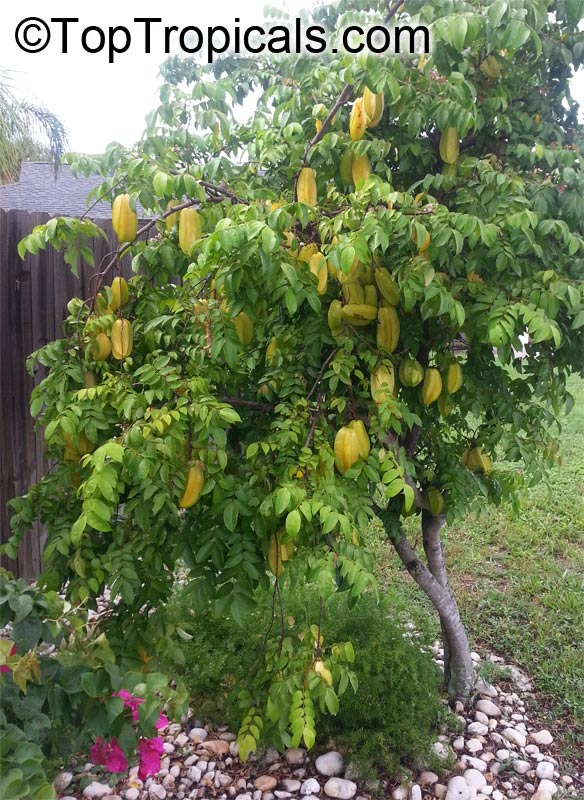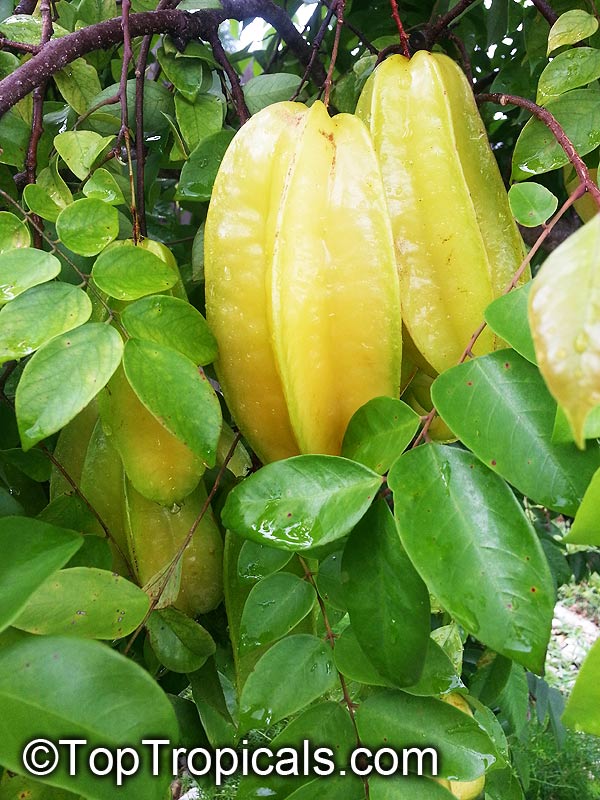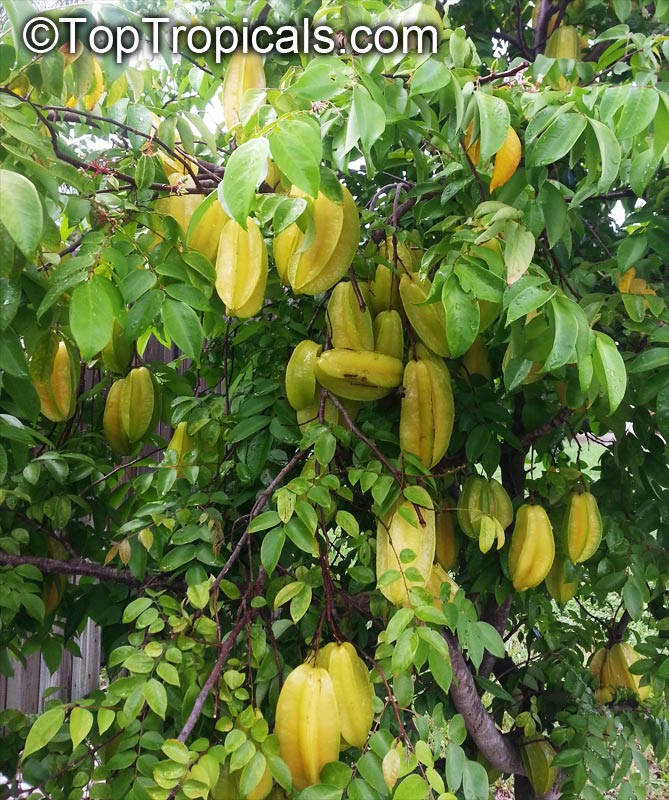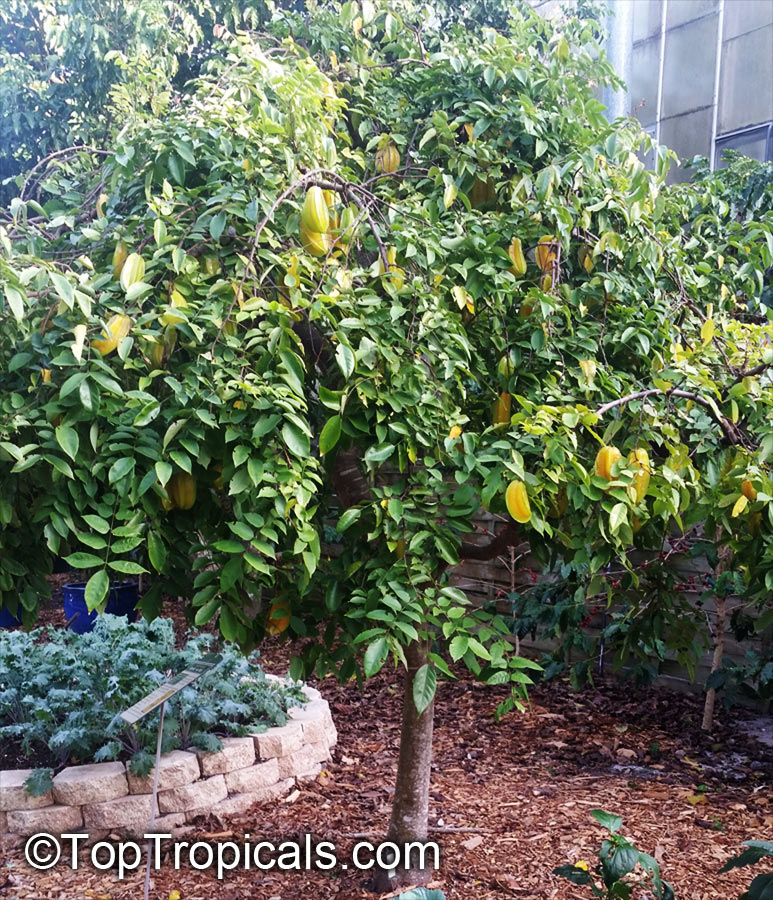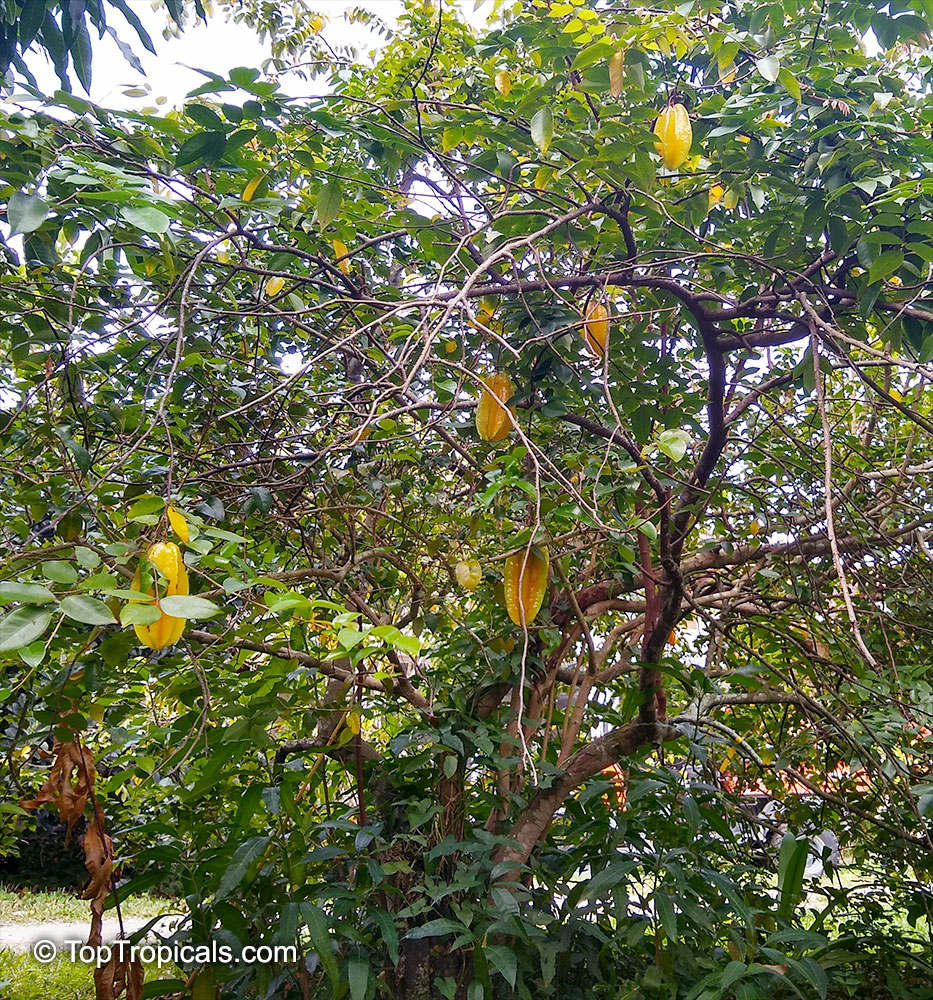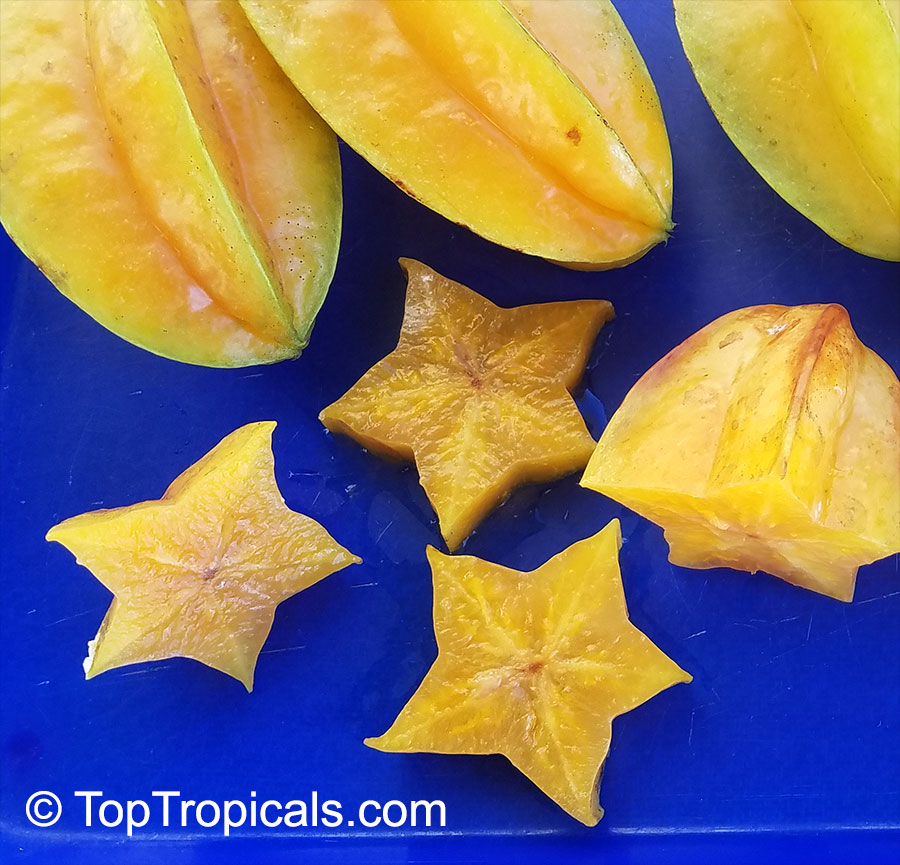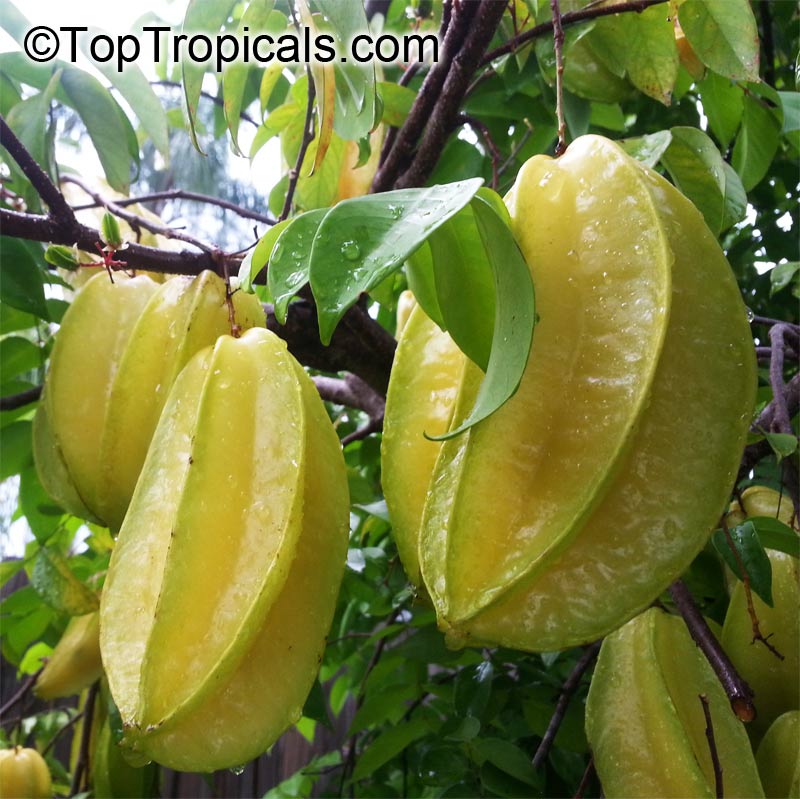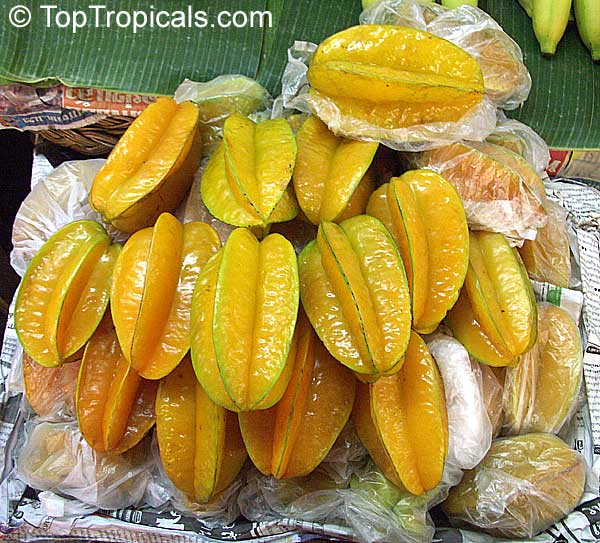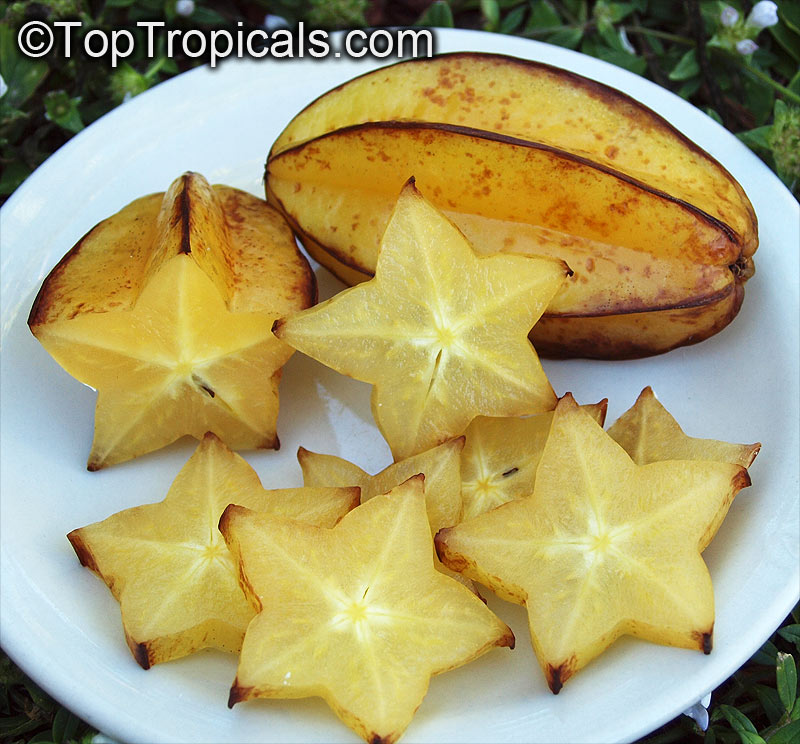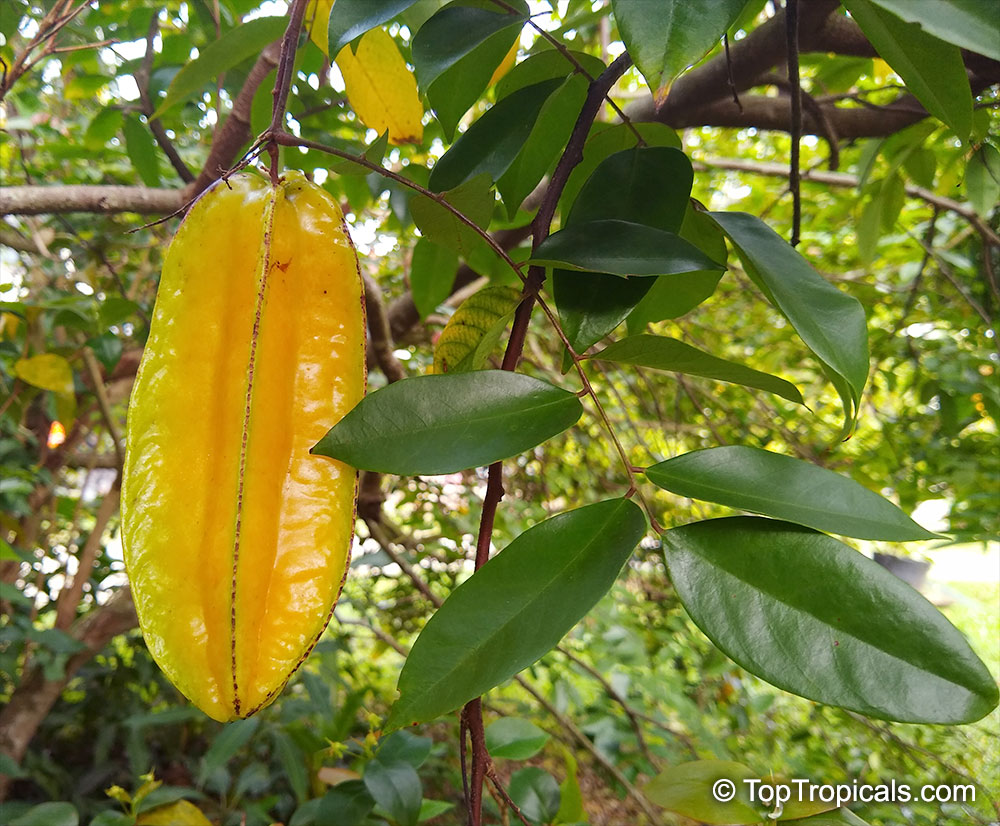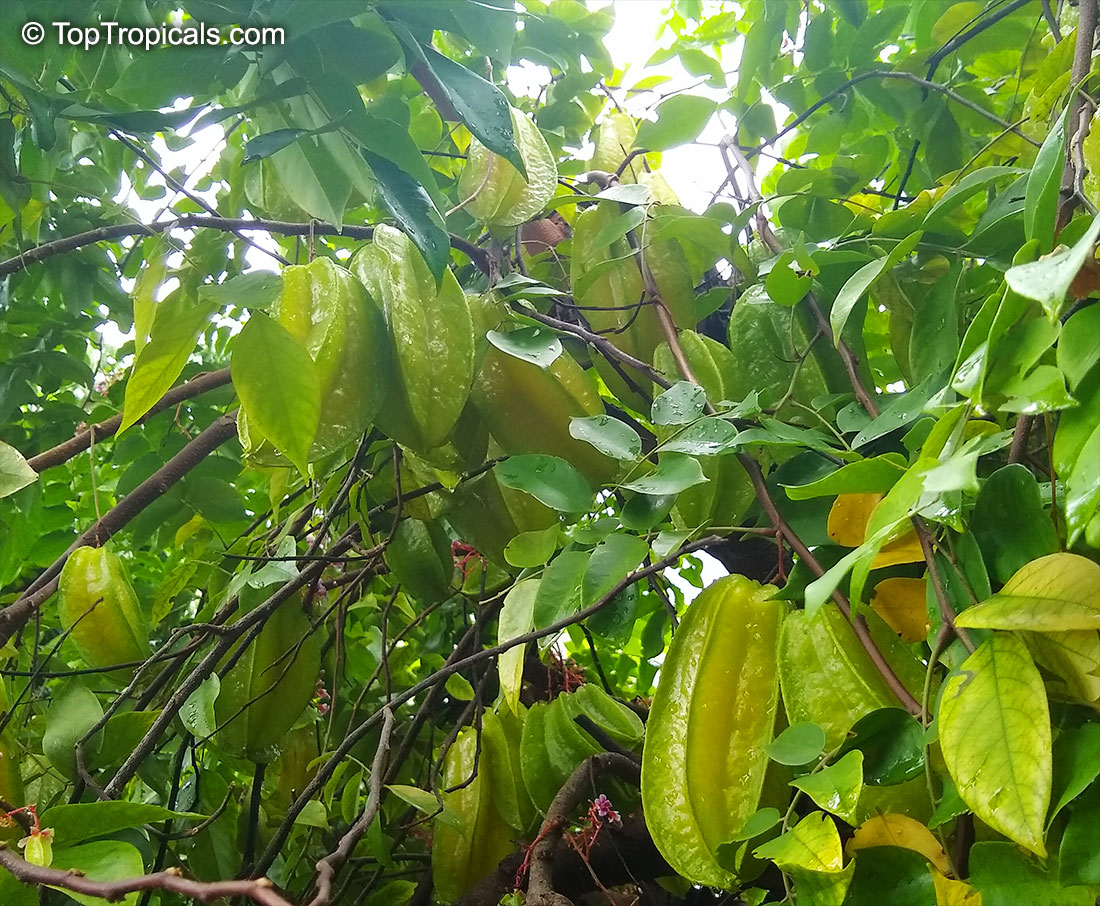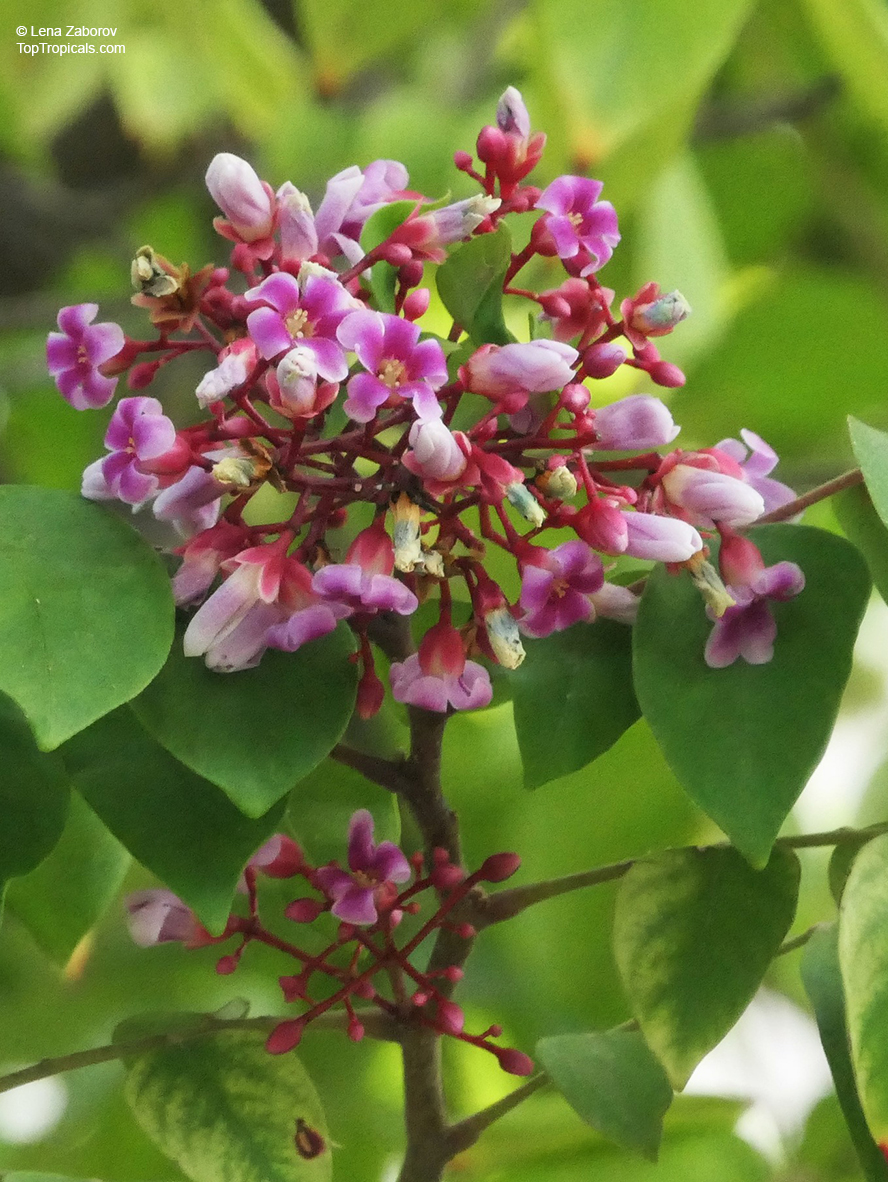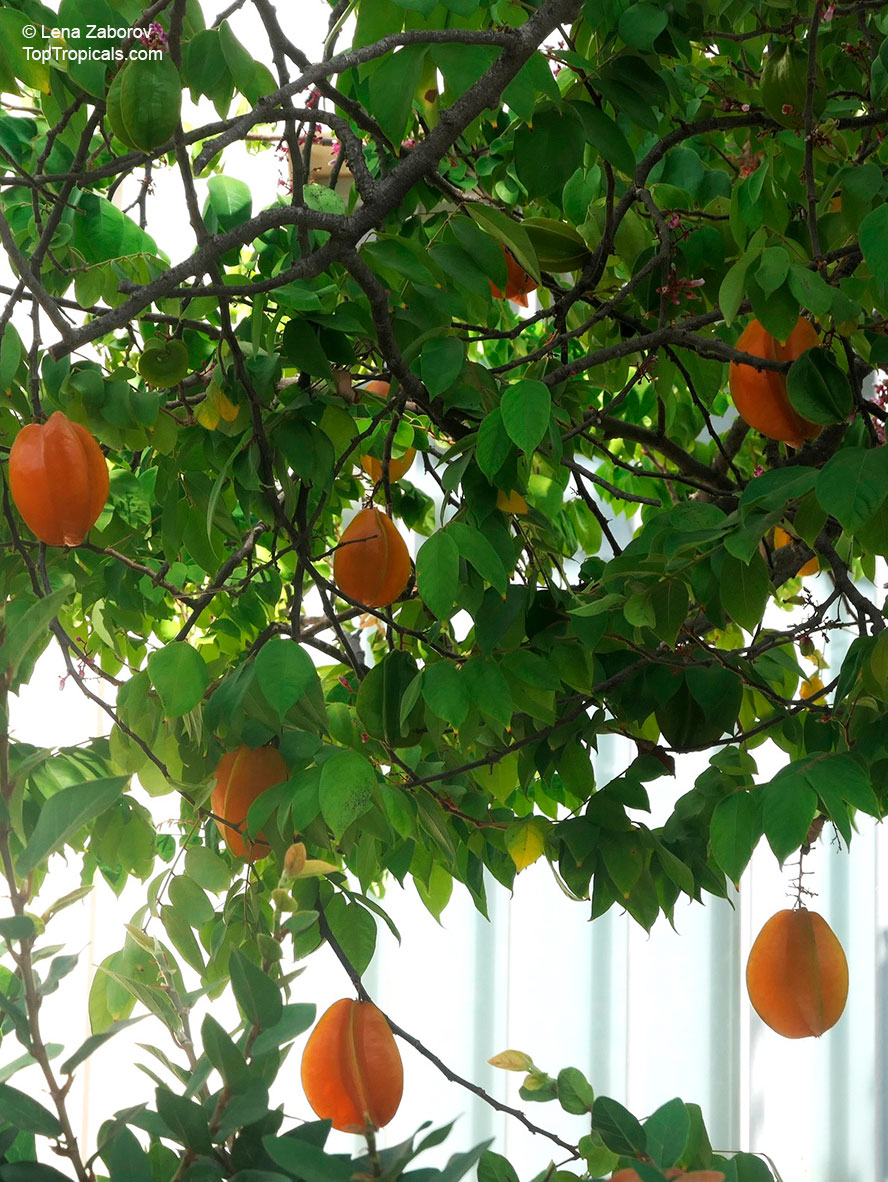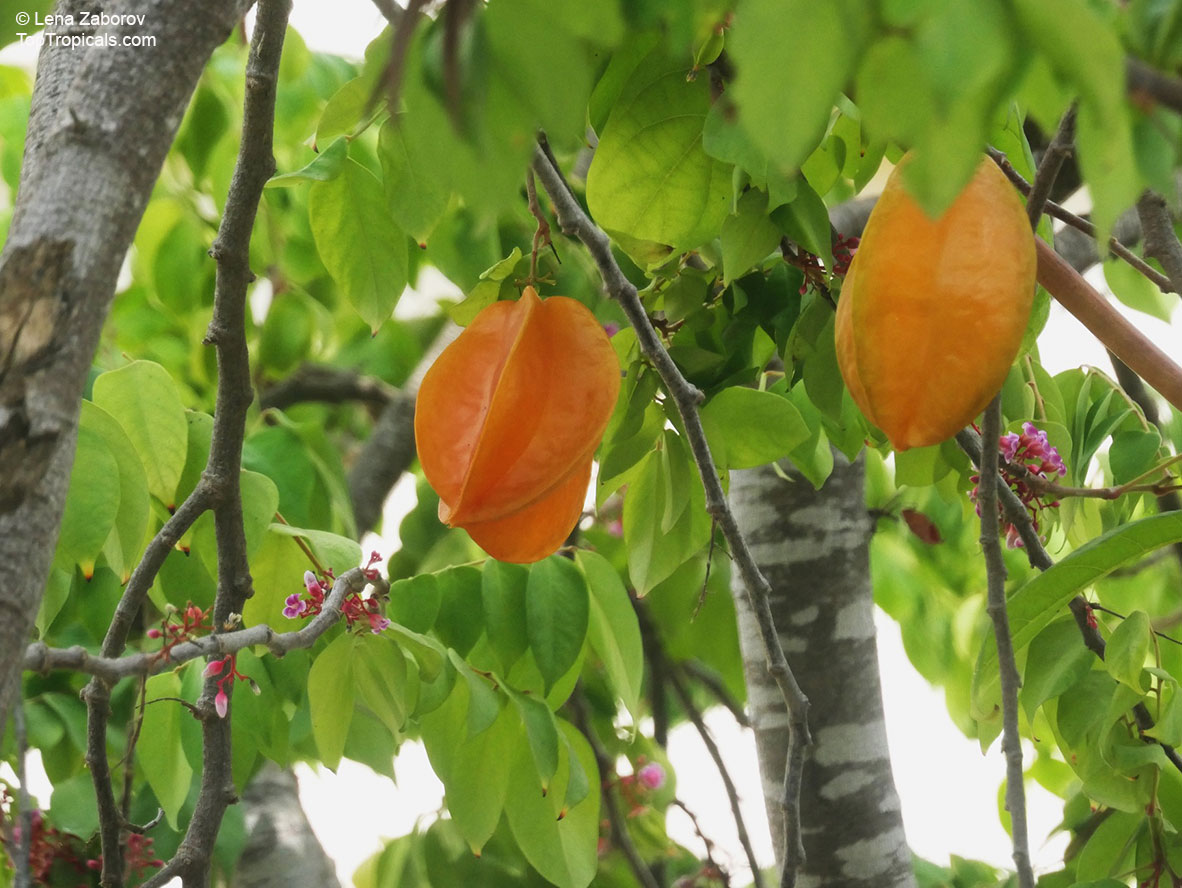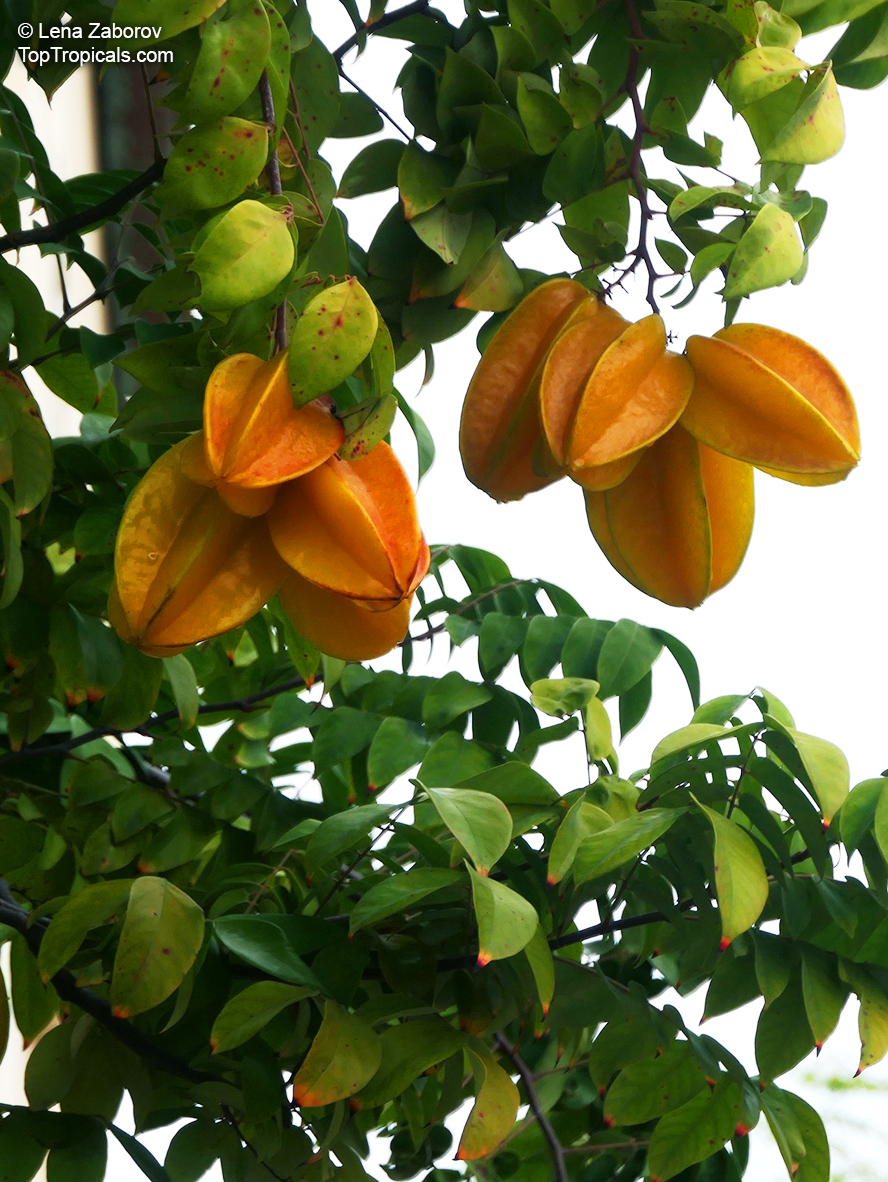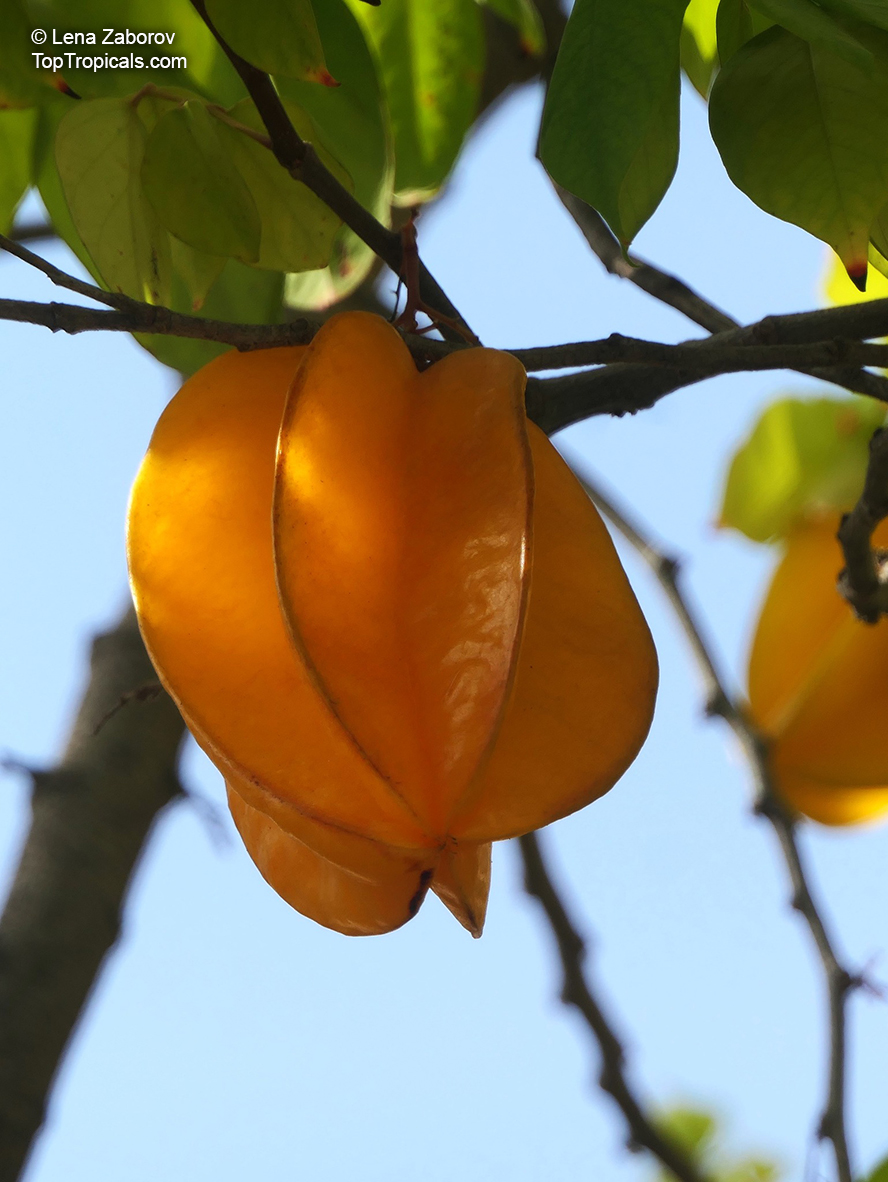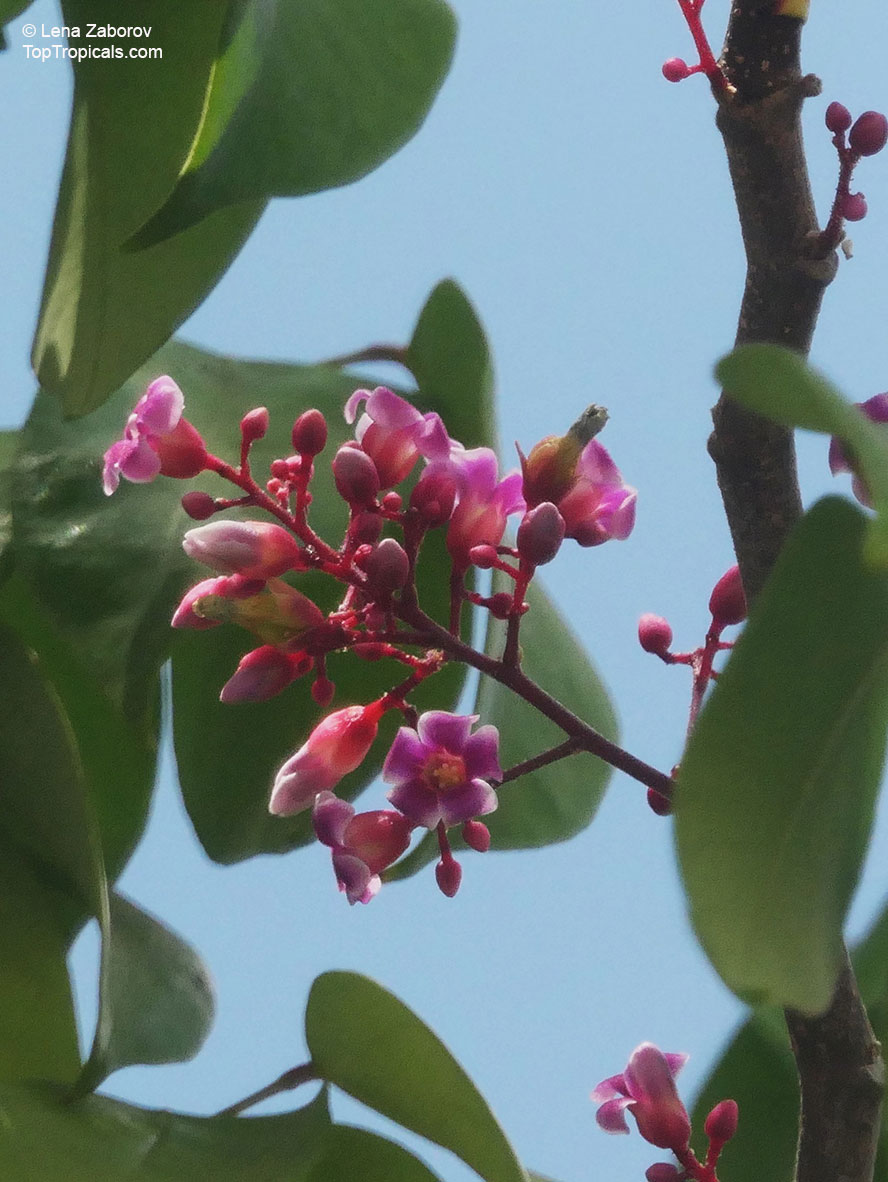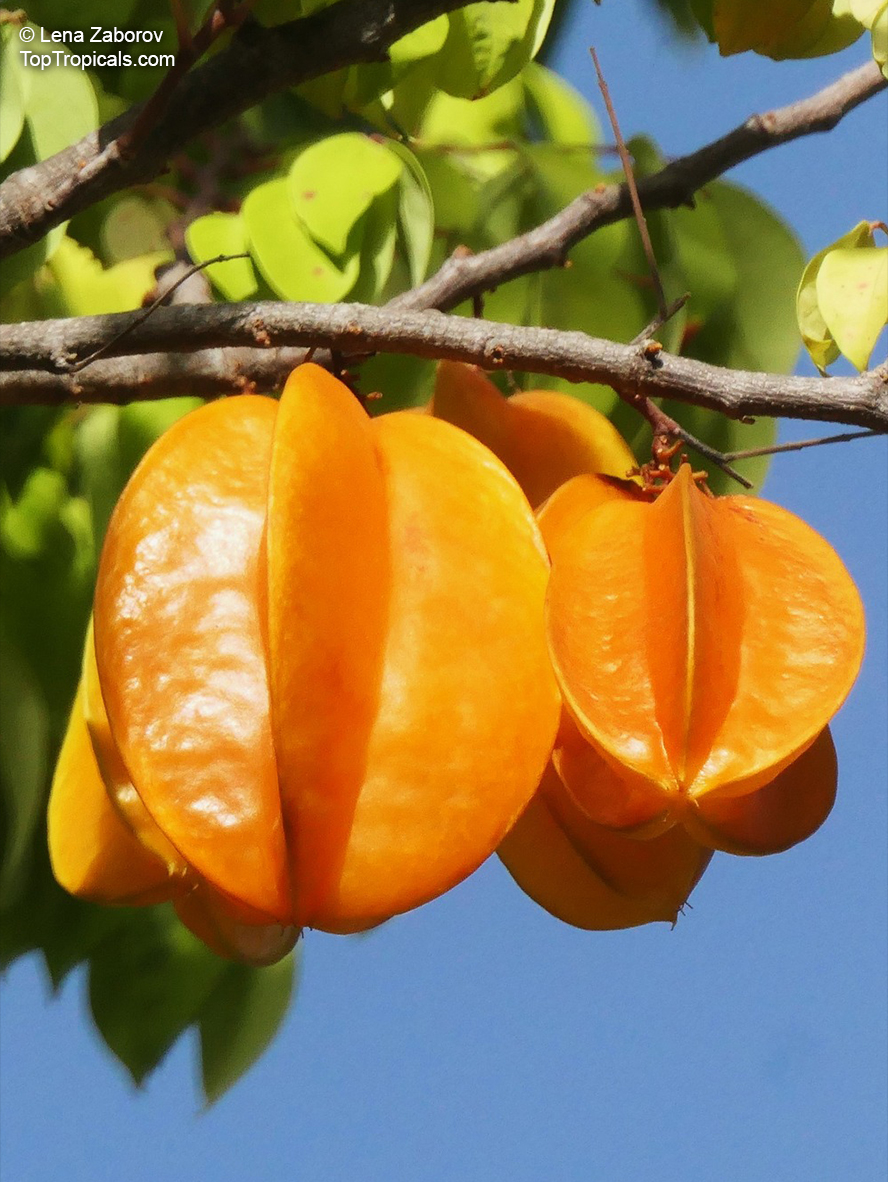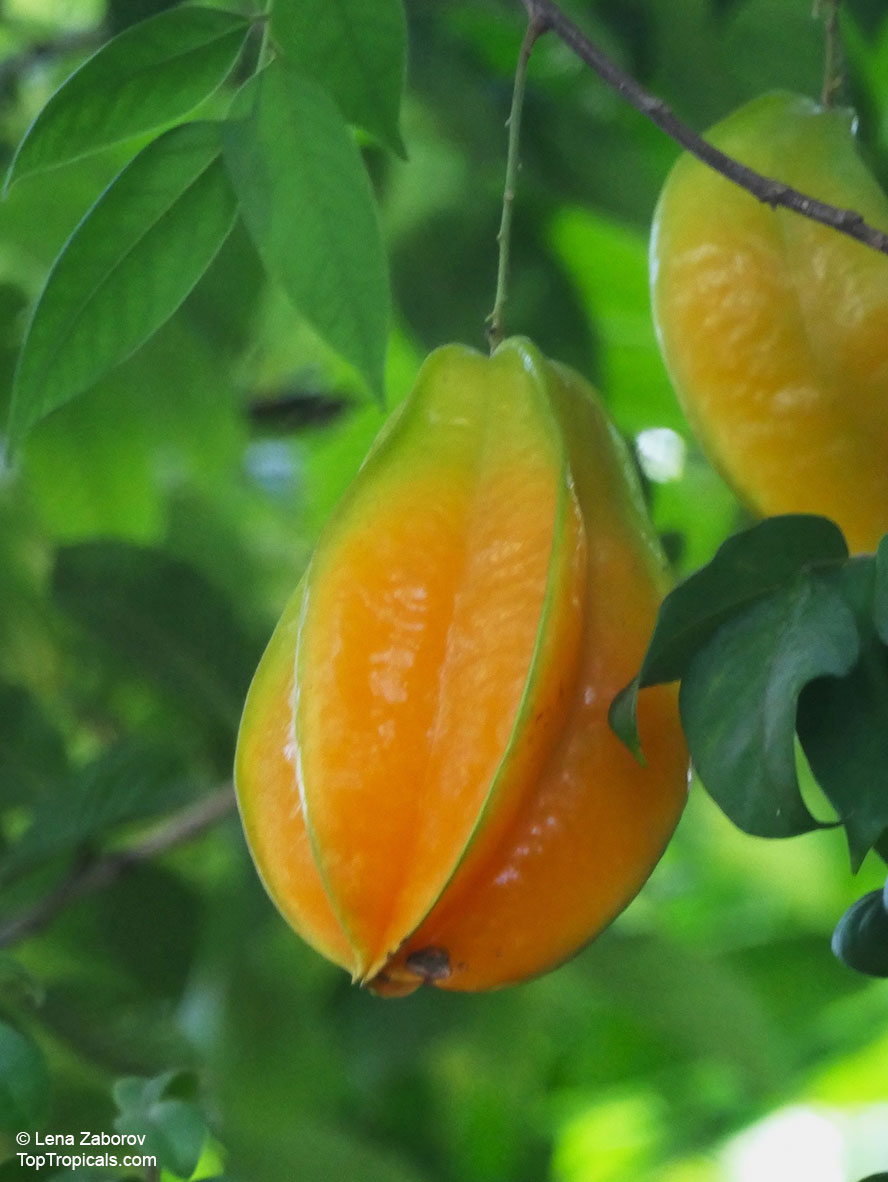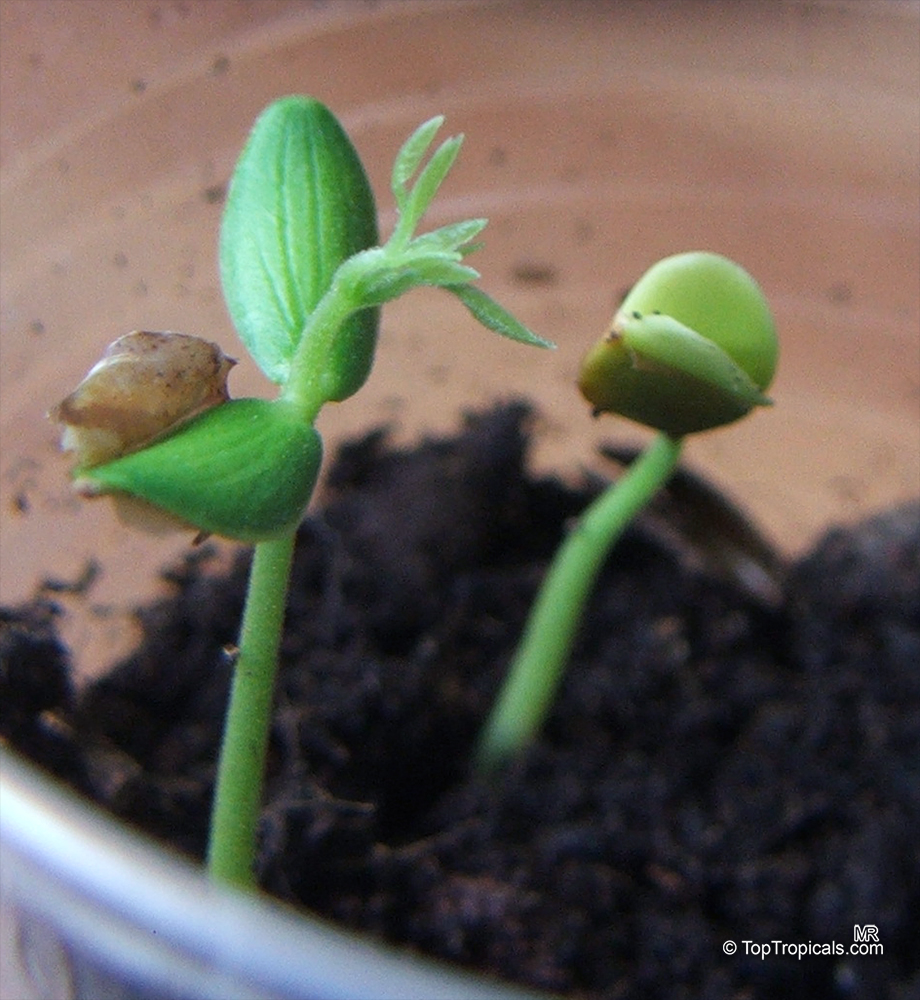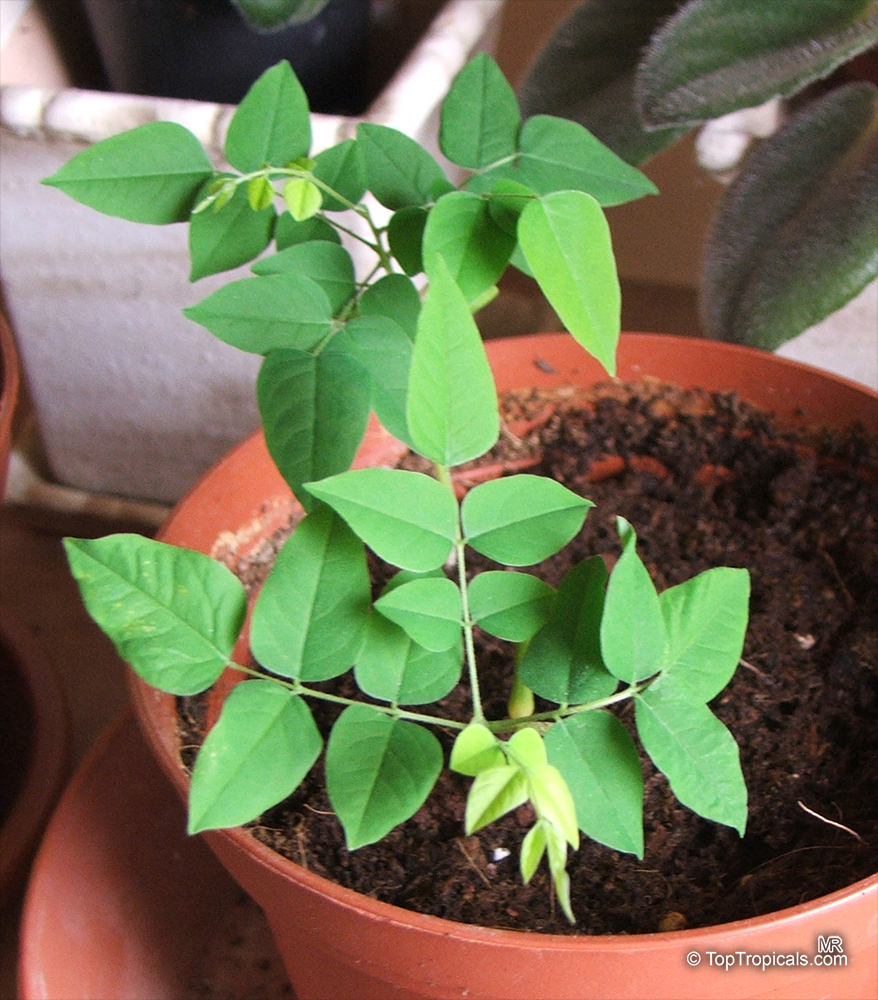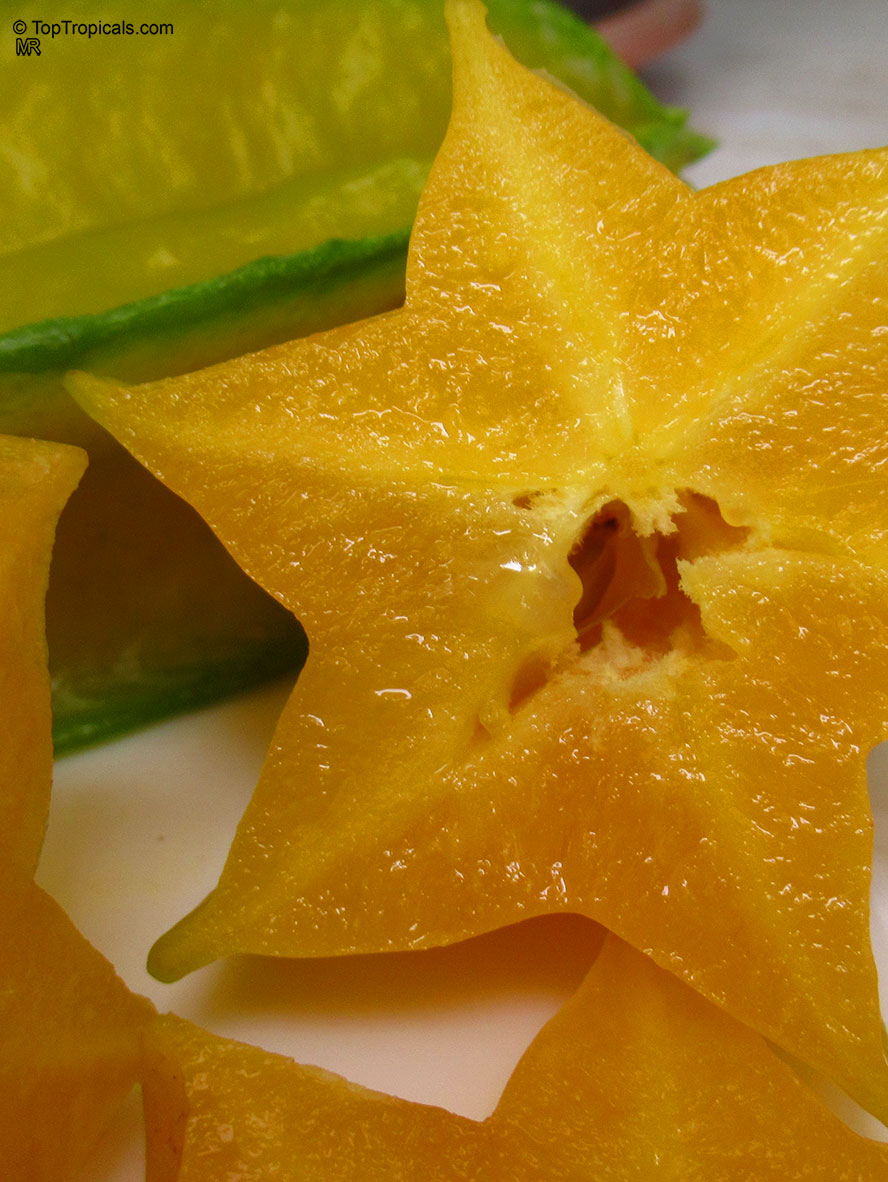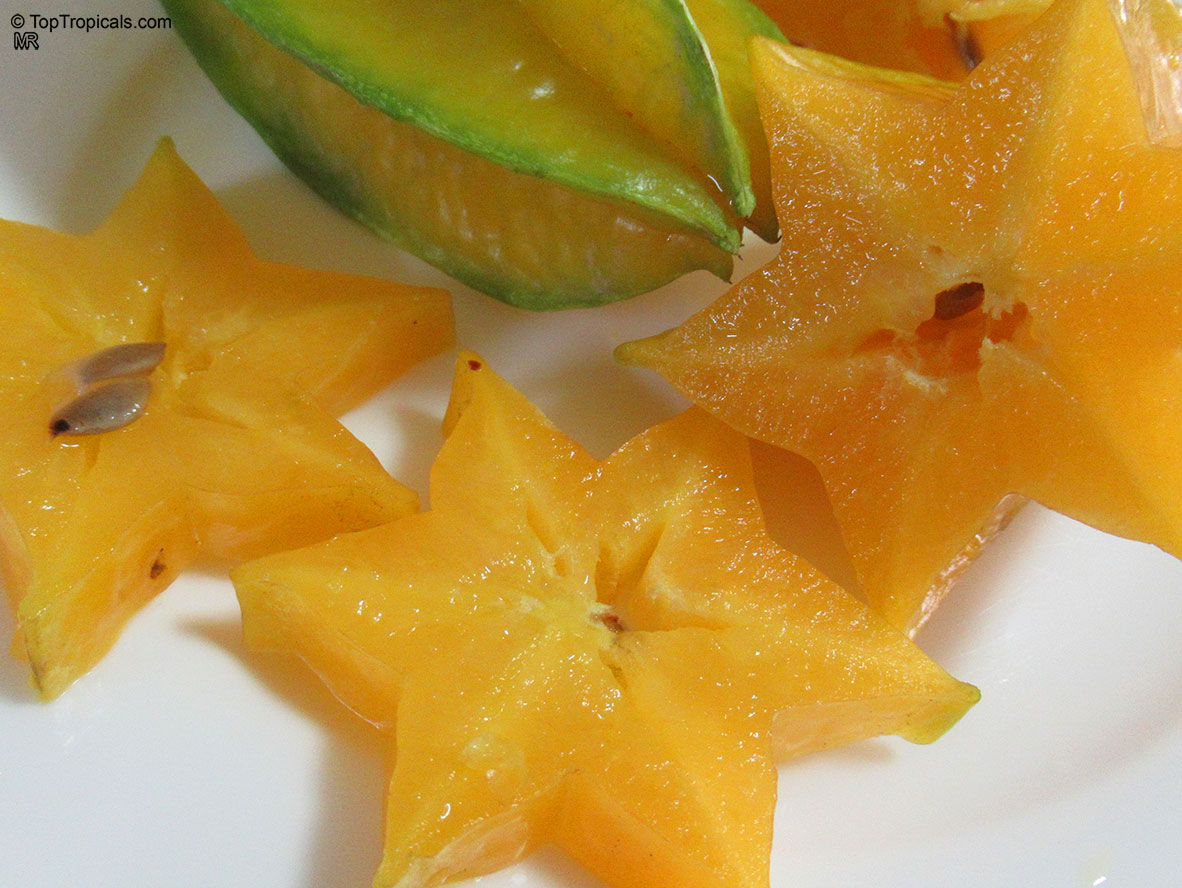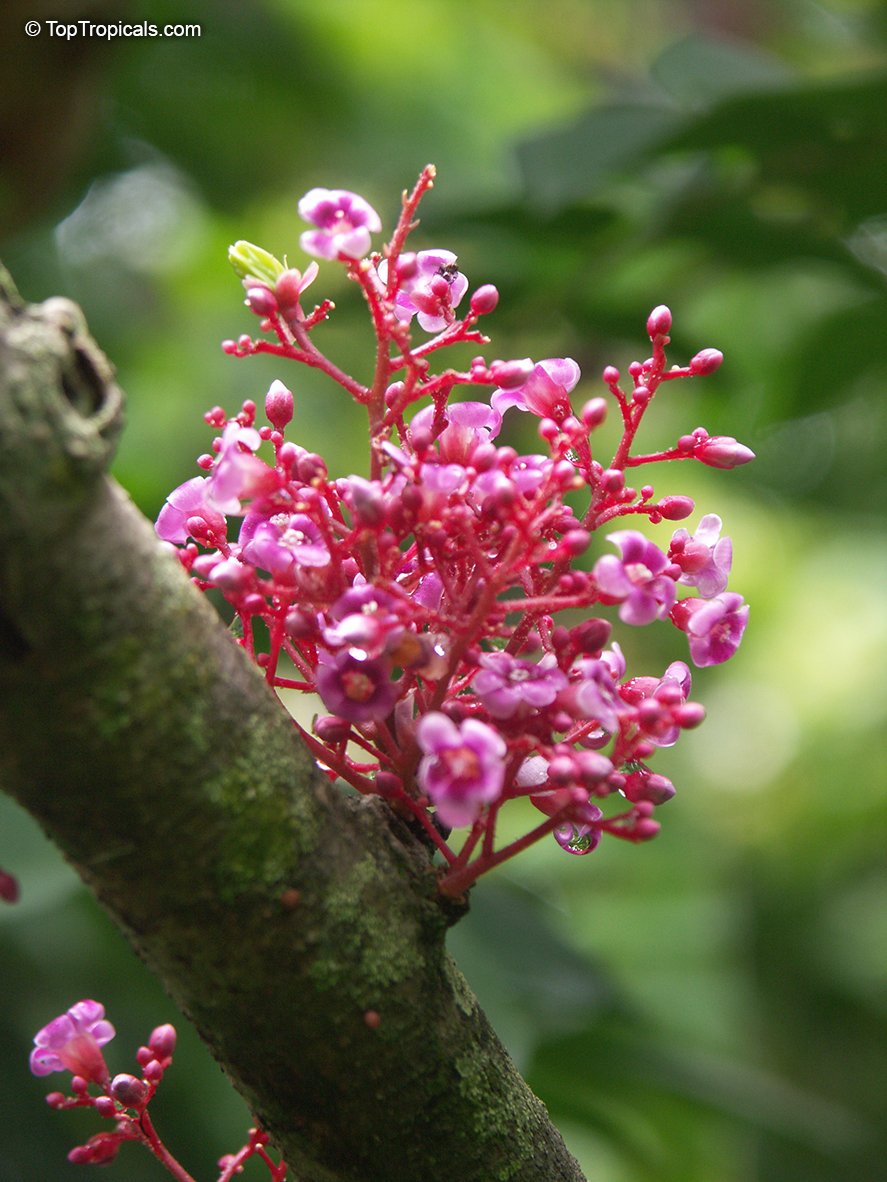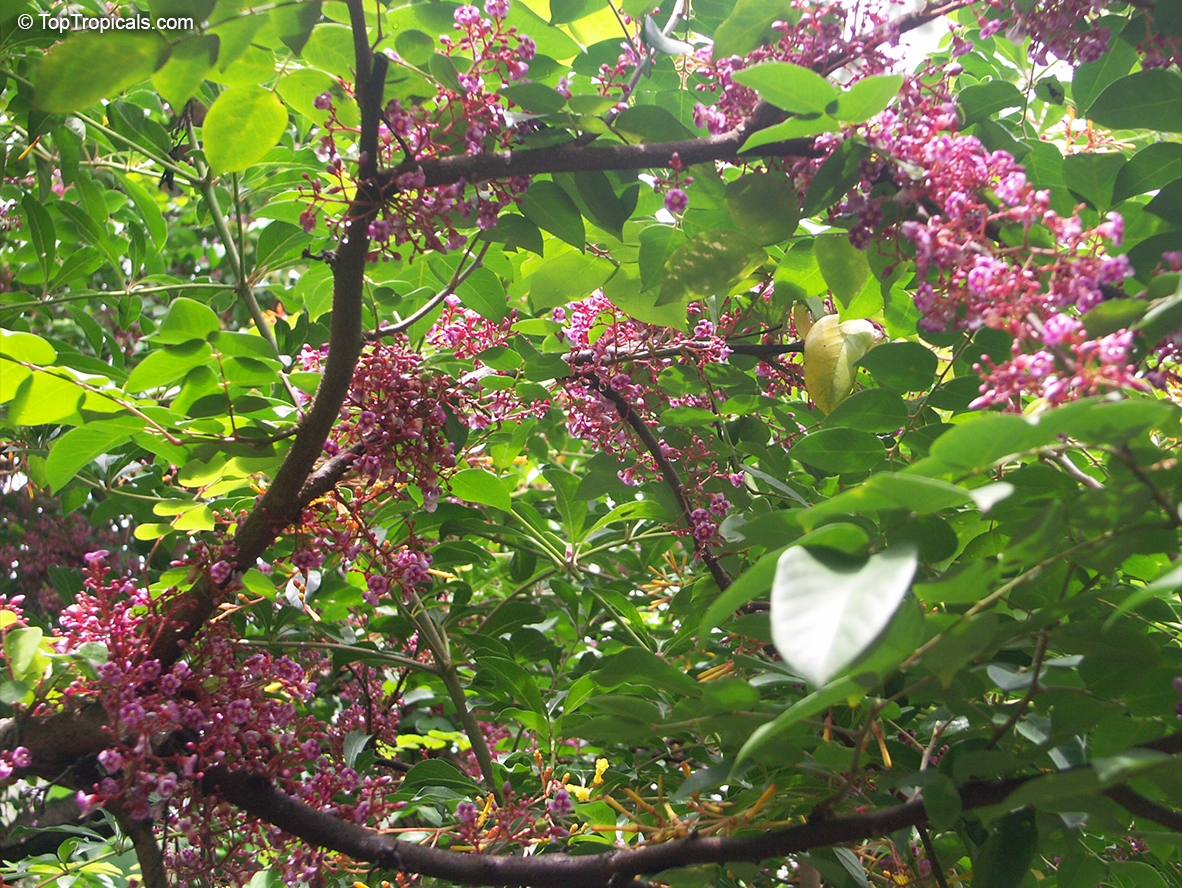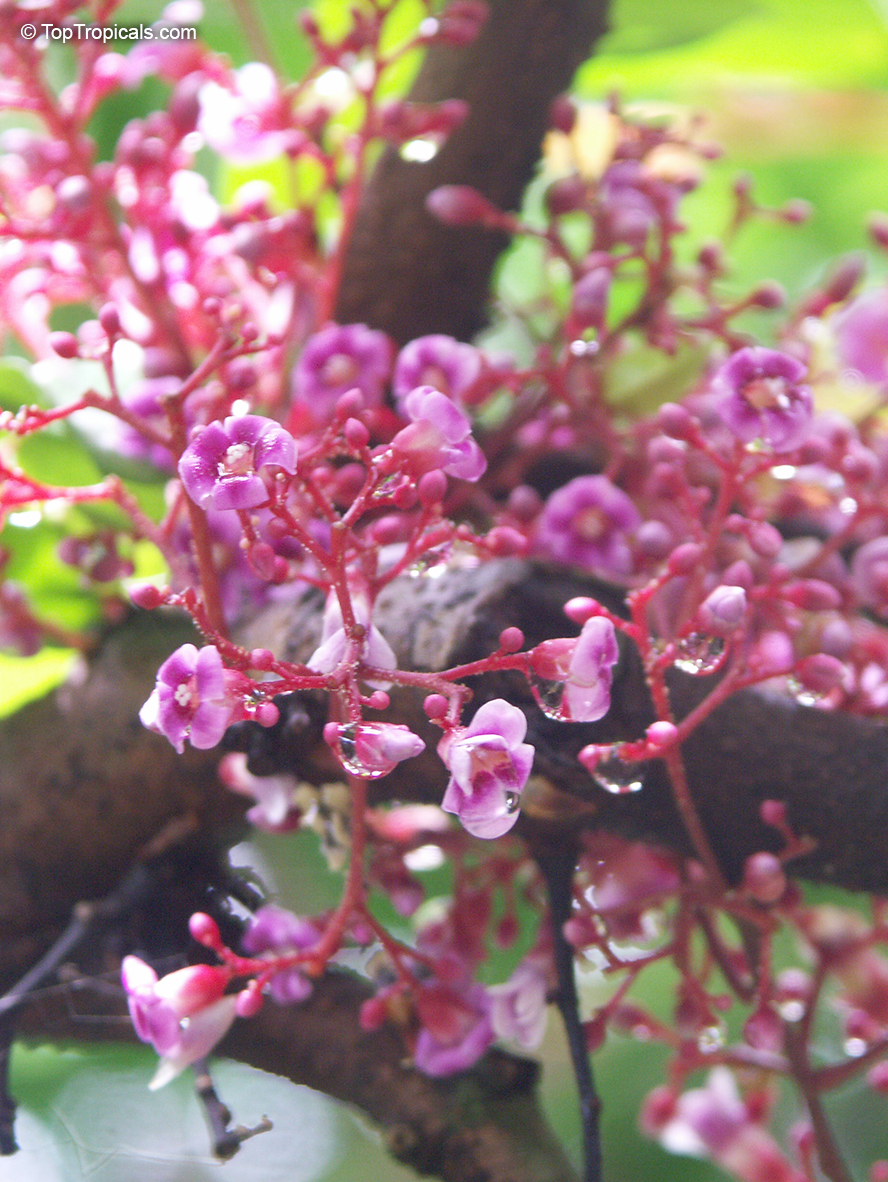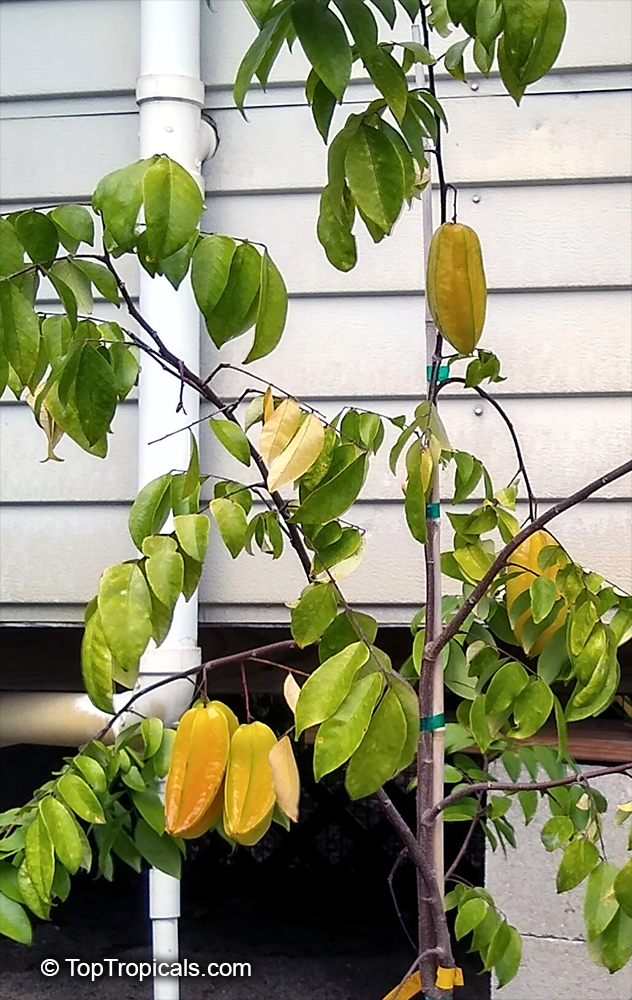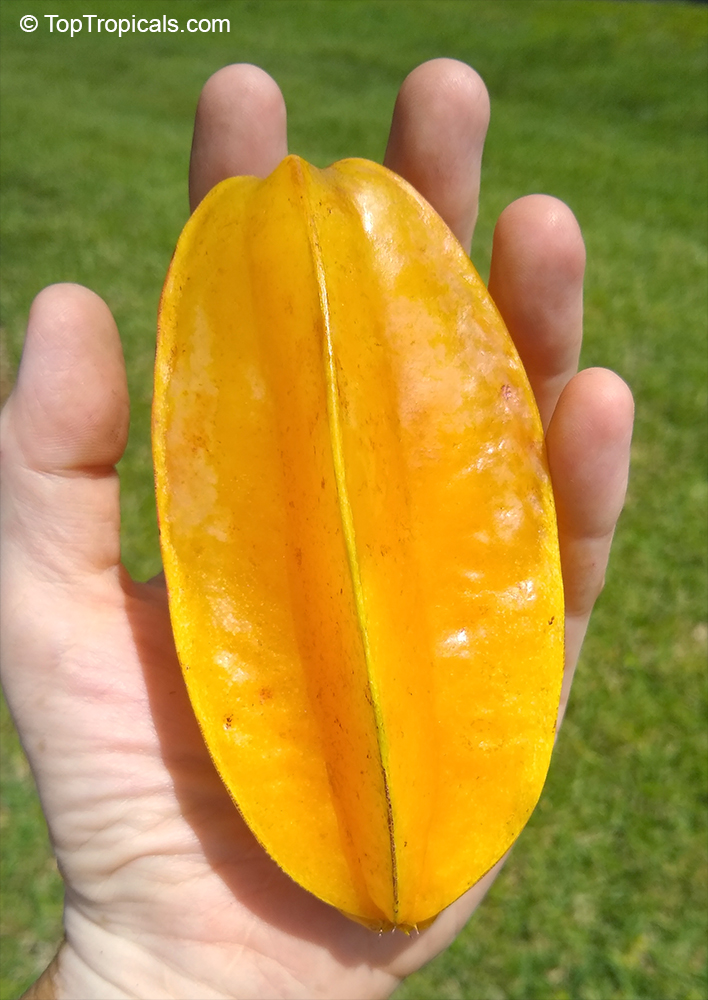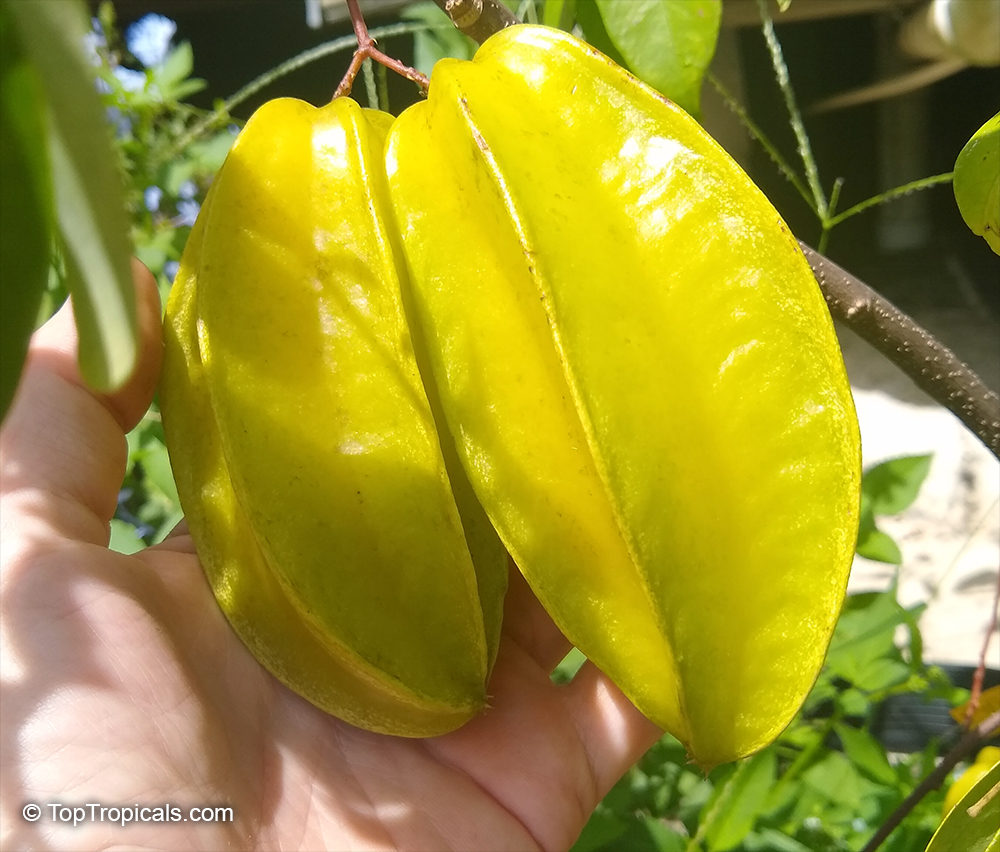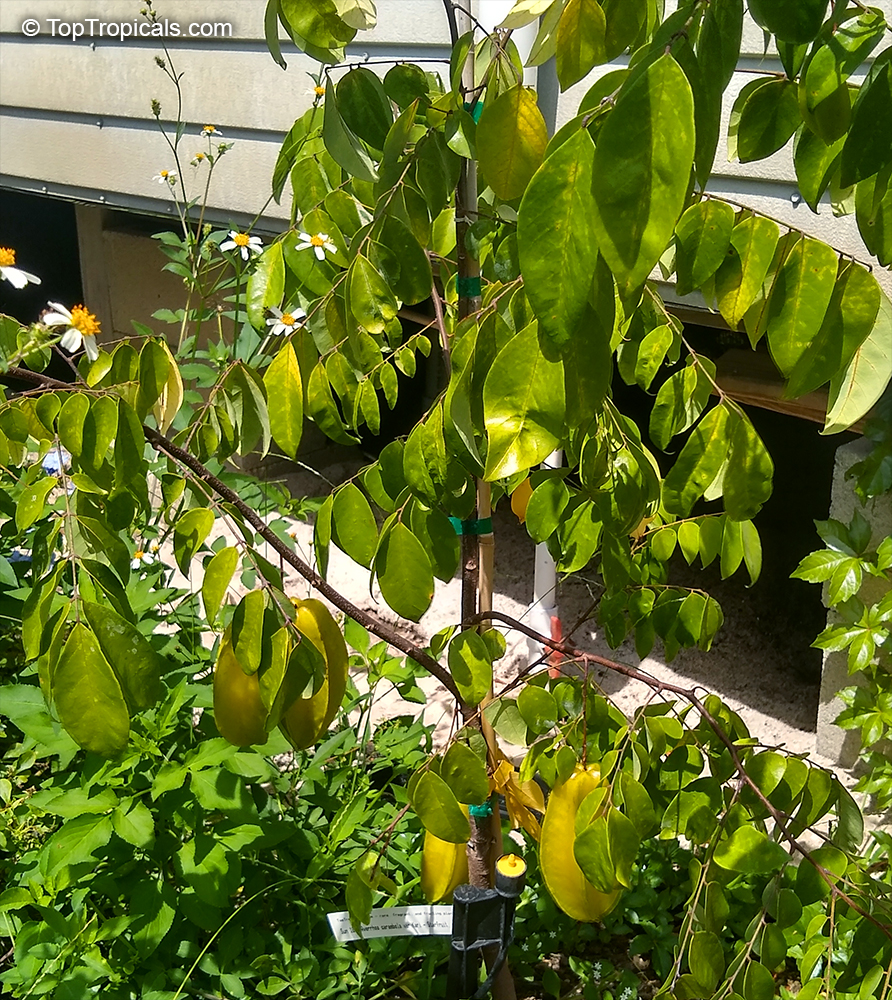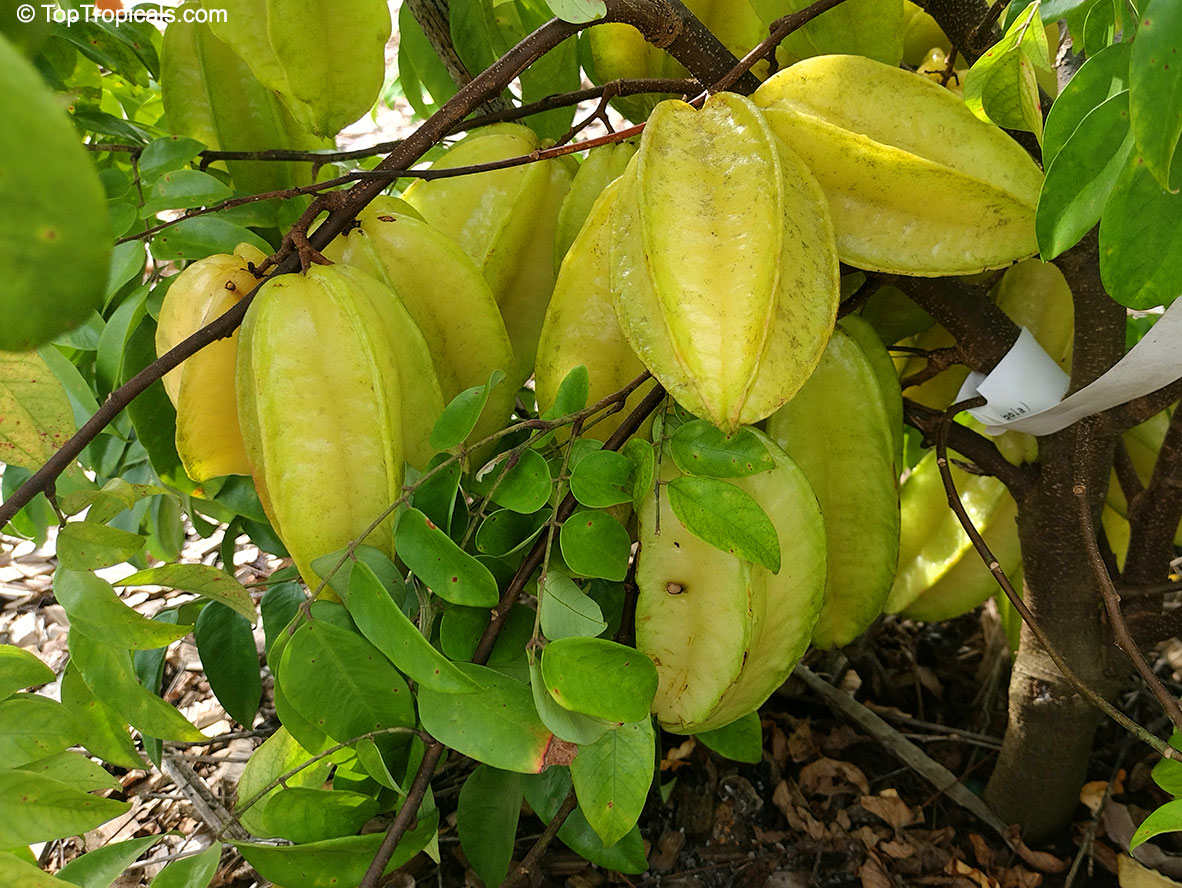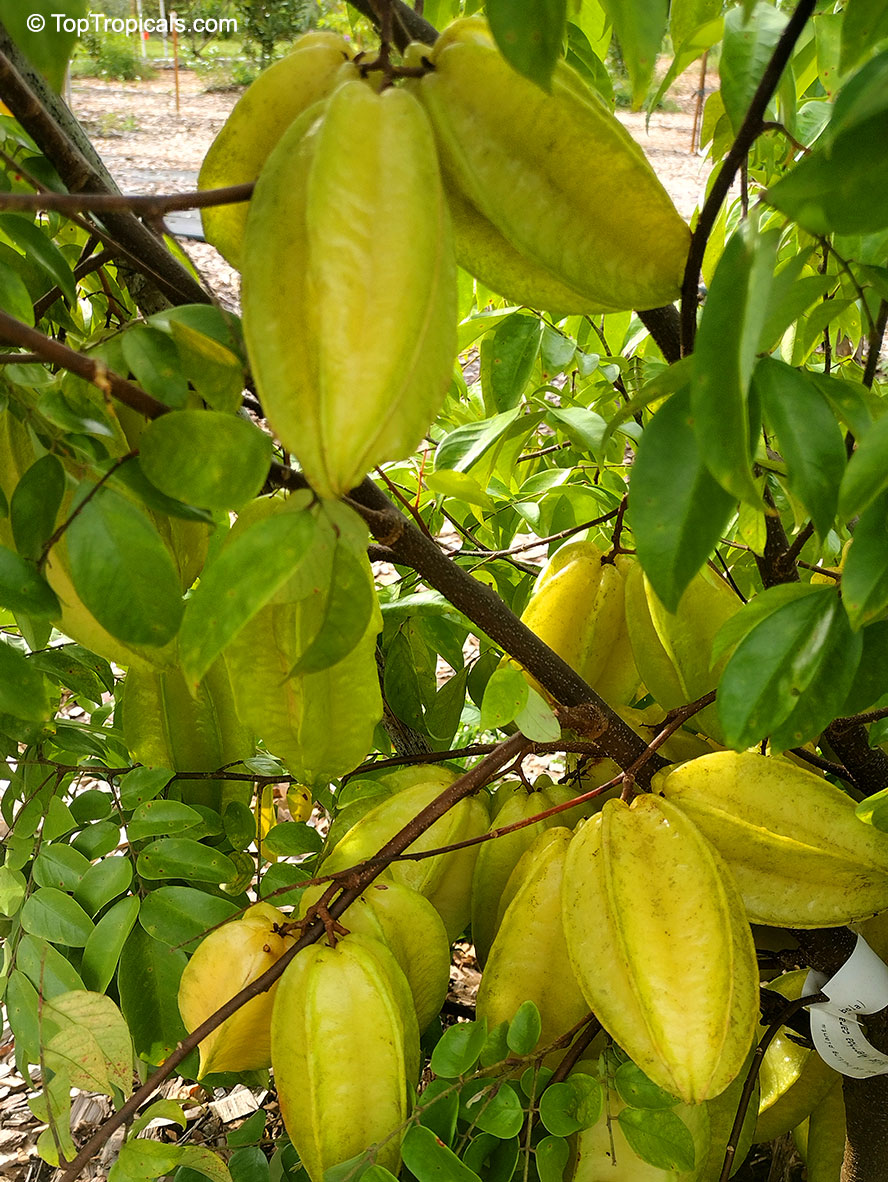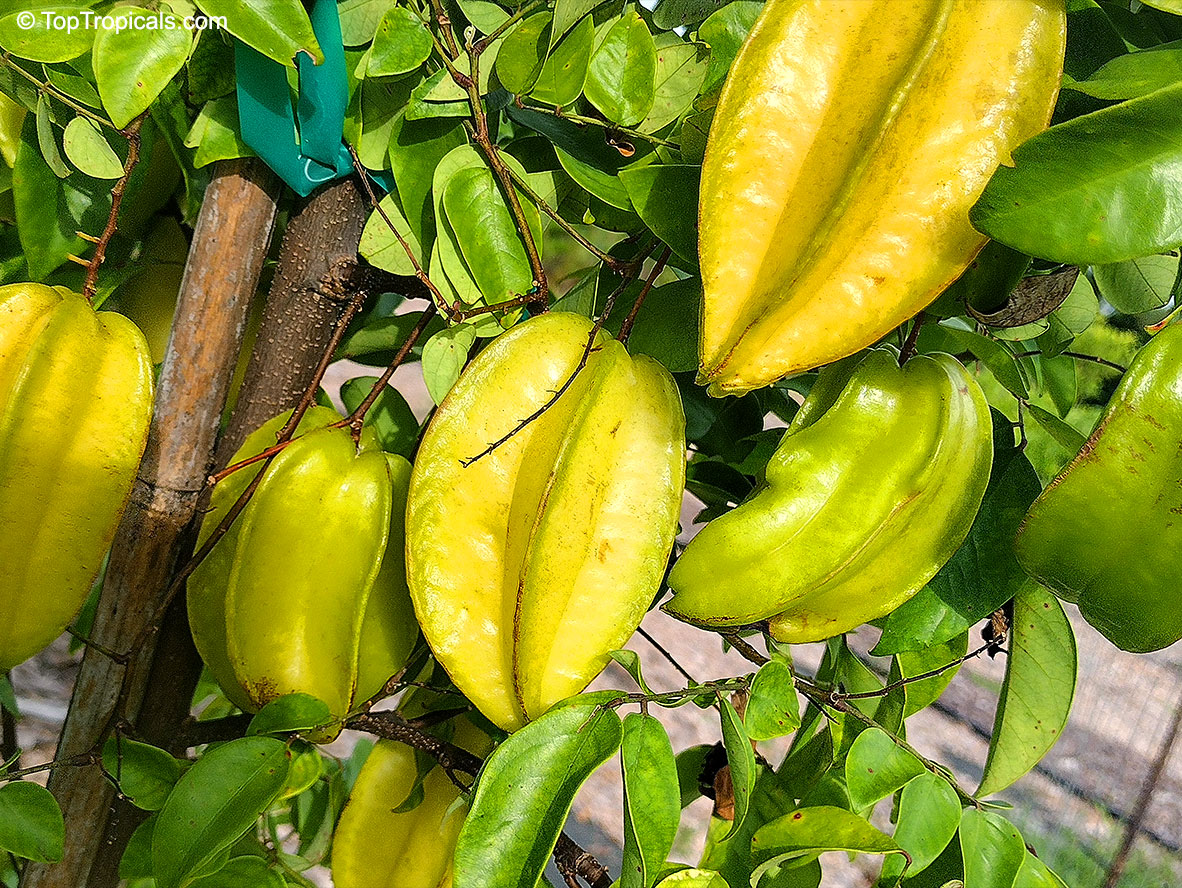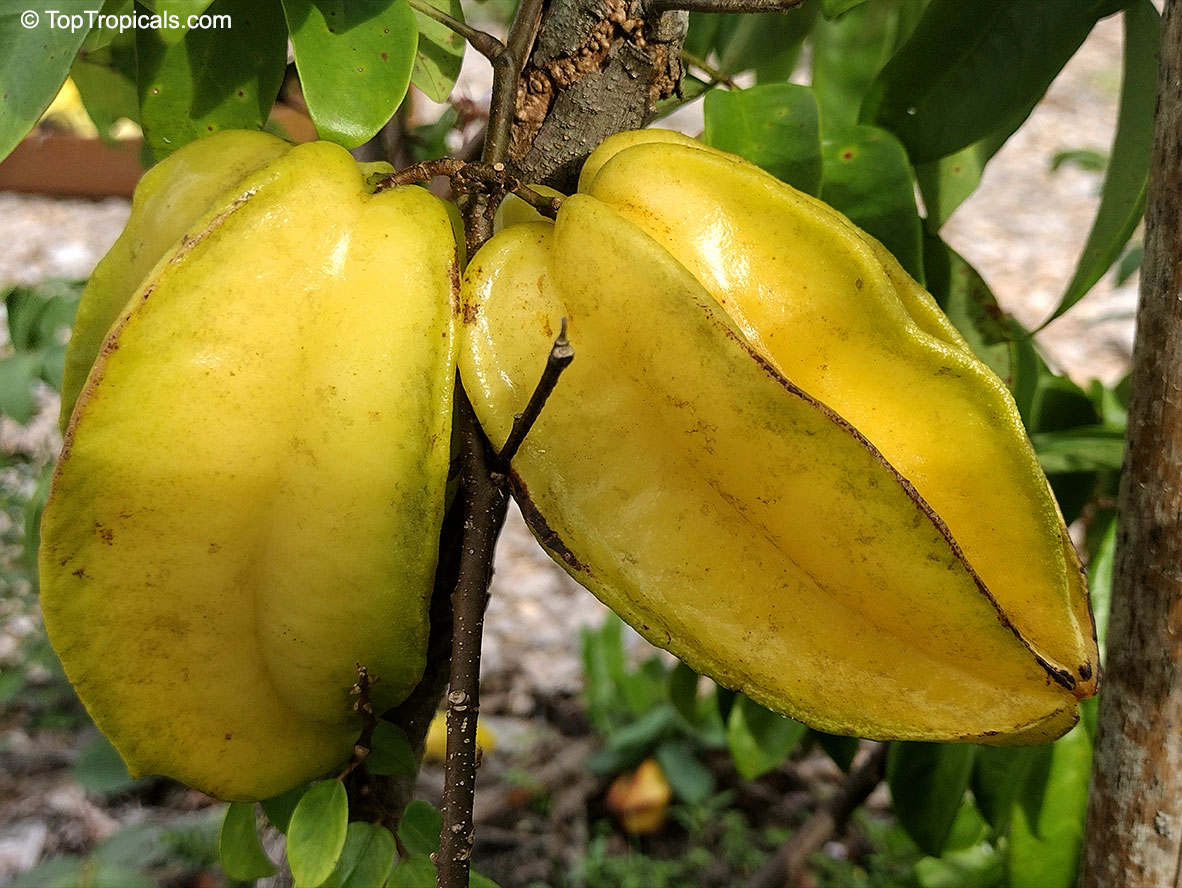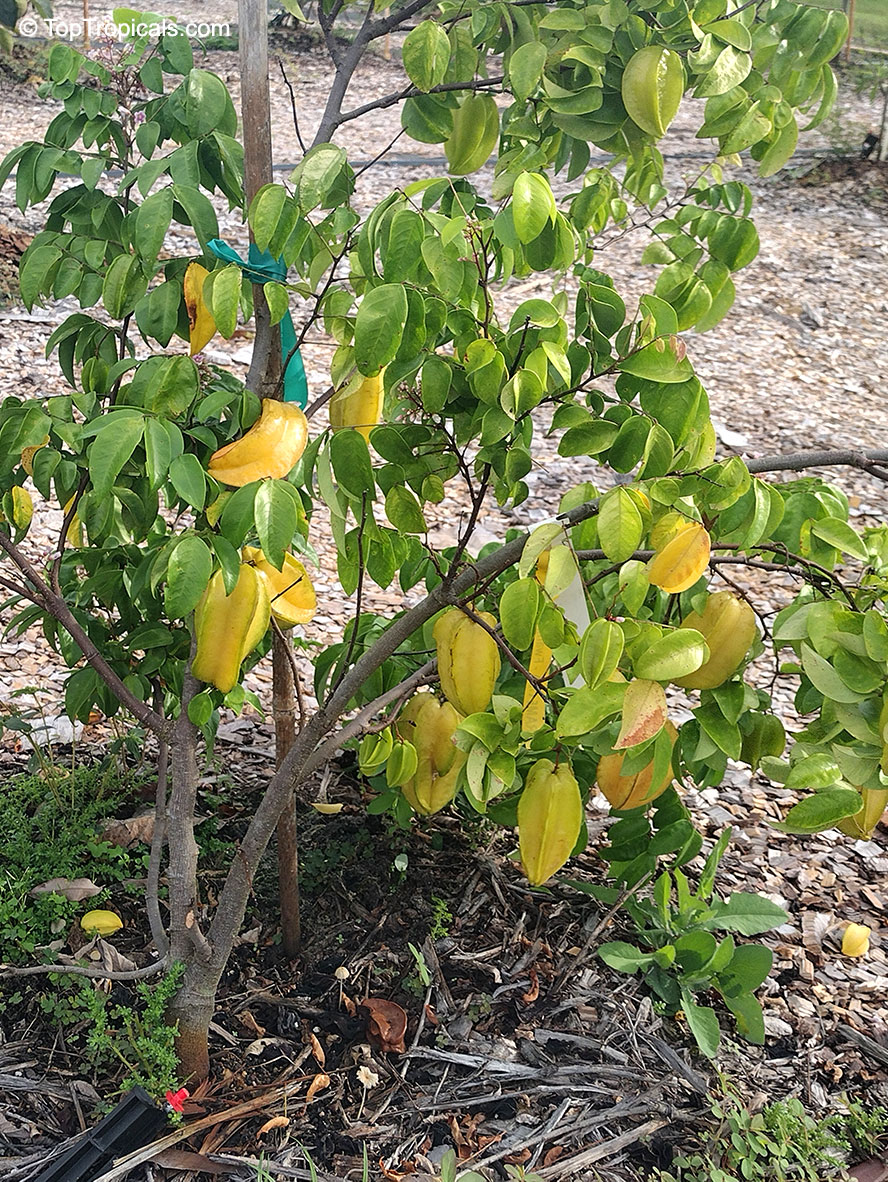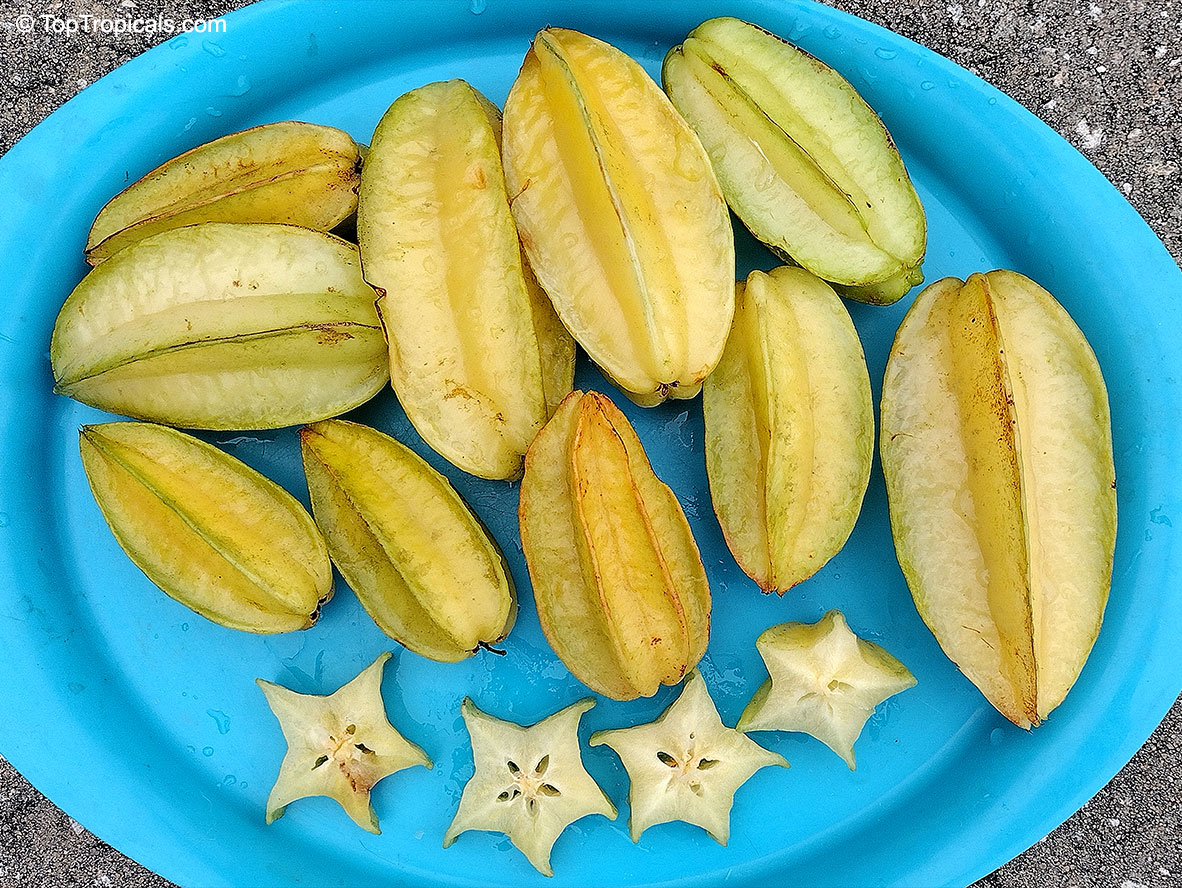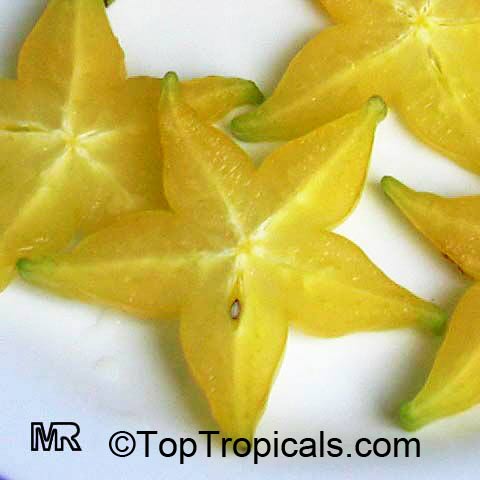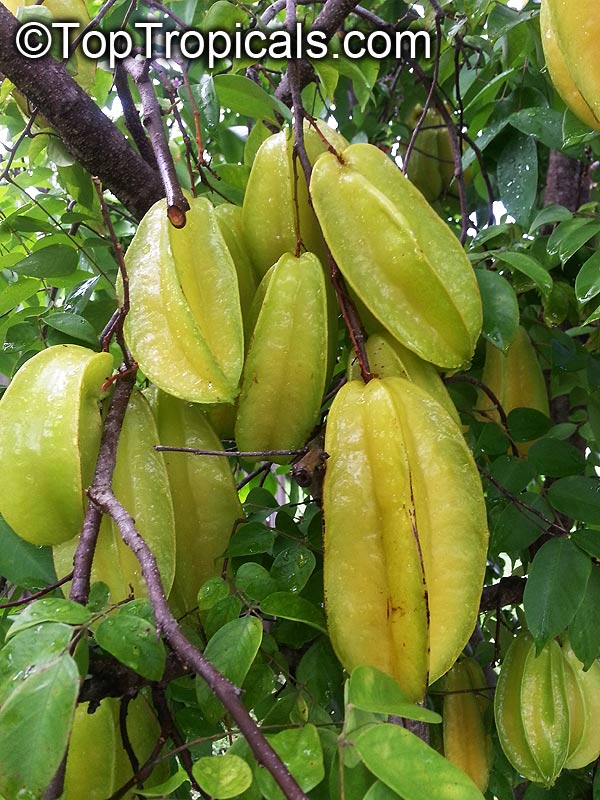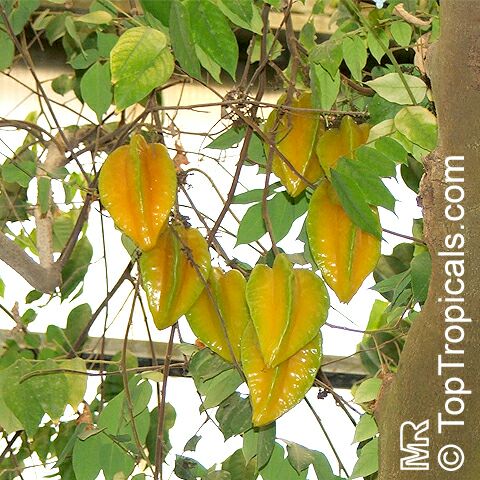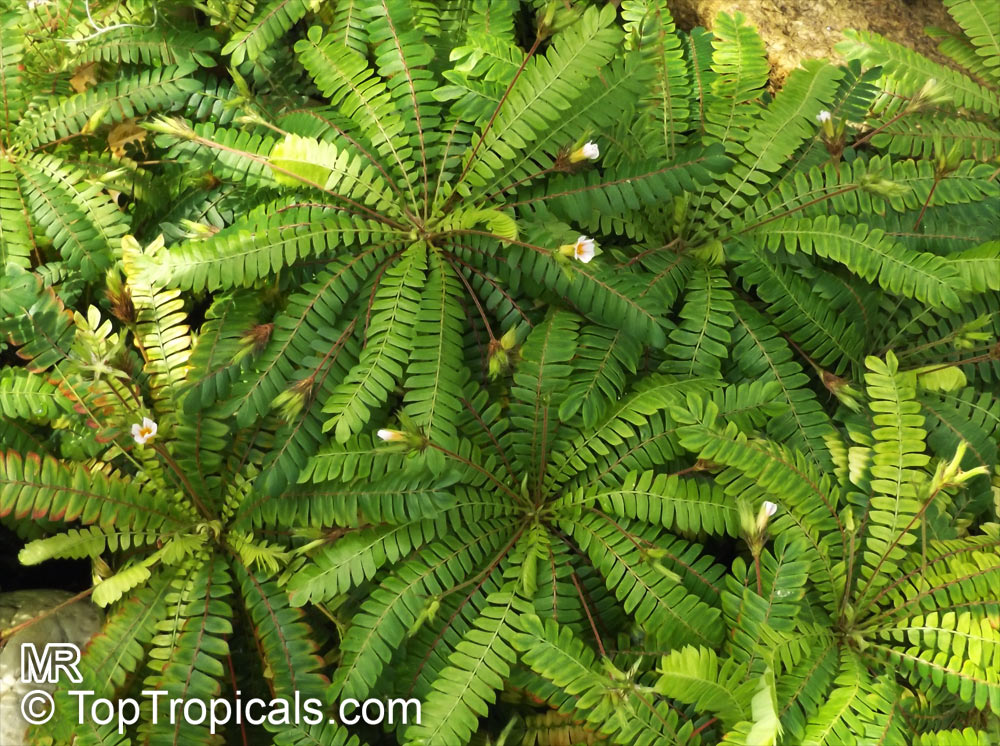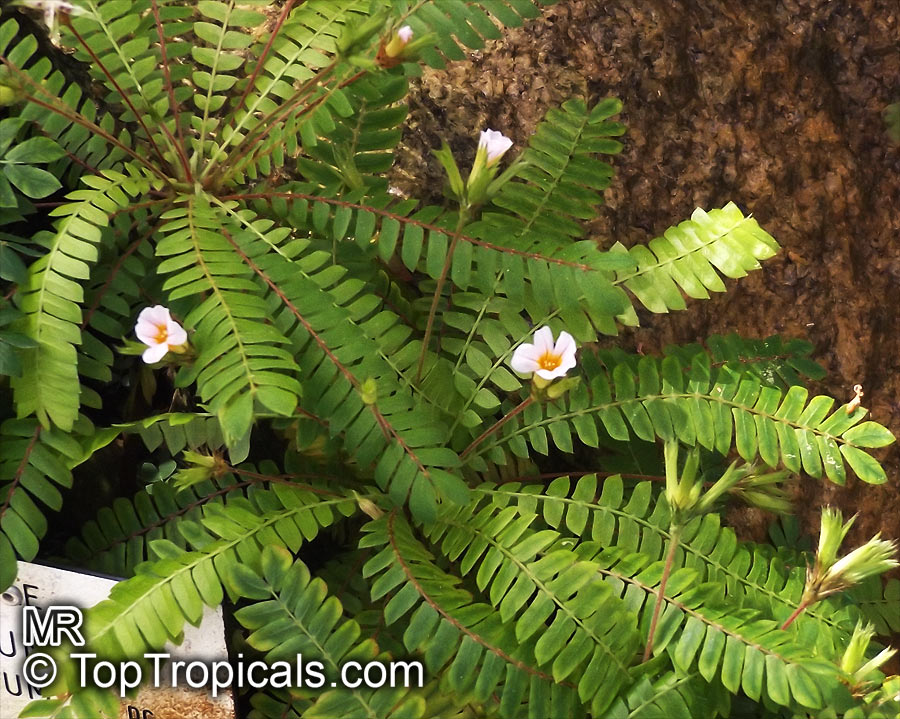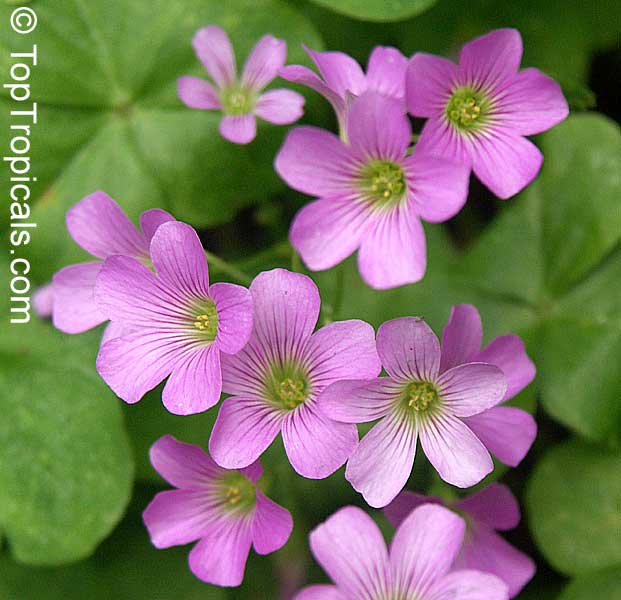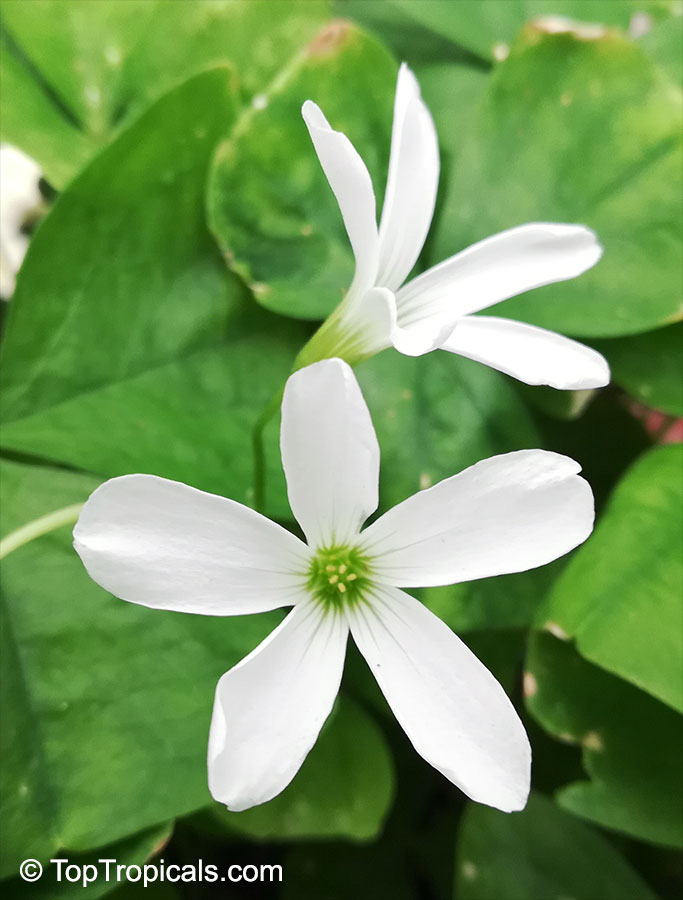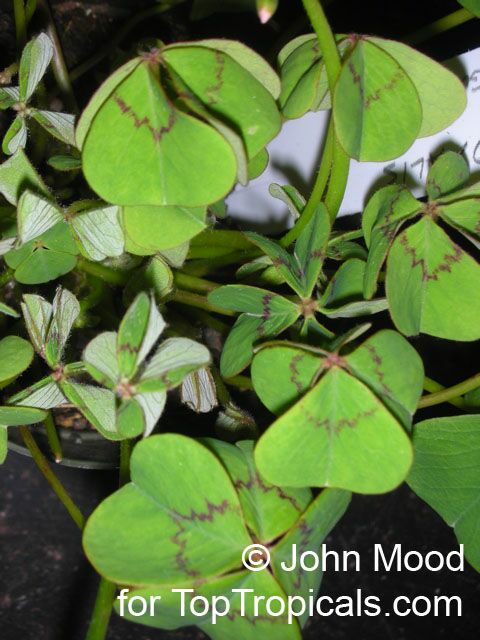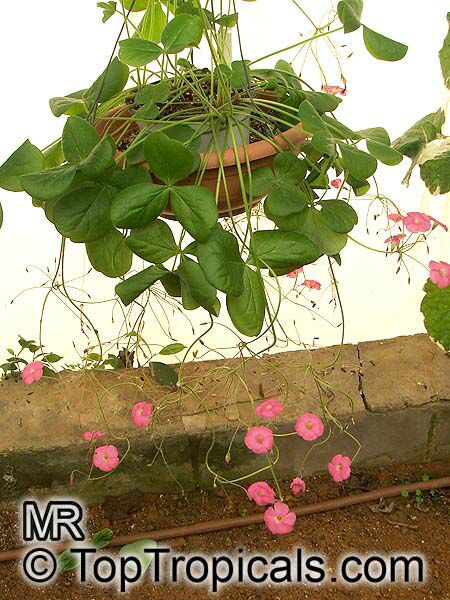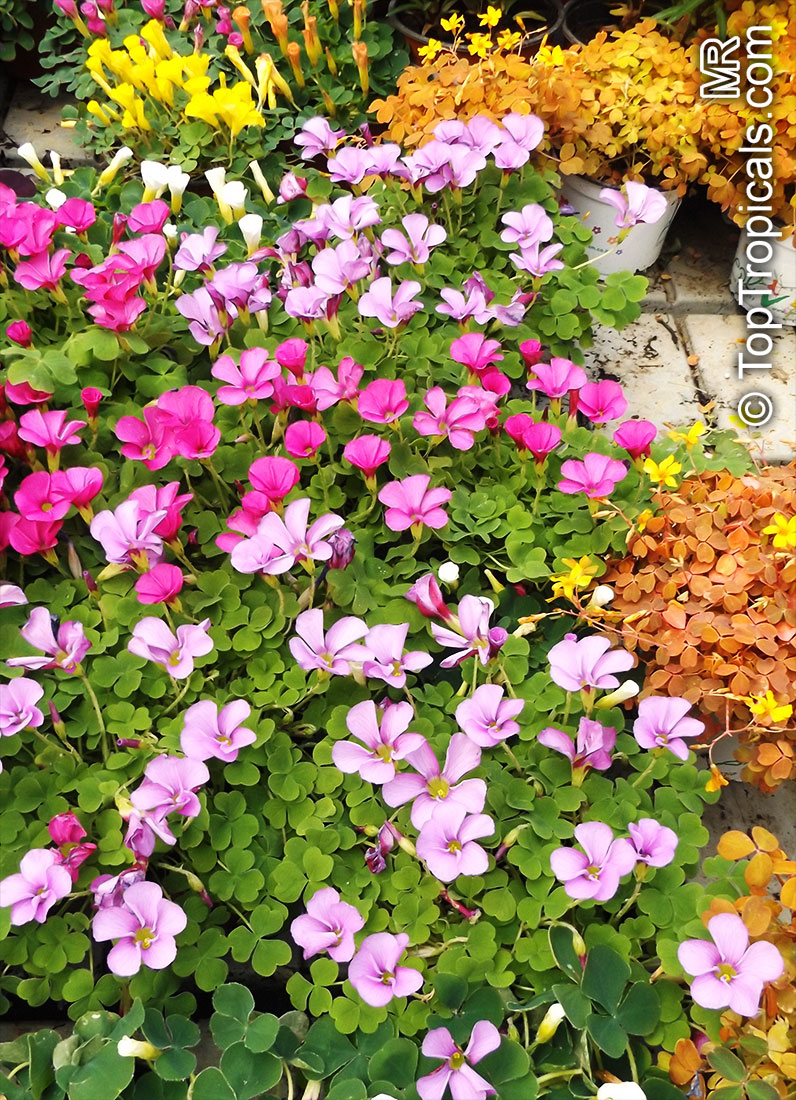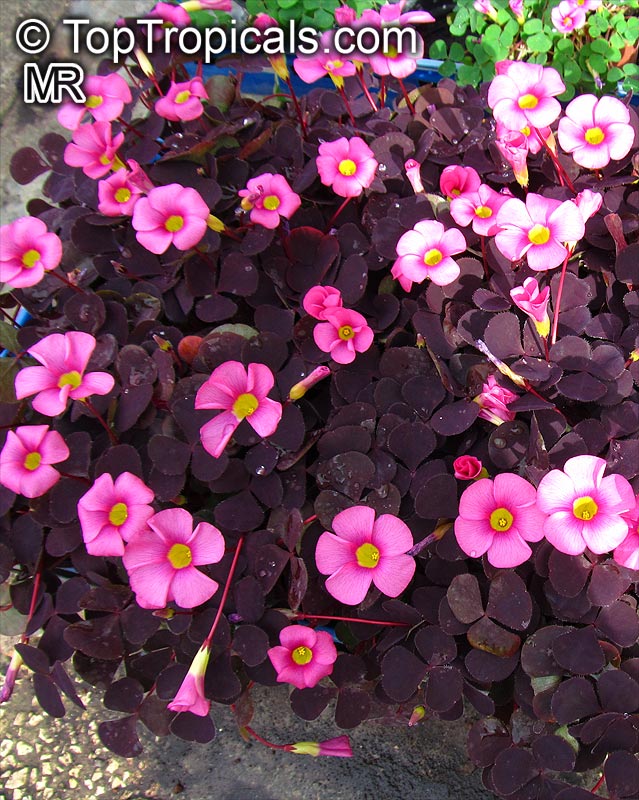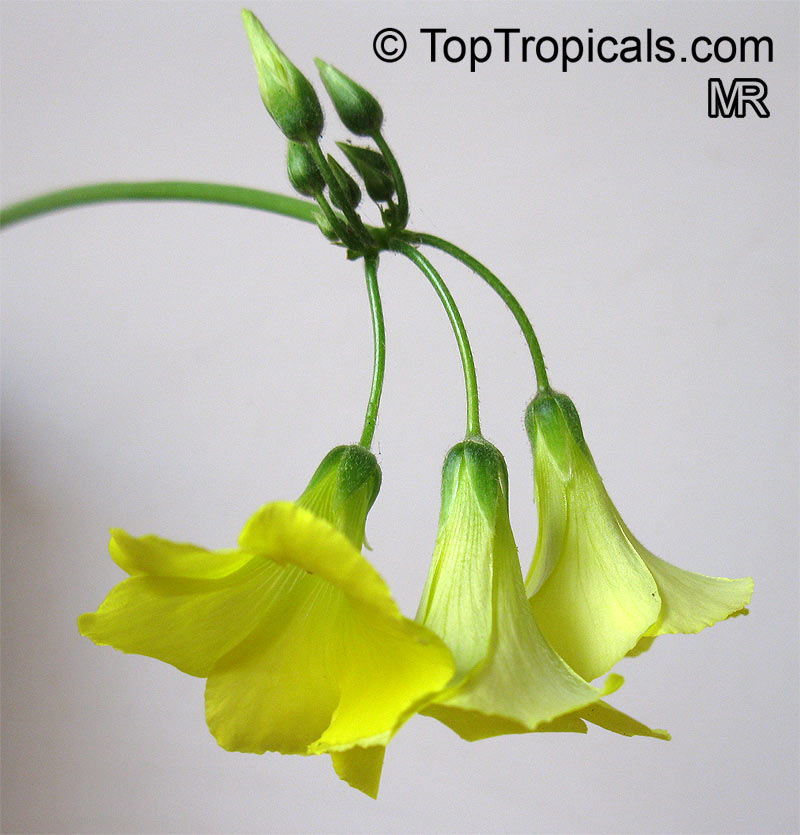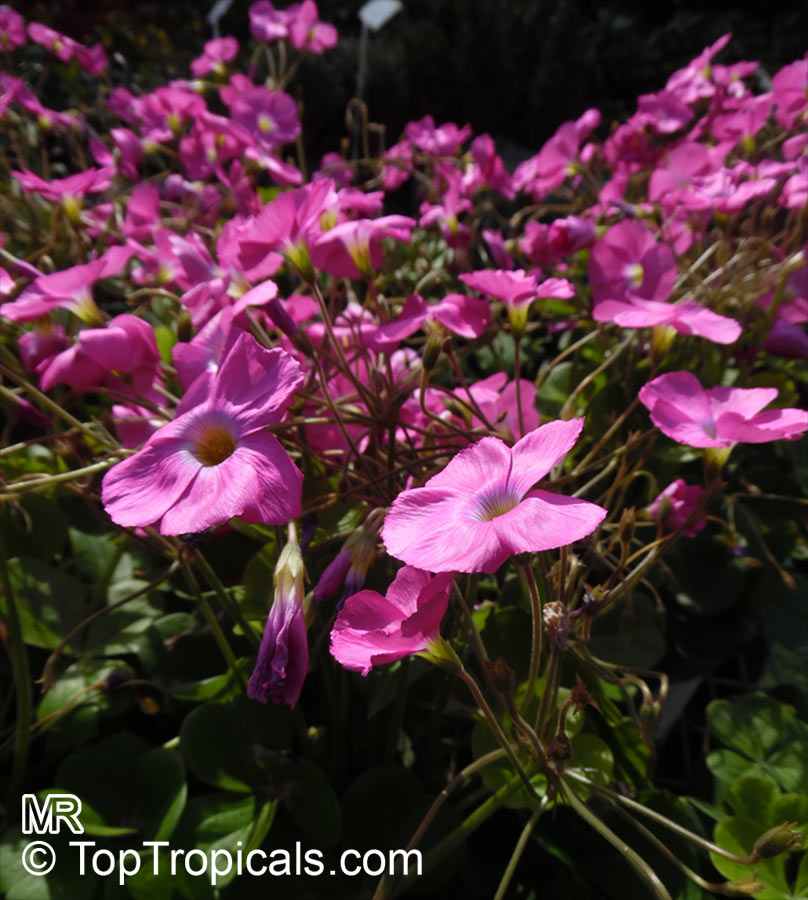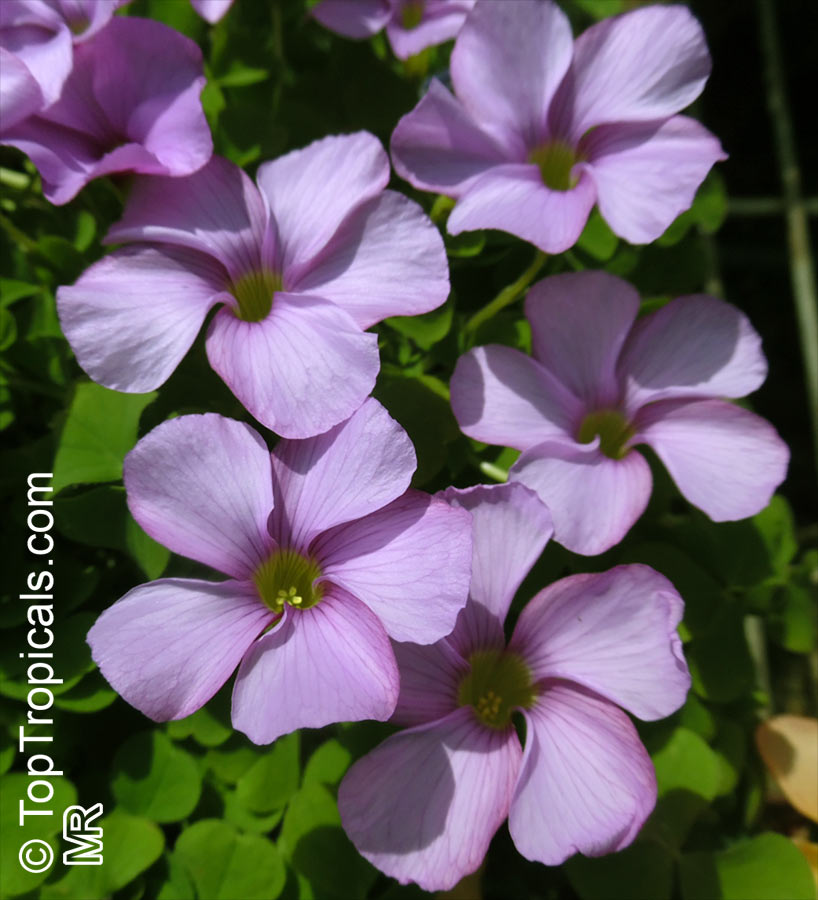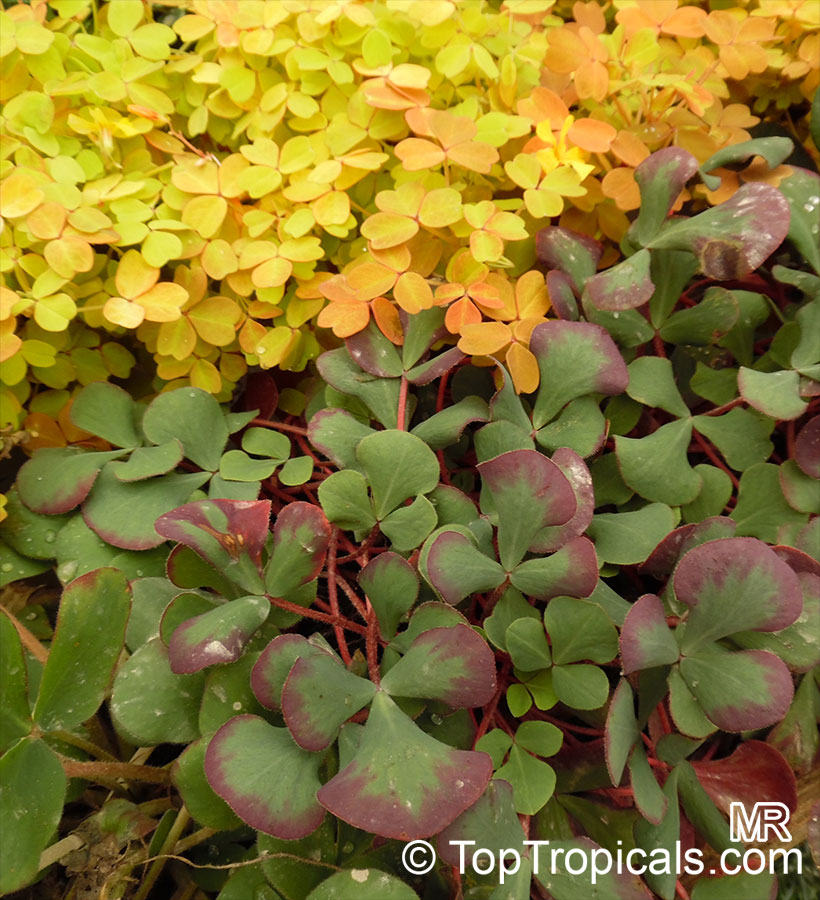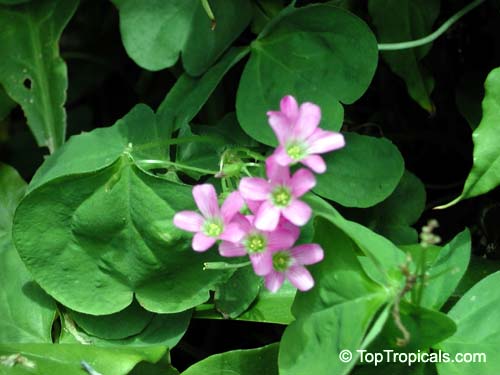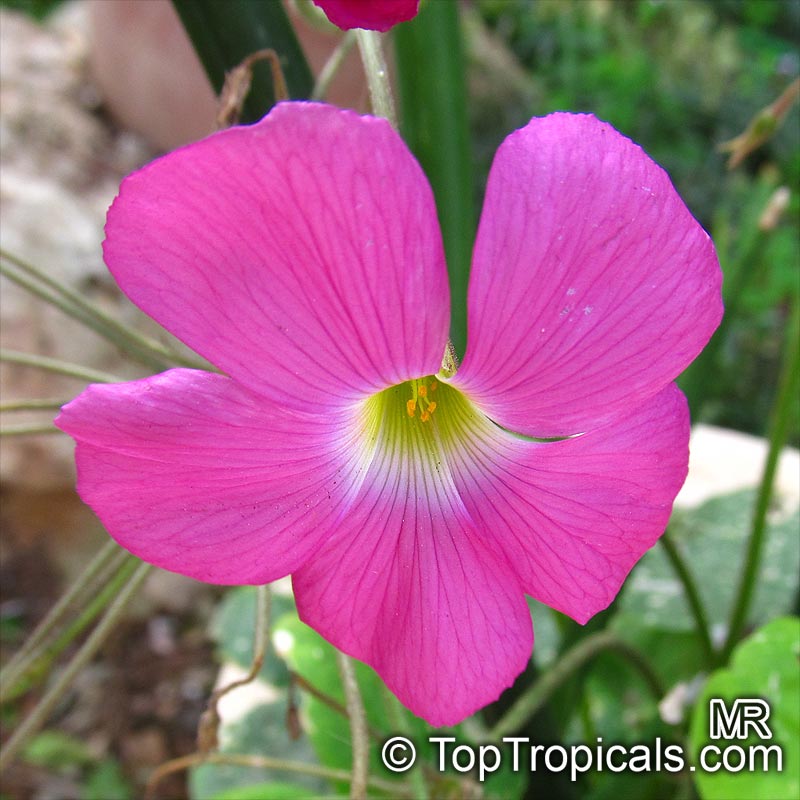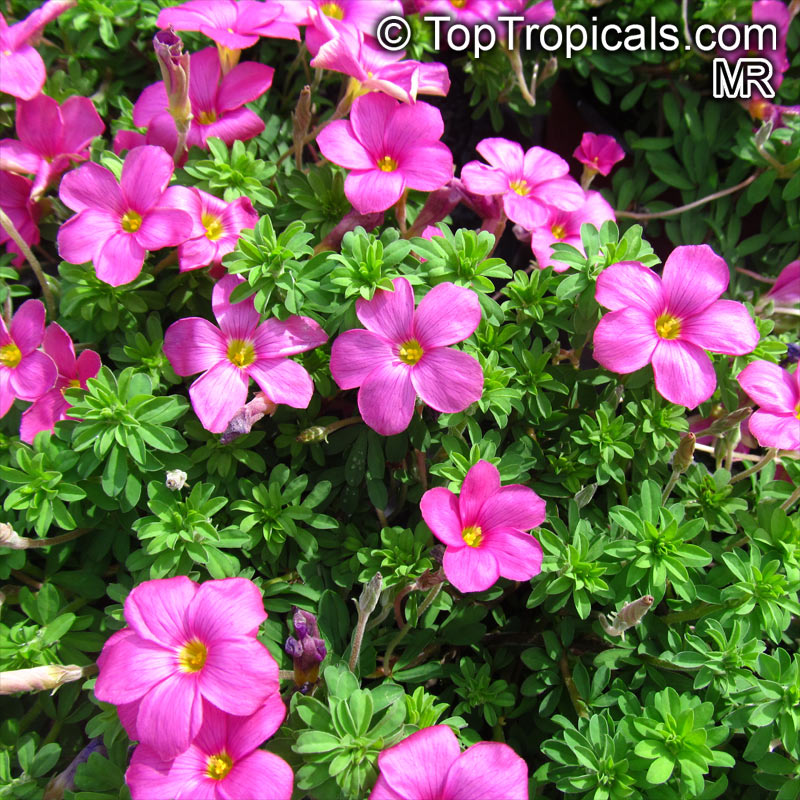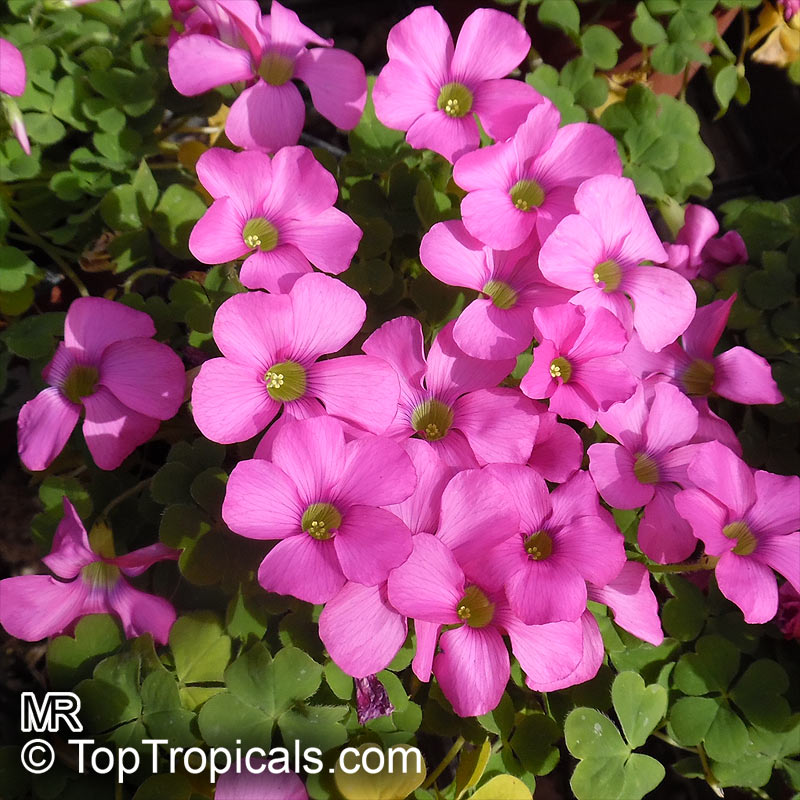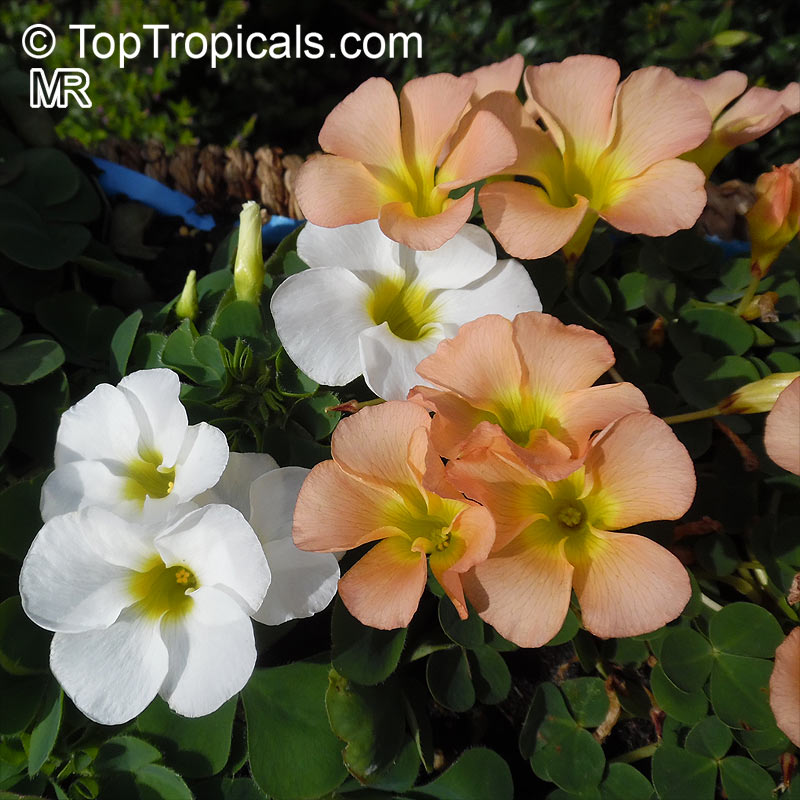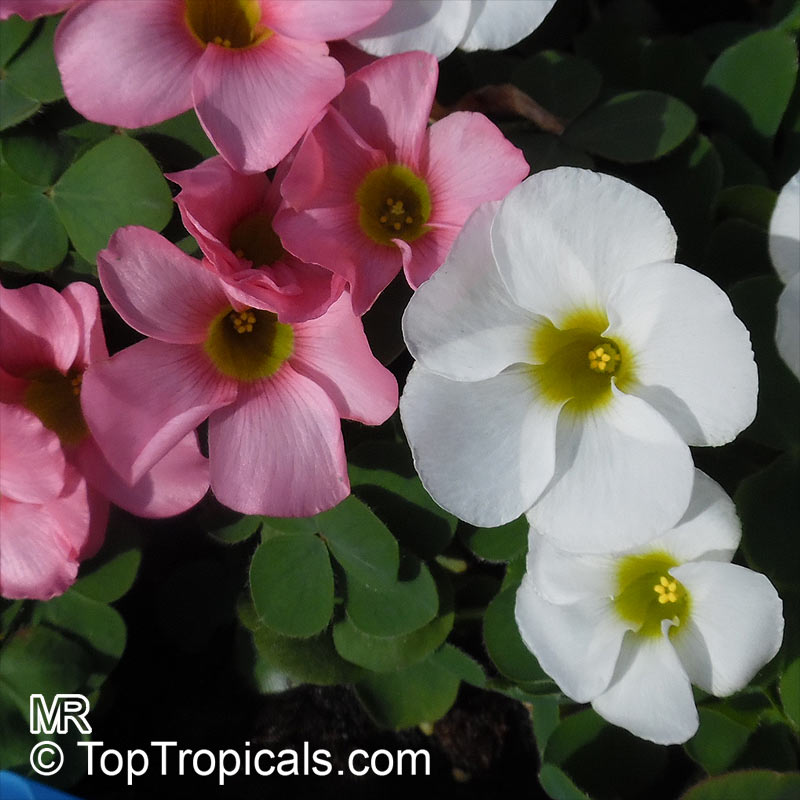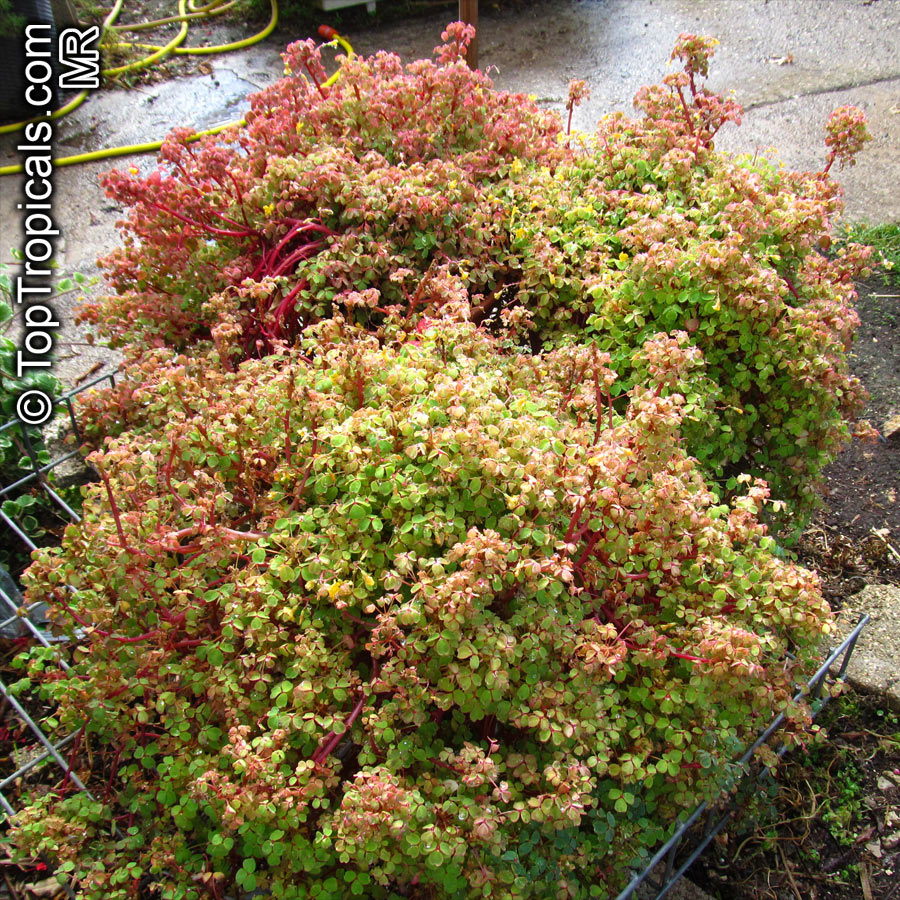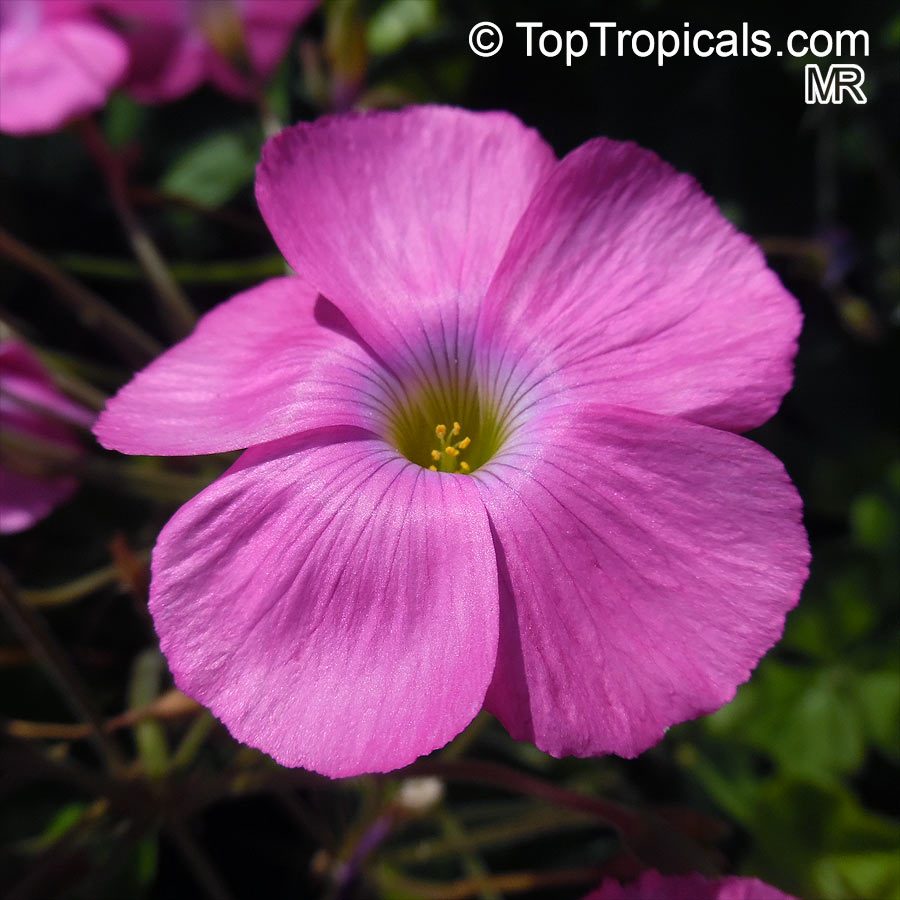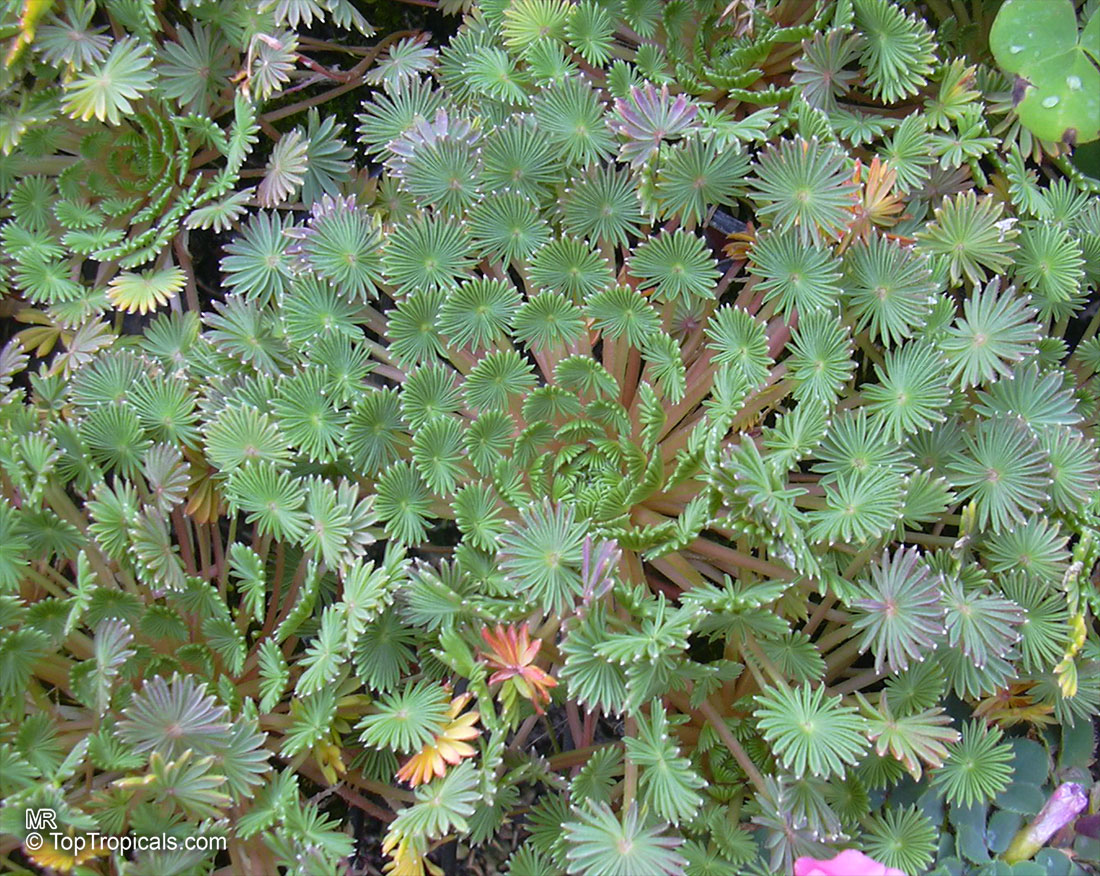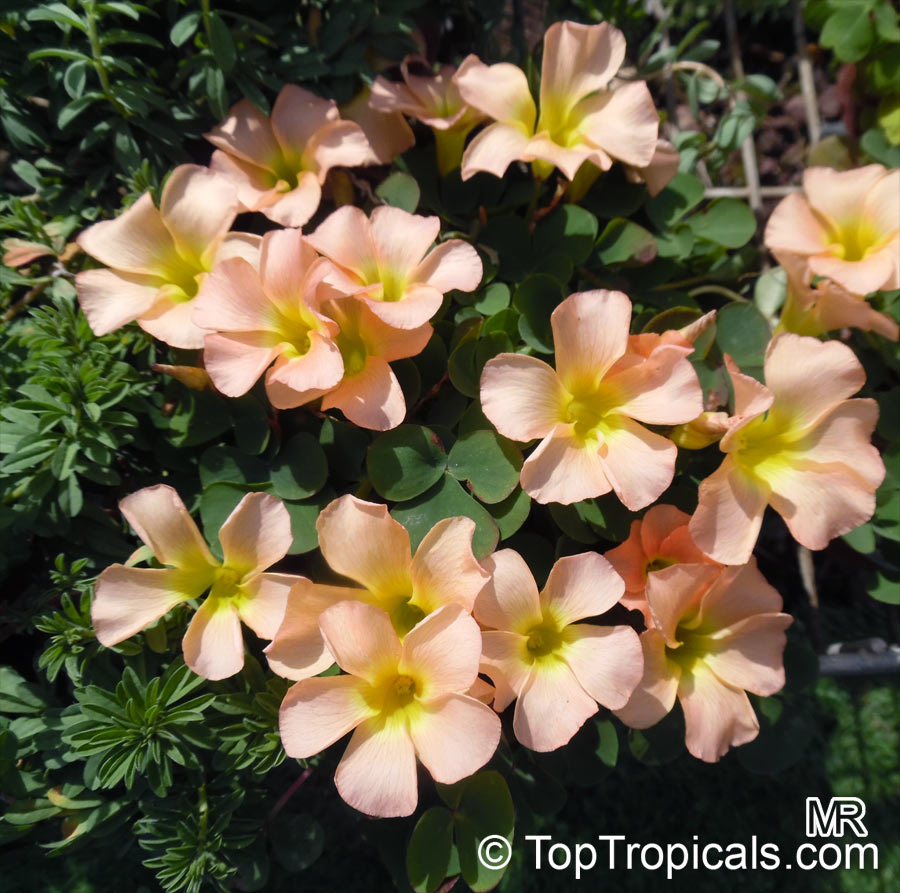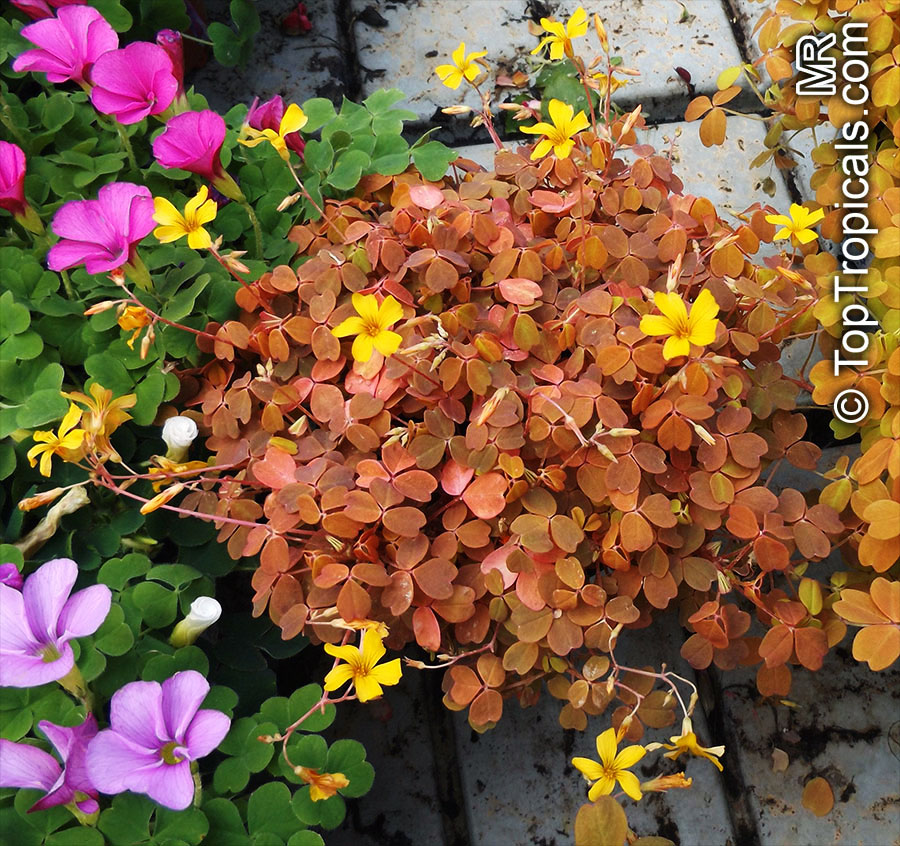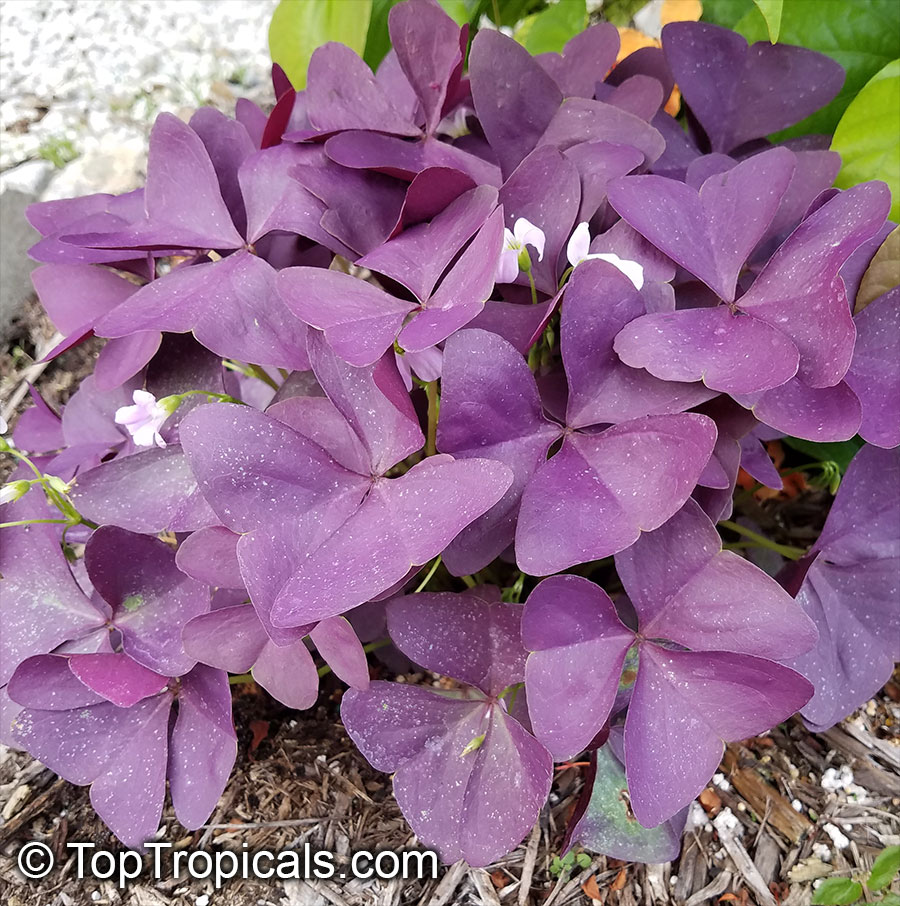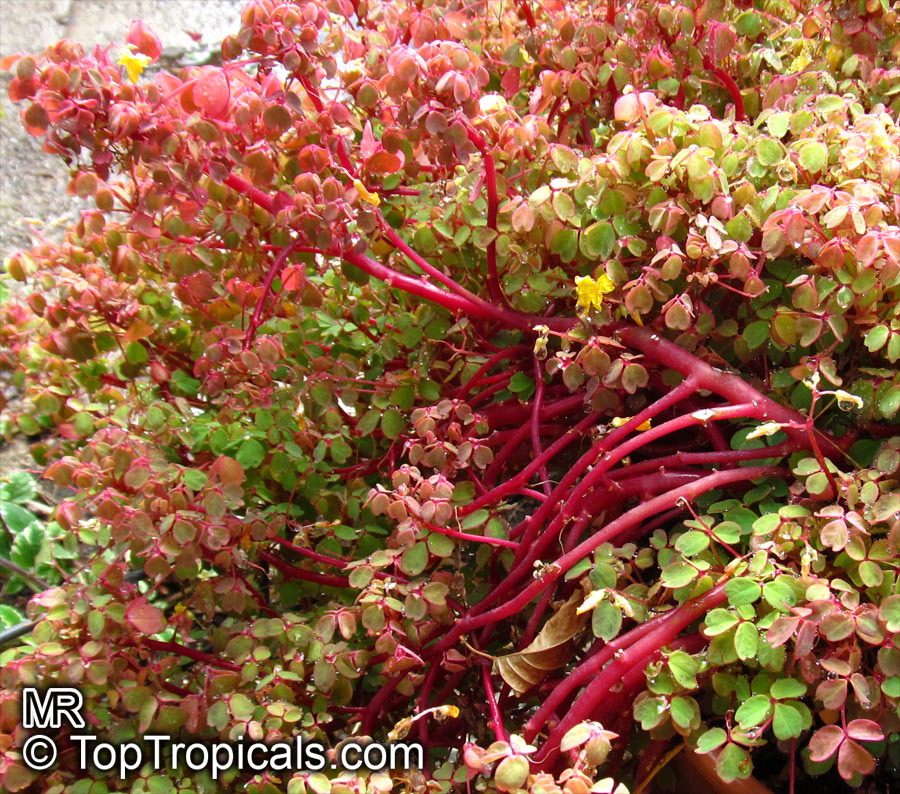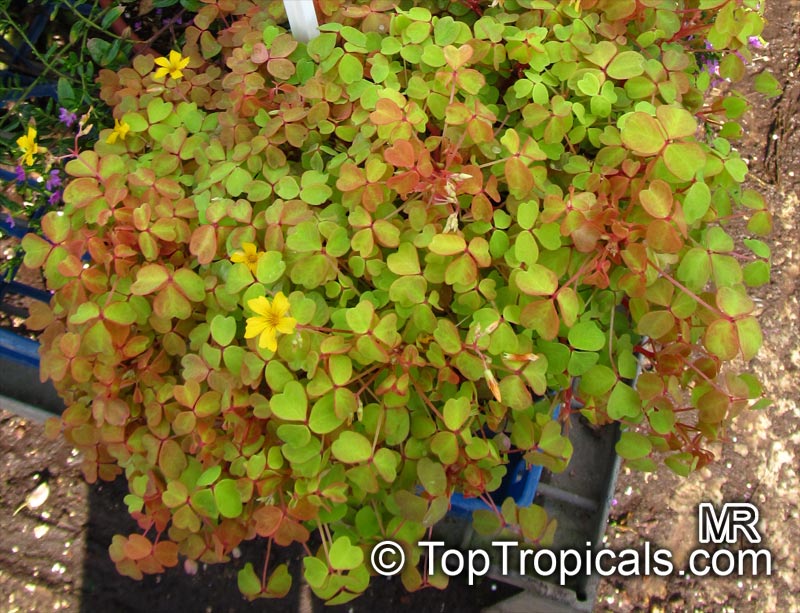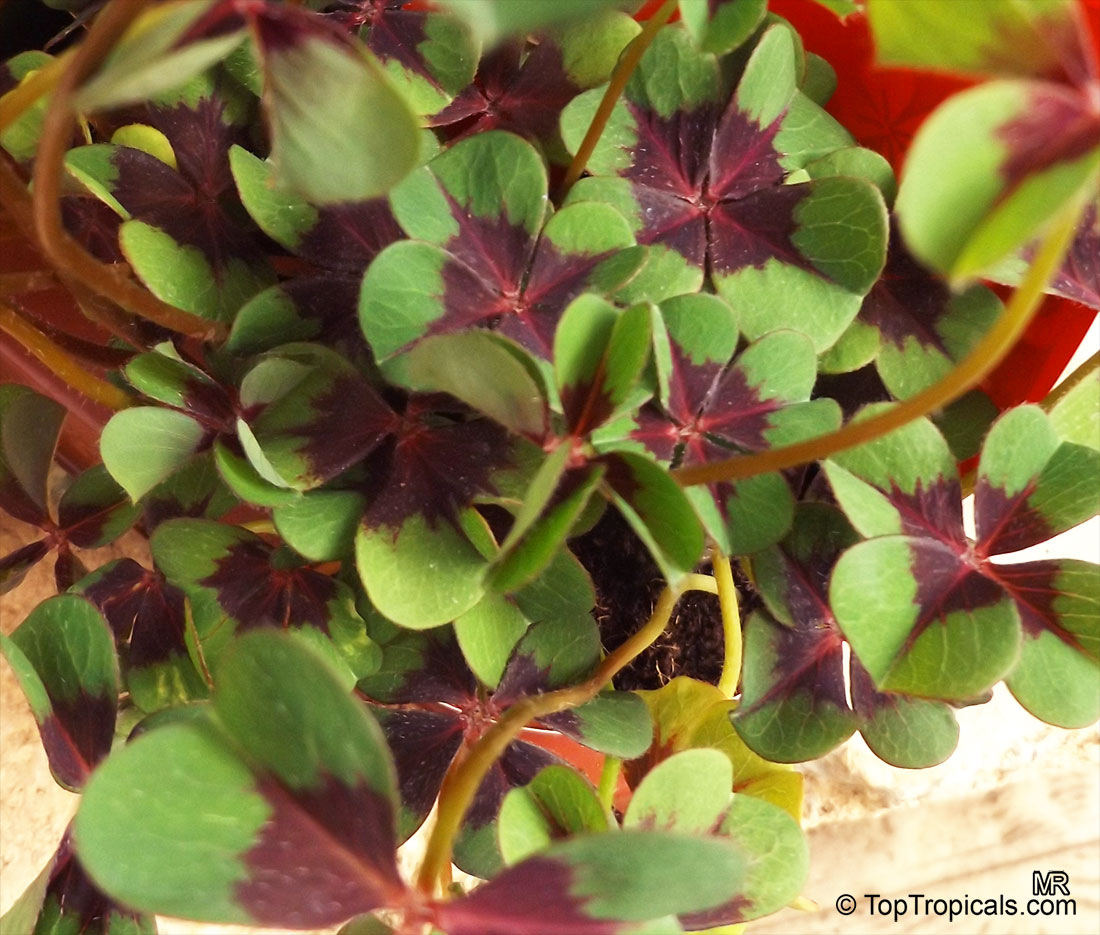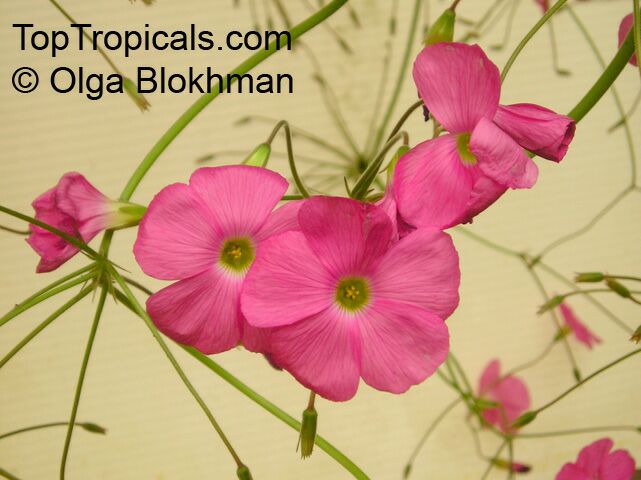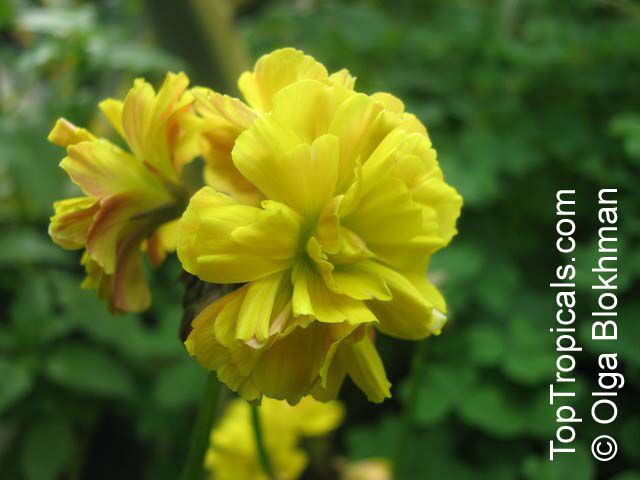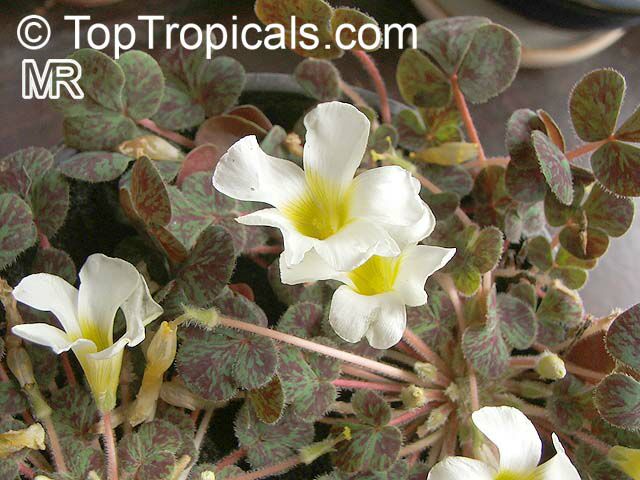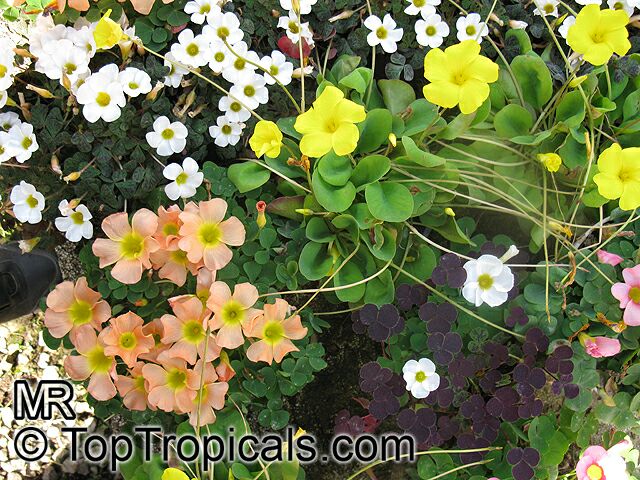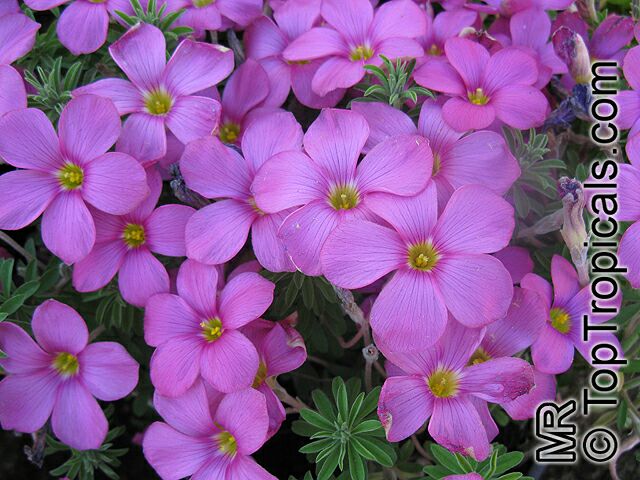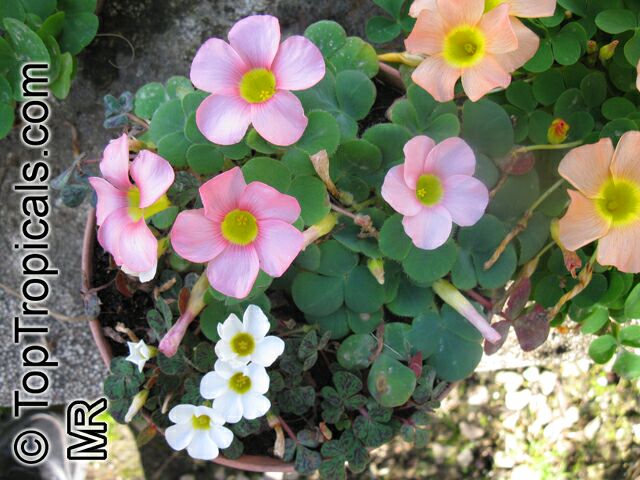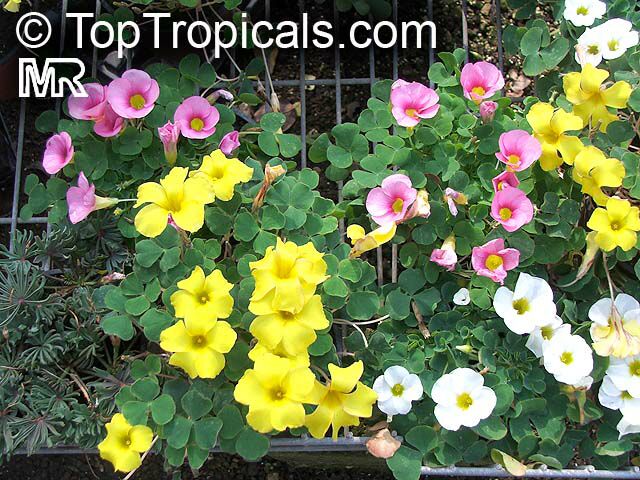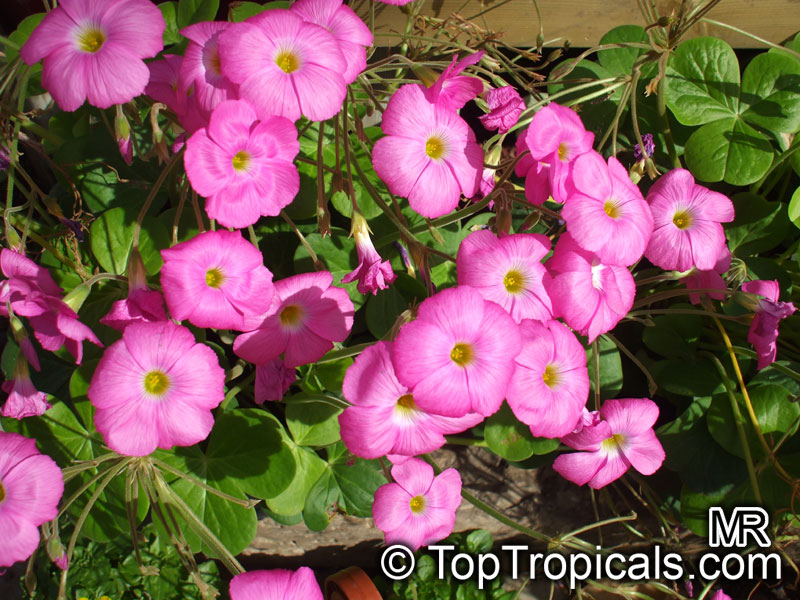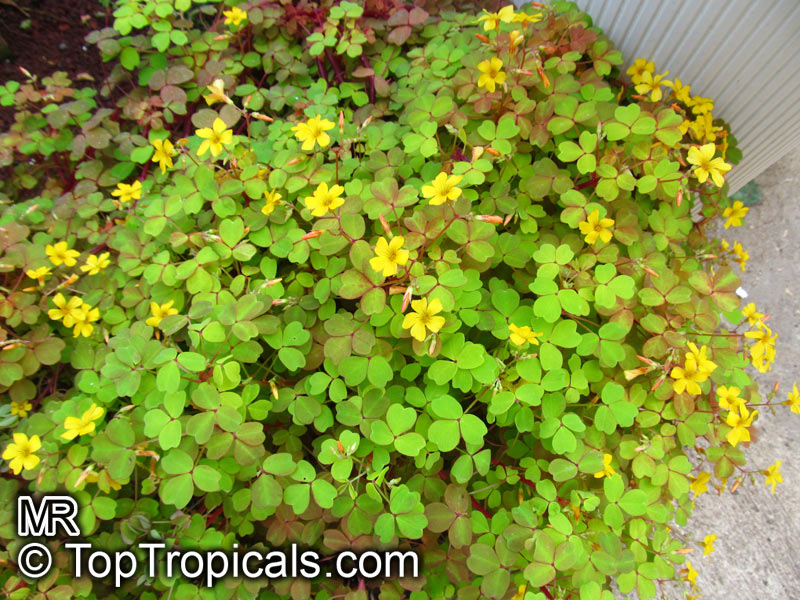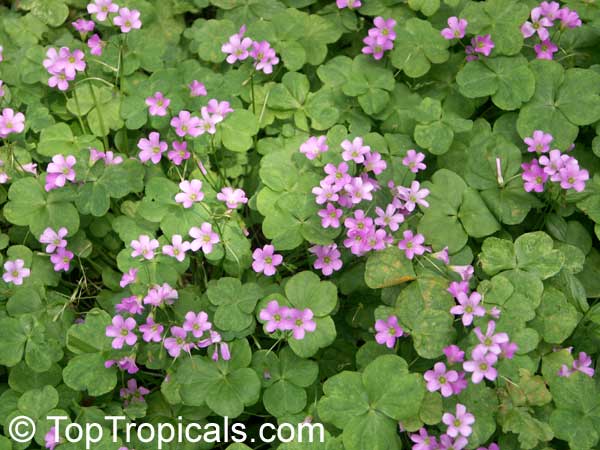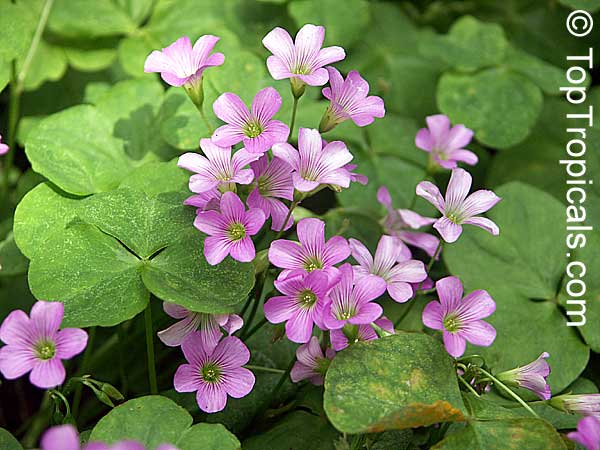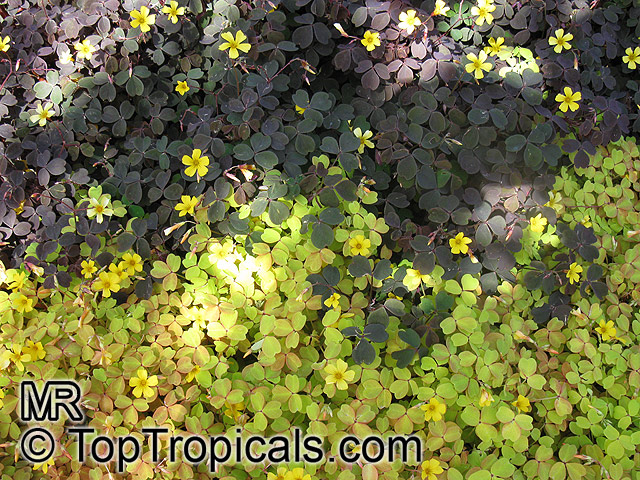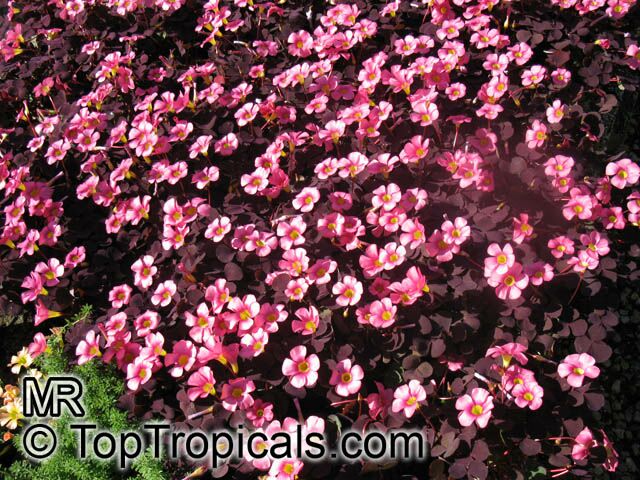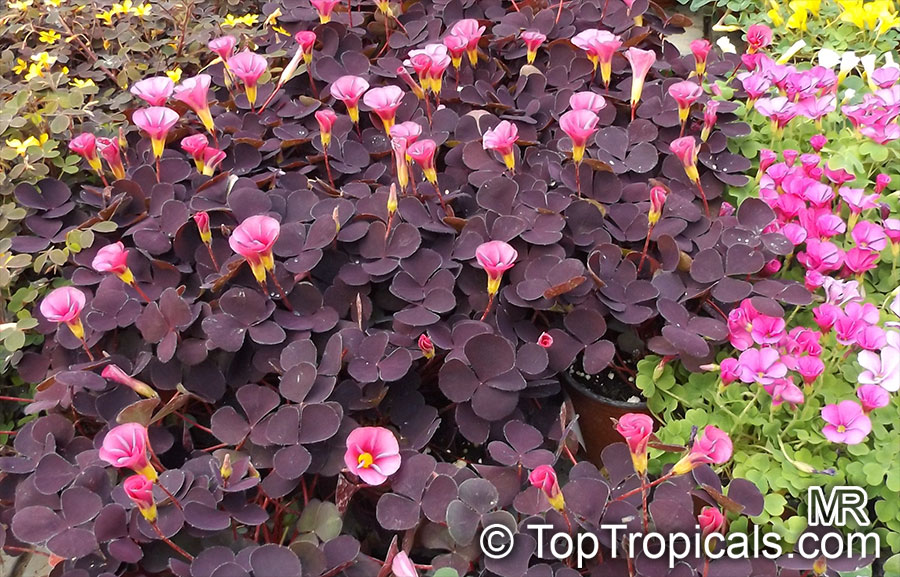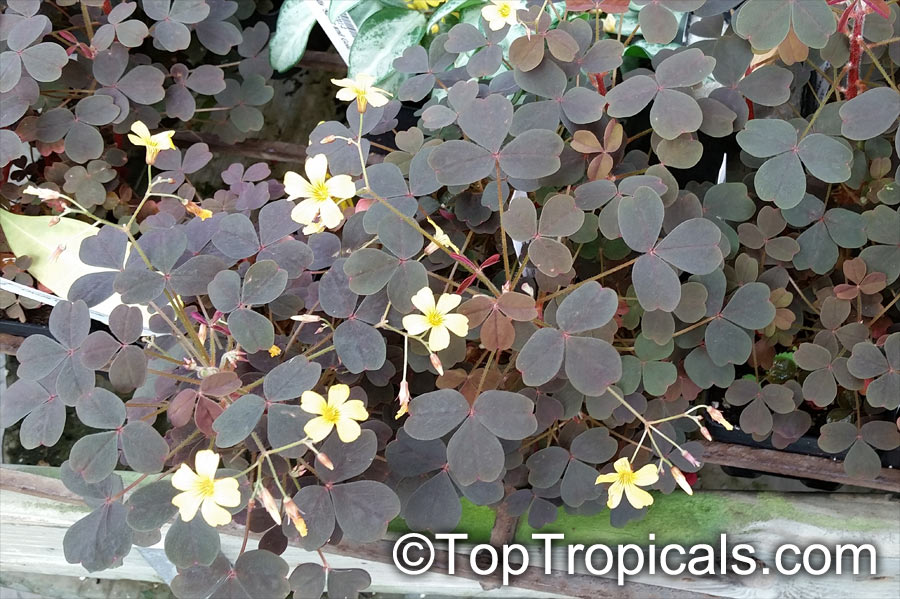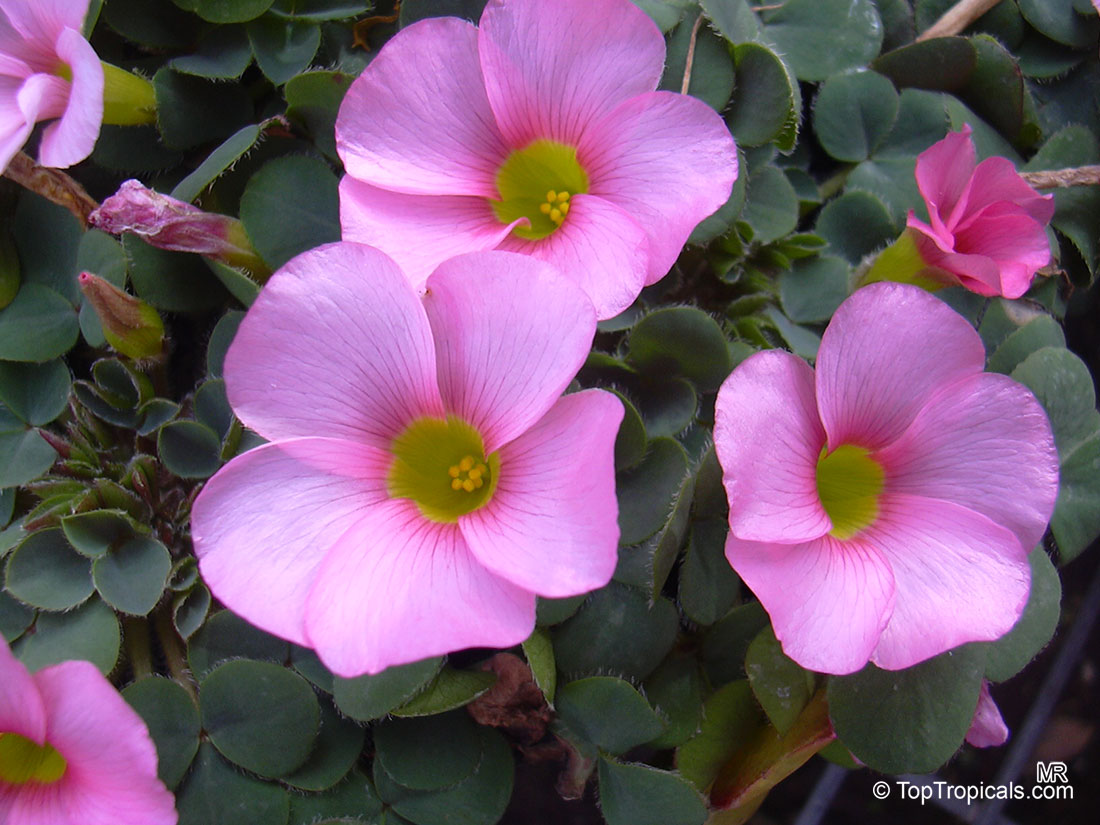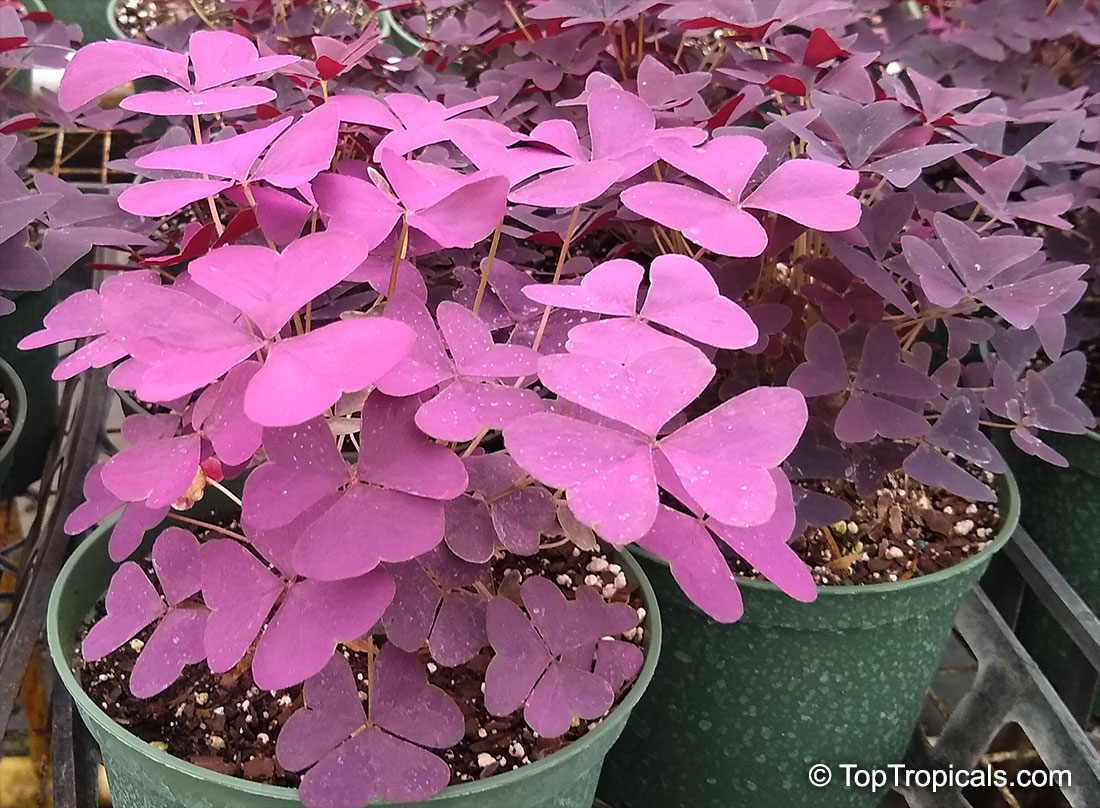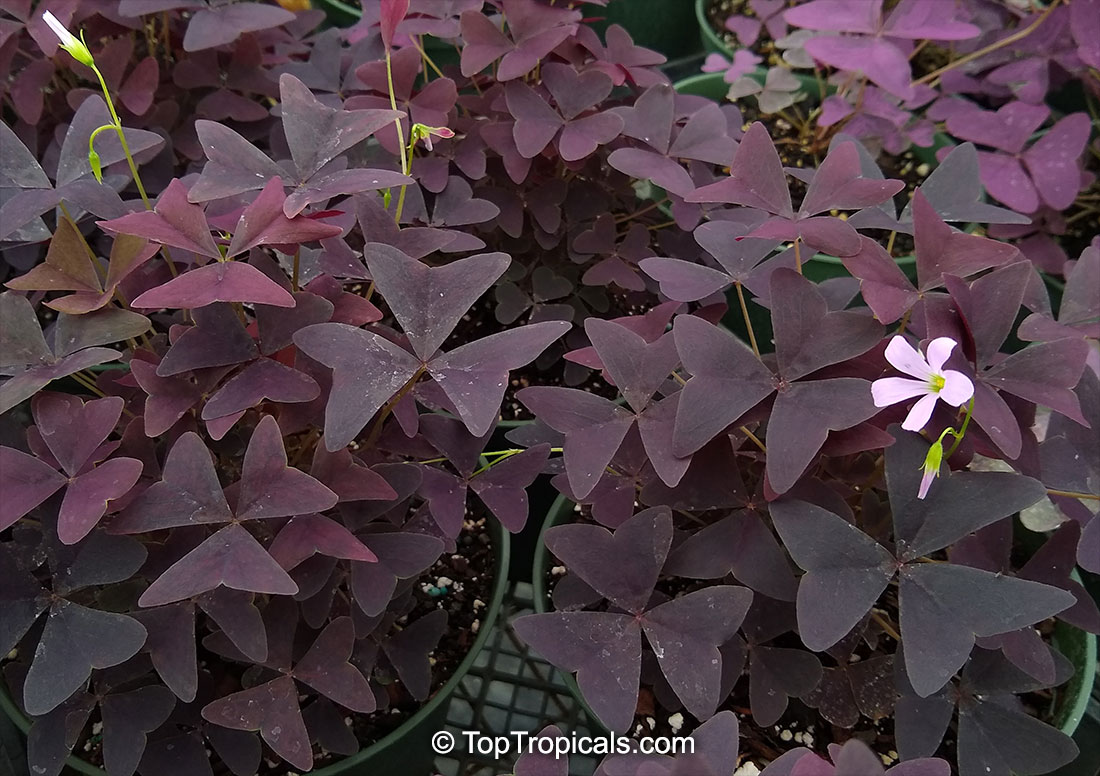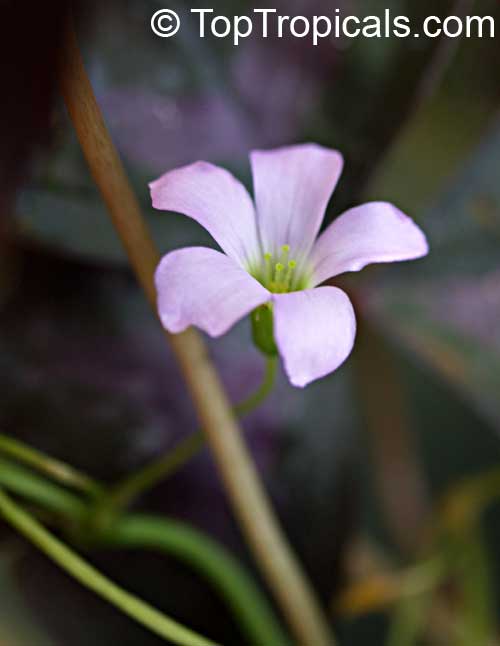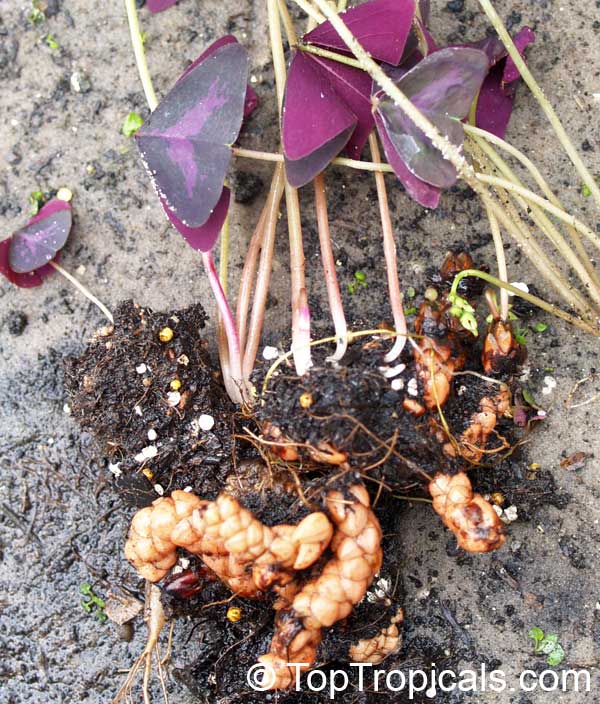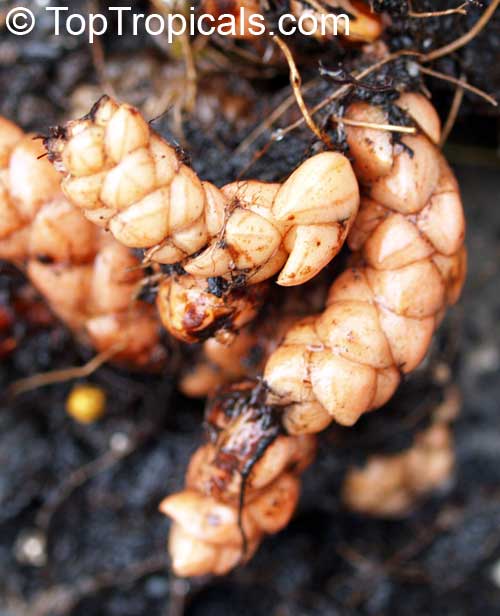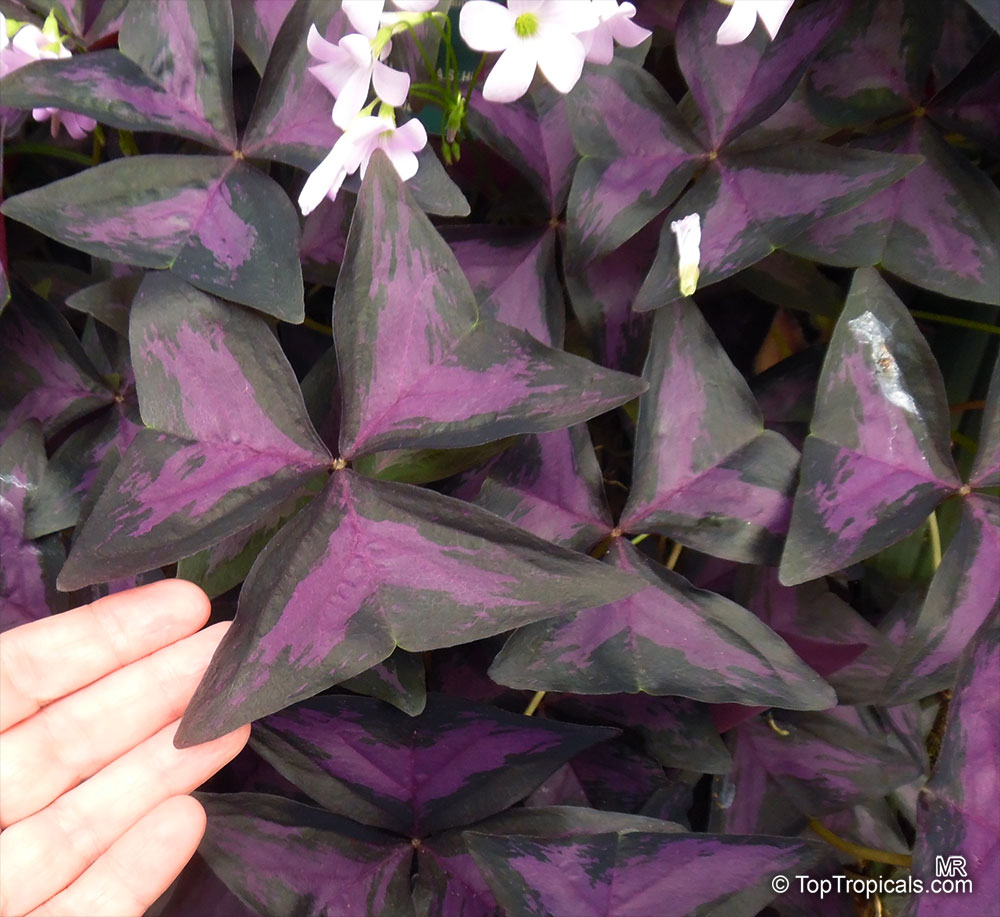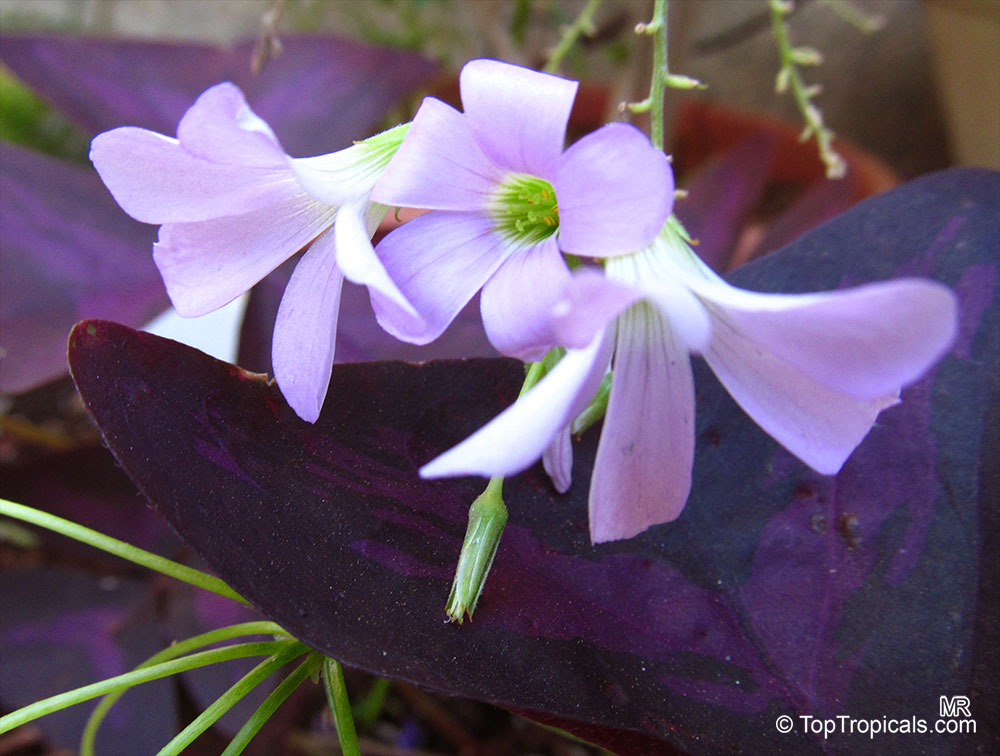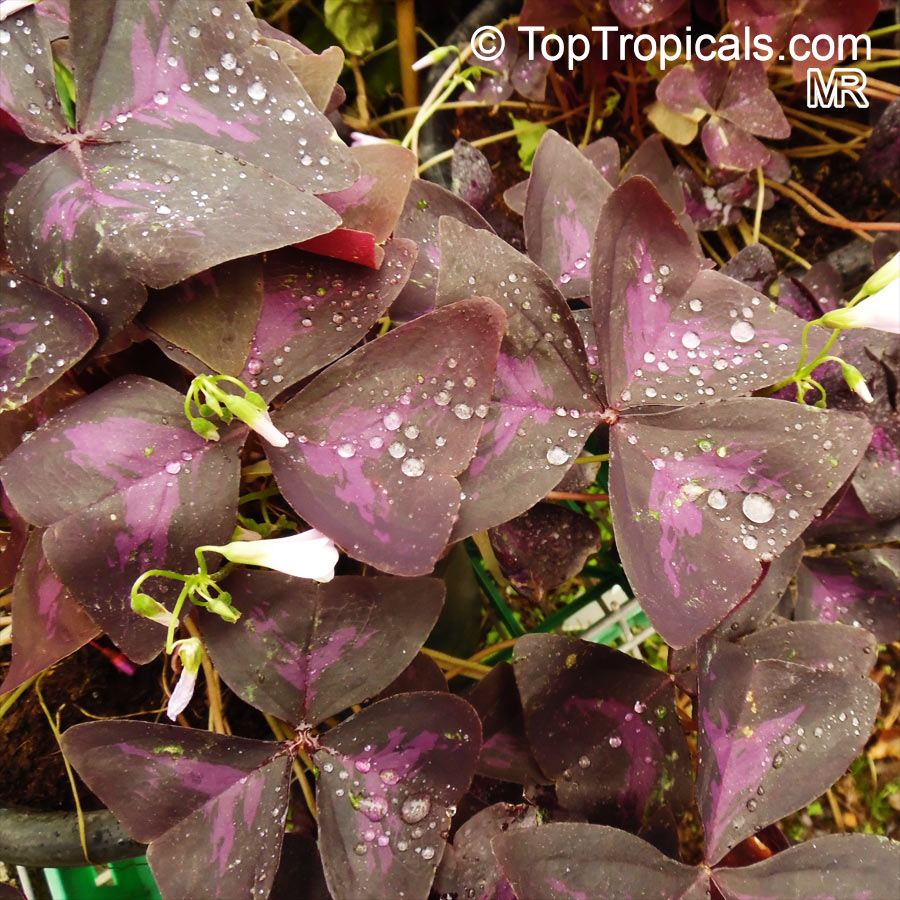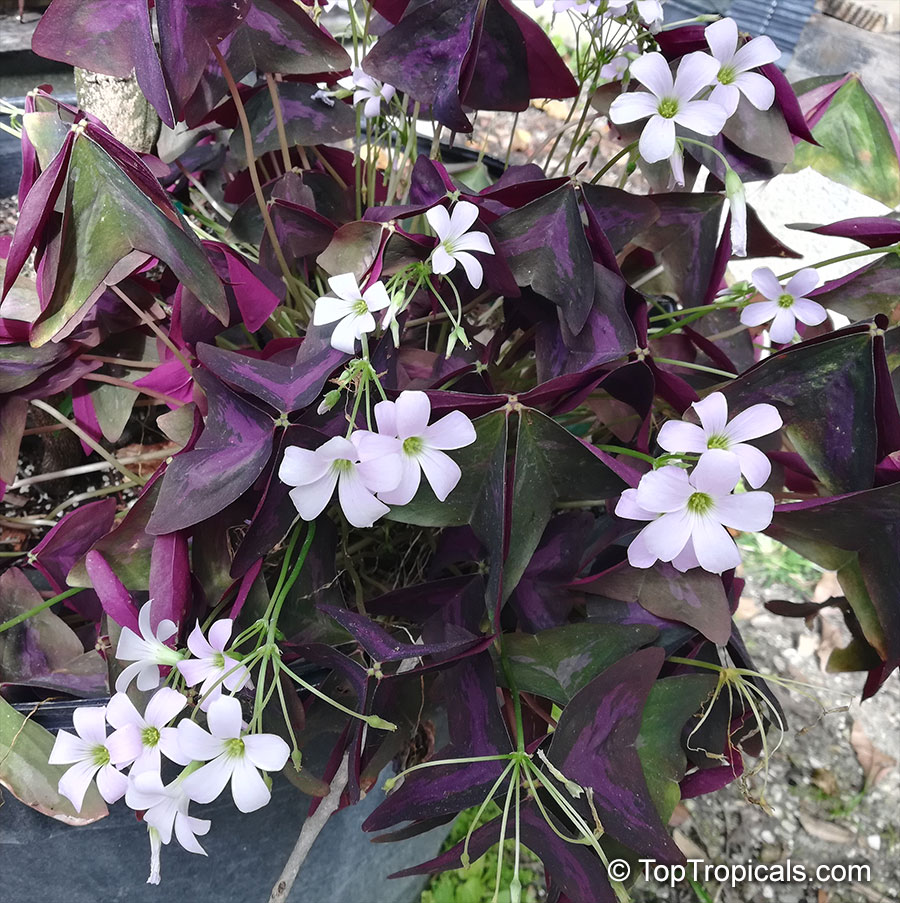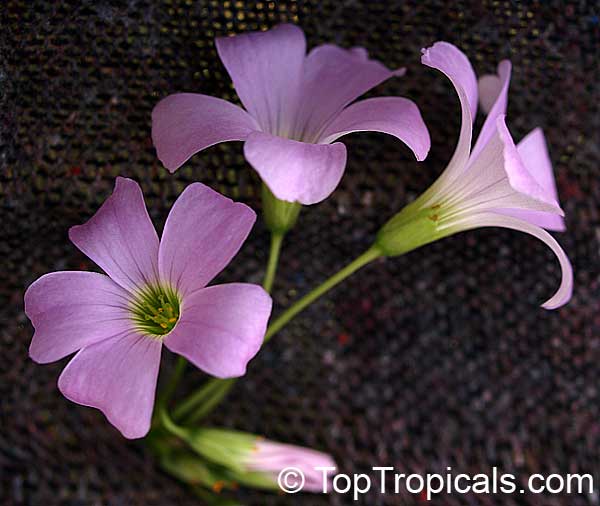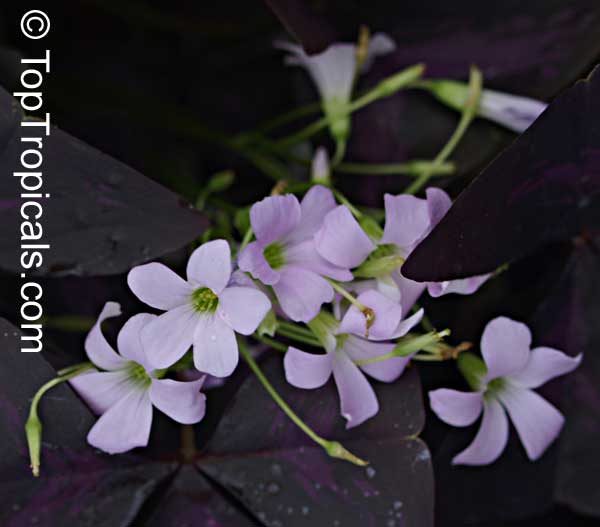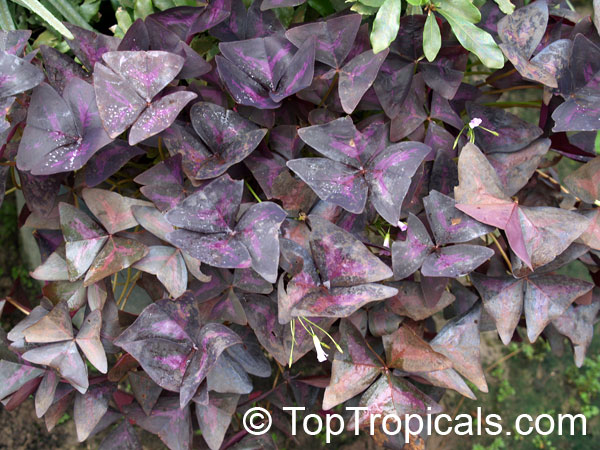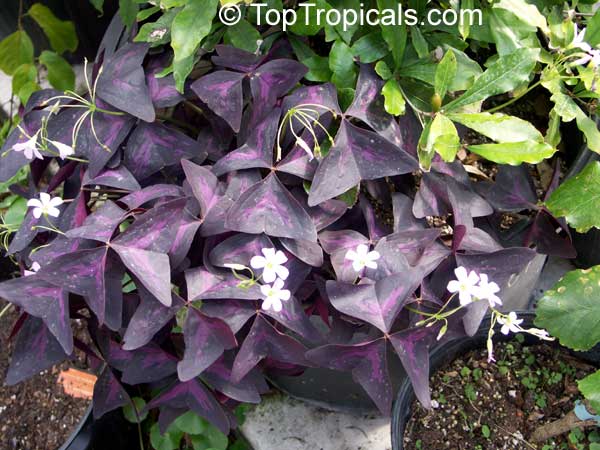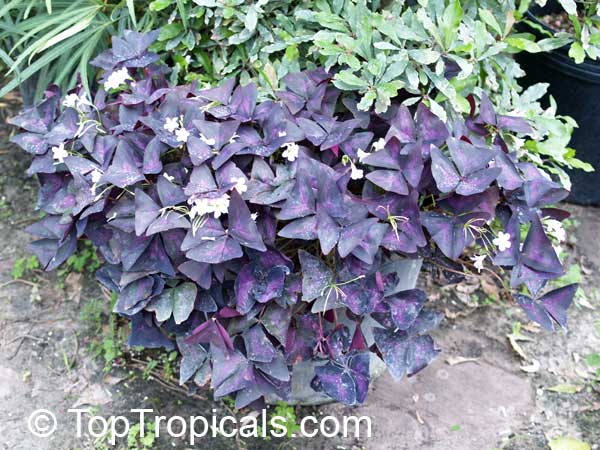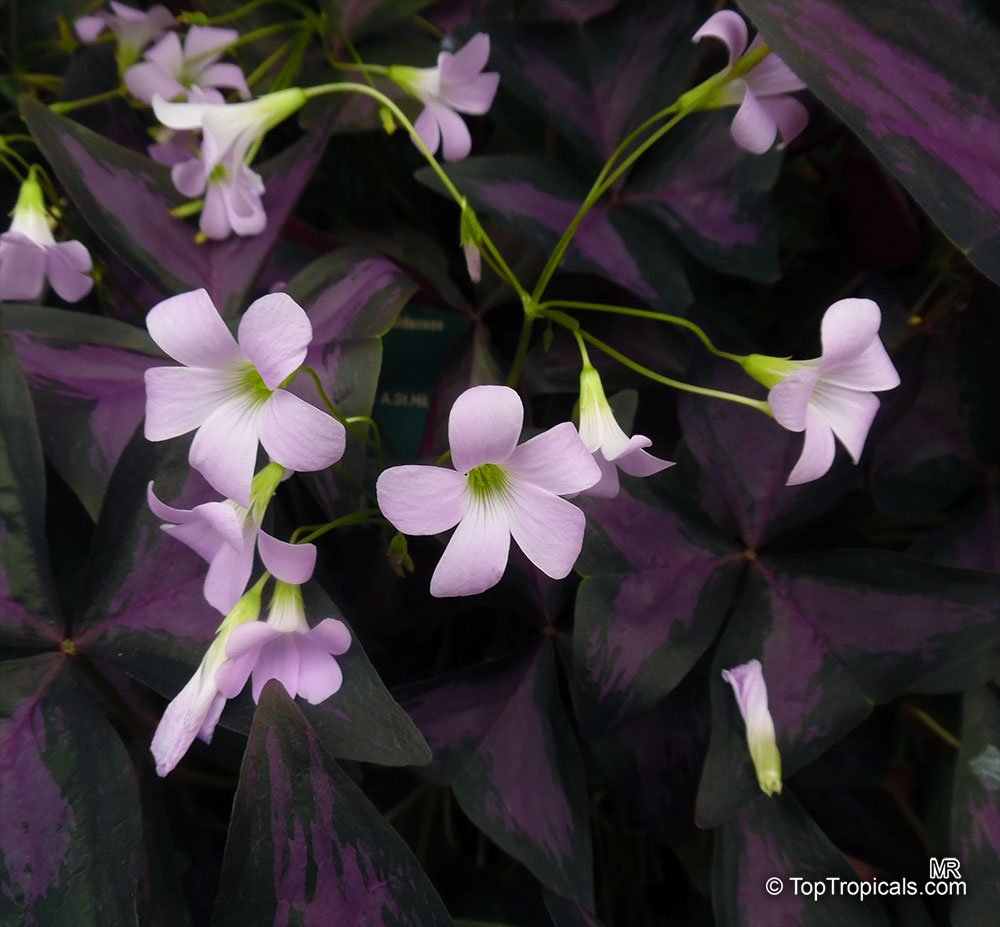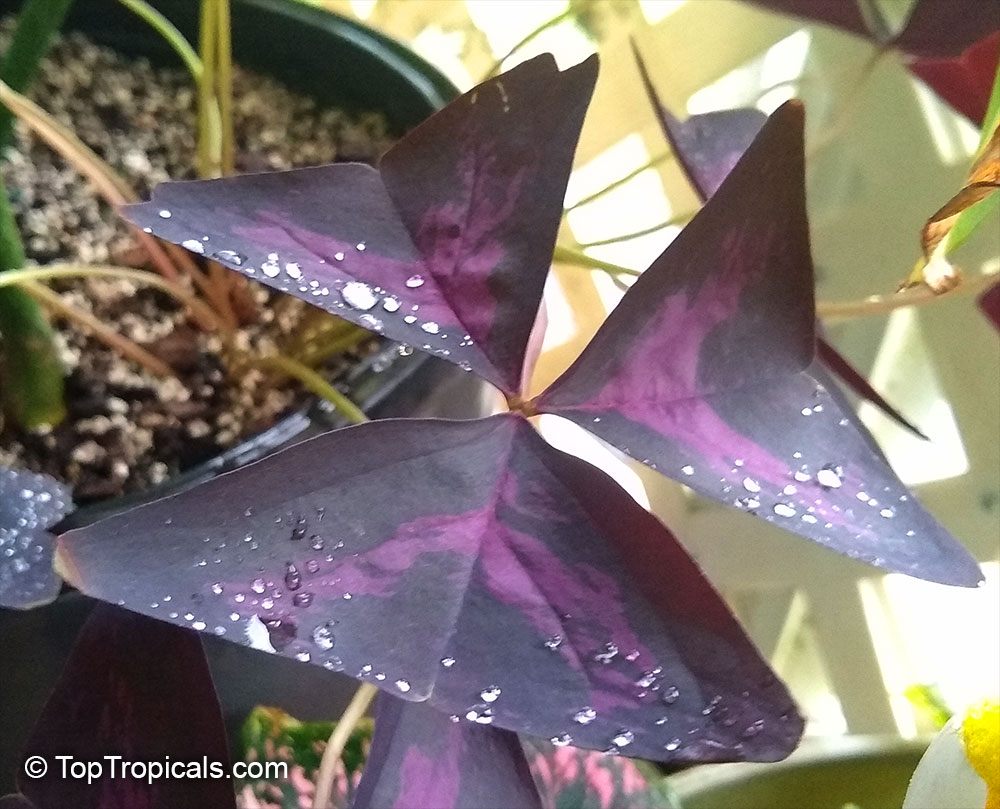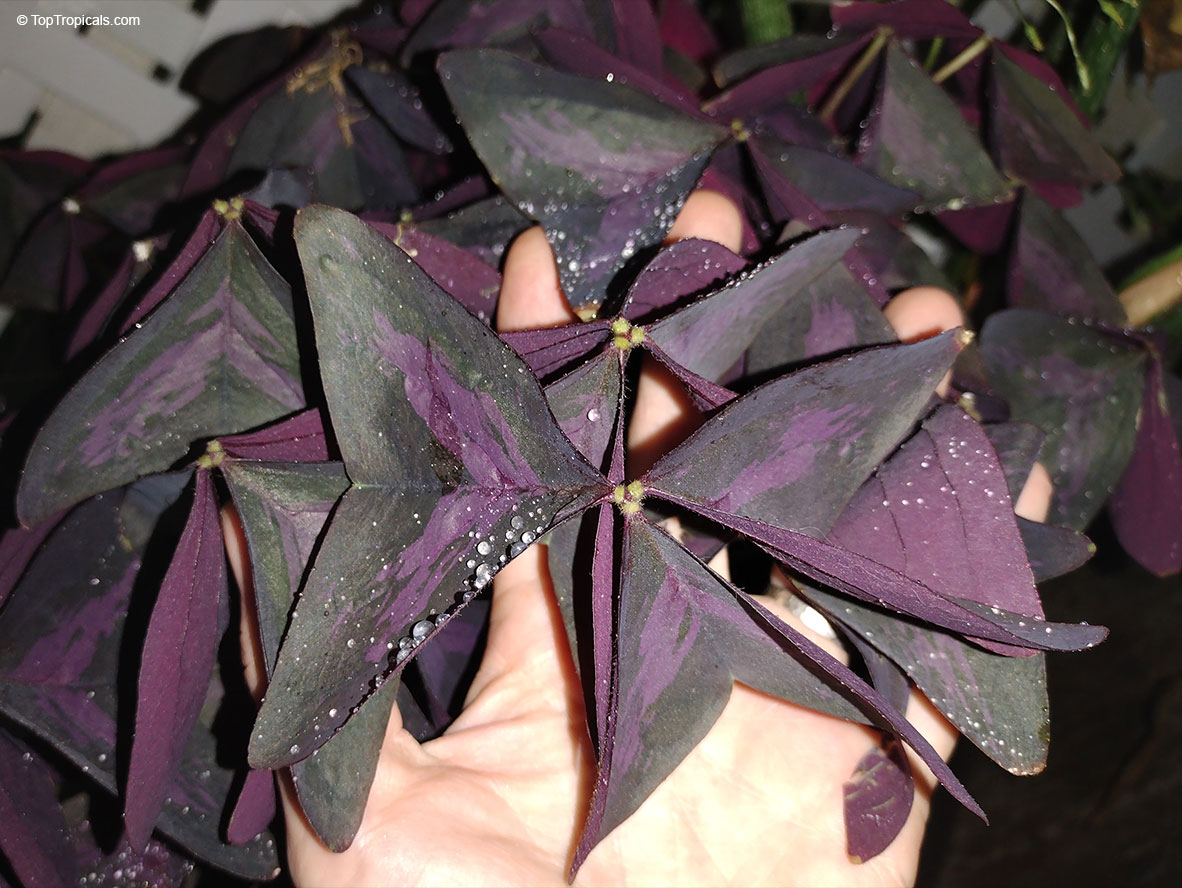Oxalidaceae - Botanical Family
Top Tropicals Plant Encyclopedia
| Number of plants found: 5 |
Botanical name: Averrhoa bilimbi
Common names: Bilimbi, Cucumber Tree, Tree Sorrel, Kamias, Belimbing Asam, Belimbing Buloh, Membrillo
Family: Oxalidaceae
Origin: Moluccas





It is very common in Thailand, Malaya and Singapore. The bilimbi is closely allied to the carambola but quite different in appearance, manner of fruiting, flavor and uses. The only strictly English names are "cucumber tree" and "tree sorrel". "Bilimbi" is the common name in India and has become widely used. The tree is attractive, reaches 35 ft in height. Small, fragrant, yellowish-green or purplish flowers marked with dark-purple, are borne in small, hairy panicles emerging directly from the trunk and oldest, thickest branches and some twigs, as do the clusters of curious fruits resembling small cucumbers that grow on strunk and stems. The bilimbi is generally regarded as too acid for eating raw, but in some places, the green, uncooked fruits are prepared as a relish. Ripe fruits are frequently added to curries in the Far East or used in place of mango to make chutney. The fruit juice is popular for making cooling beverages on the order of lemonade. To reduce acidity, it may be first pricked and soaked in water overnight and boiled with sugar to make a jam or an acid jelly. Half-ripe fruits are salted, set out in the sun, and pickled in brine and can be thus kept for 3 months. A quicker pickle is made by putting the fruits and salt into boiling water. This product can be kept only 4 to 5 days. The flowers are sometimes preserved with sugar.
In Costa Rica, these tree is called membrillo = little dick fruits.
See picture of the actual tree for sale.
Shipped at customers risk, no replacements or refunds. Leaf drop possible. We guarantee healthy plant to be shipped and the best packaging. Express shipping optional.
Recommended Fertilizer: SUNSHINE C-Cibus - Crop Nutrition Booster
SUNSHINE-Honey - sugar booster
Botanical name: Averrhoa carambola
Common names: Carambola, Starfruit, Five-finger, Balimbing
Family: Oxalidaceae
Origin: South East Asia






Season: August - March. Small symetrical tree. Red and white flowers appear on bare branches or at leaf bases. Fruit has a thin, waxy, green-yellow, yellow or orange skin. Oblong and five-angled it is star-shaped when cut across the middle. It has a sweet, watery, slightly acid, pleasant tasting pulp that is eaten raw or preserved. Seedlings have been known to bear in 3 years. Large trees have been known to survive 26°F without damage but young trees must be protected from frost and wind. Fruits very prolifically. Eaten fresh, in salads, as garnishes and in drinks. Varieties: Arkin, Fwang Tung, Kari, Sri Kembangan. The plant will fruit in container even when in small size (2-3 ft).
Recommended Fertilizer: SUNSHINE C-Cibus - Crop Nutrition Booster
SUNSHINE-Honey - sugar booster
Recommended Fertilizer: SUNSHINE C-Cibus - Crop Nutrition Booster
SUNSHINE-Honey - sugar booster
This item can not be shipped. Pick up only. We can provide local delivery around Ft. Myers or Sebring, Florida. Contact us for an estimate. Non-pickup orders are subject to restocking fees.
Last one
Recommended Fertilizer: SUNSHINE C-Cibus - Crop Nutrition Booster
SUNSHINE-Honey - sugar booster
Last one
Recommended Fertilizer: SUNSHINE C-Cibus - Crop Nutrition Booster
SUNSHINE-Honey - sugar booster
Recommended Fertilizer: SUNSHINE C-Cibus - Crop Nutrition Booster
SUNSHINE-Honey - sugar booster
Recommended Fertilizer: SUNSHINE C-Cibus - Crop Nutrition Booster
SUNSHINE-Honey - sugar booster
Recommended Fertilizer: SUNSHINE C-Cibus - Crop Nutrition Booster
SUNSHINE-Honey - sugar booster
Recommended Fertilizer: SUNSHINE C-Cibus - Crop Nutrition Booster
SUNSHINE-Honey - sugar booster
Recommended Fertilizer: SUNSHINE C-Cibus - Crop Nutrition Booster
SUNSHINE-Honey - sugar booster
Recommended Fertilizer: SUNSHINE C-Cibus - Crop Nutrition Booster
SUNSHINE-Honey - sugar booster
Botanical names: Biophytum sensitivum, Oxalis sensitiva
Common names: Biophytum, Life Plant
Family: Oxalidaceae
Origin: Southeastern Asia







Biophytum sensitivum is an unbranched herb with stems up to 30 centimeters in height but usually shorter. Leaves are pinnately compound, numerous, crowded at the apex of the stem, and 5 to 12 centimeters long, with 8 to 14 pairs of leaflets. Biophytum sensitivum is sensitive to touch like that of Mimosa pudica.
Botanical name: Oxalis sp.
Common names: Shamrock, Wood Sorrel
Family: Oxalidaceae
Origin: Mexico










Oxalis like cool air and moist soil while they are growing. Bright indirect light is best, but they will grow in lower light levels. Fertilize weekly while they are growing with a balanced fertilizer. Shamrocks are bulbs, and they require a dormant period every once in a while. Restrict all watering. As with any bulb, let the leaves die back naturally. Do not remove any leaves until they are brown. Let the bulbs stay dormant for 3 to 4 weeks, then water and fertilize. In most indoor-grown shamrocks, this dormant period occurs 2 to 3 times a year.
Botanical names: Oxalis triangularis, Oxalis regnellii
Common names: Purple Shamrock, Love Plant
Family: Oxalidaceae
Origin: Brazil









Oxalis triangularis is a small shrub that reaches a mature height of 2-5 ft (60-150 cm). This cheerful plant appreciates semi-shady conditions and regular watering, although it does not need excessive watering give it moderate amounts once in a while. Blooming for several months in spring, it produces clusters of elegant clusters of delicate, light pink blooms with off-white petals that look truly mesmerizing as they shimmer in the sunlight. Topping its graceful foliage, these blossoms turn into two-toned white and purple seedpods in autumn.
Oxalis triangularis is prized for its distinctive ornamental foliage, which adds a bright pop of color to gardens and patios. It is often grown as a decorative garden border, container plant or grown in mass plantings as a groundcover. As a spice or herb, it is used to flavor lemony dishes or to add a splash of vibrant pink or white hues to salads.
This native of Brazil can easily survive cold temperatures and reaches maturity in USDA Hardiness Zone 6-11. It is one of the few tropical plants that can survive temperatures as low as 30°F, making it an ideal choice for colder regions. In such extreme temperatures, however, it is best if kept indoors as a potted plant and kept in a cool place. In warm conditions, it should be planted in soil that must not dry out completely, as it prefers consistently moist soil. It's an ideal choice for those who want to add a pop of eye-catching beauty and flavor to their gardens!
Use link to repeat this search:
https://toptropicals.com/cgi-bin/garden_catalog/cat.cgi?search_op=and&keyword_op=and&language=e&family=Oxalidaceae&number=10
&no_change_lang=1&user=tt&sale=1&first=0
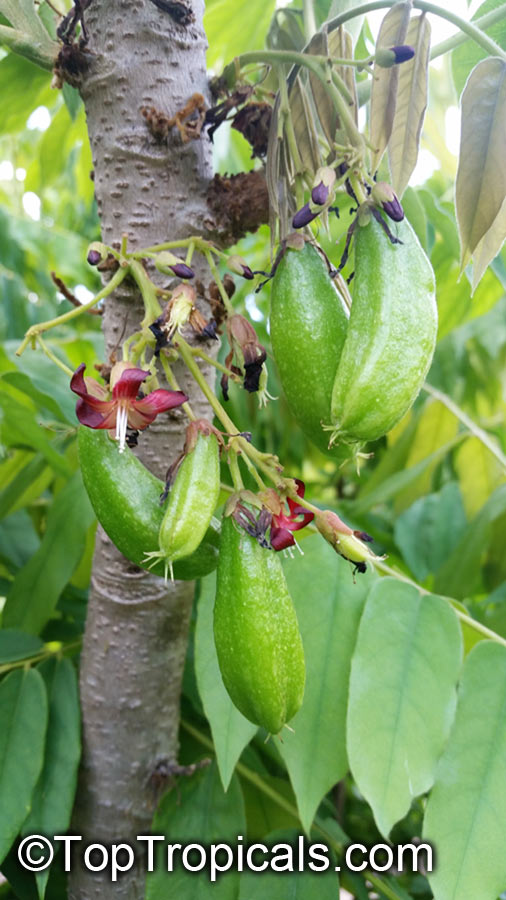
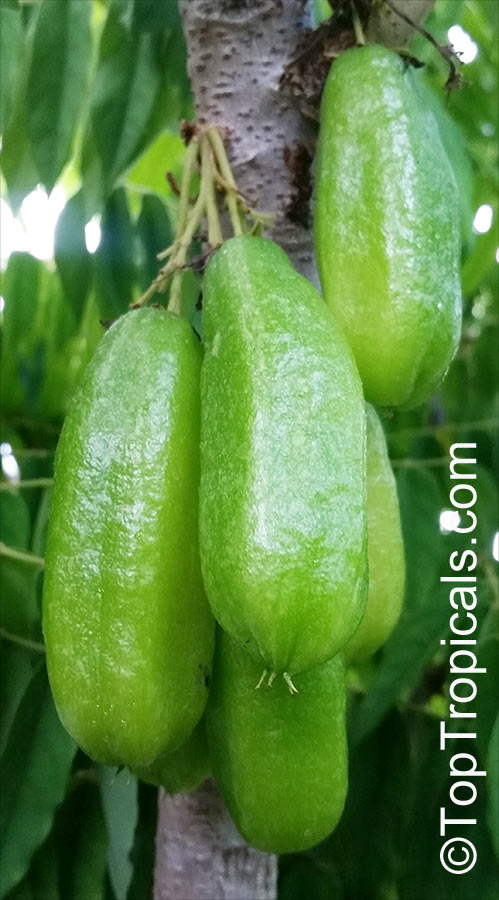
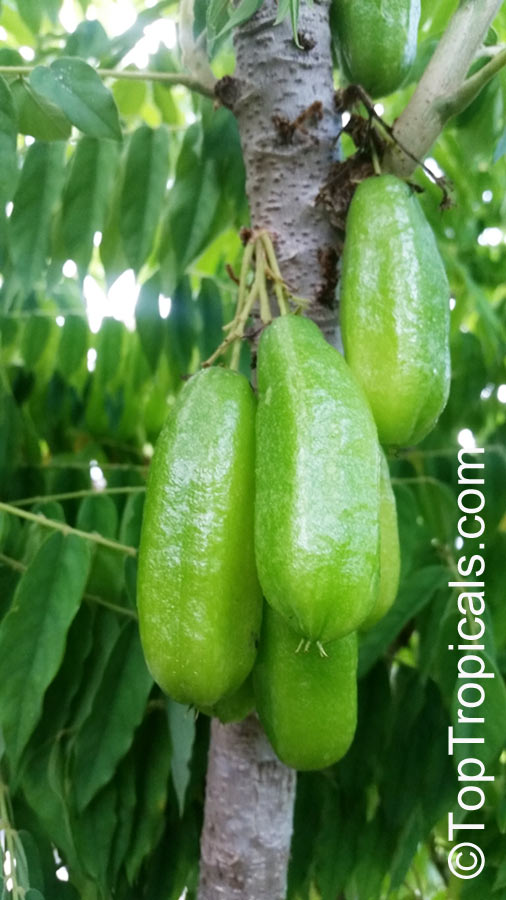
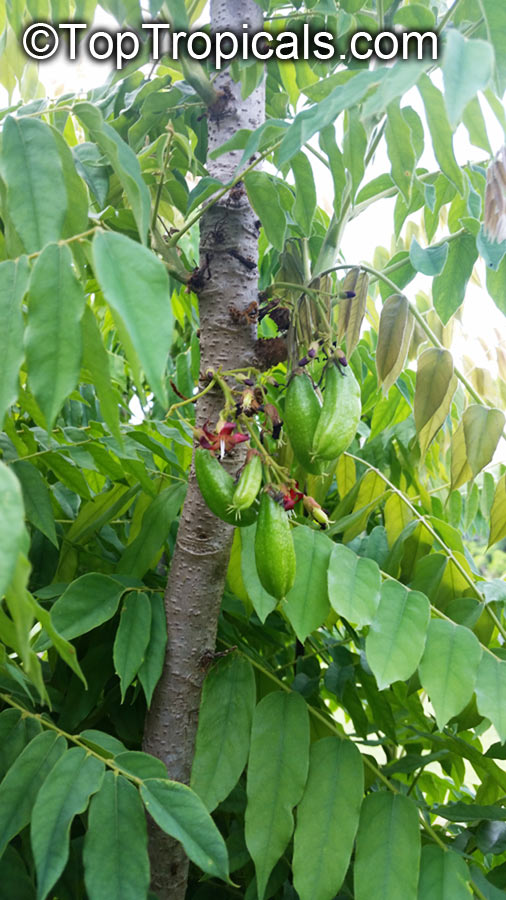
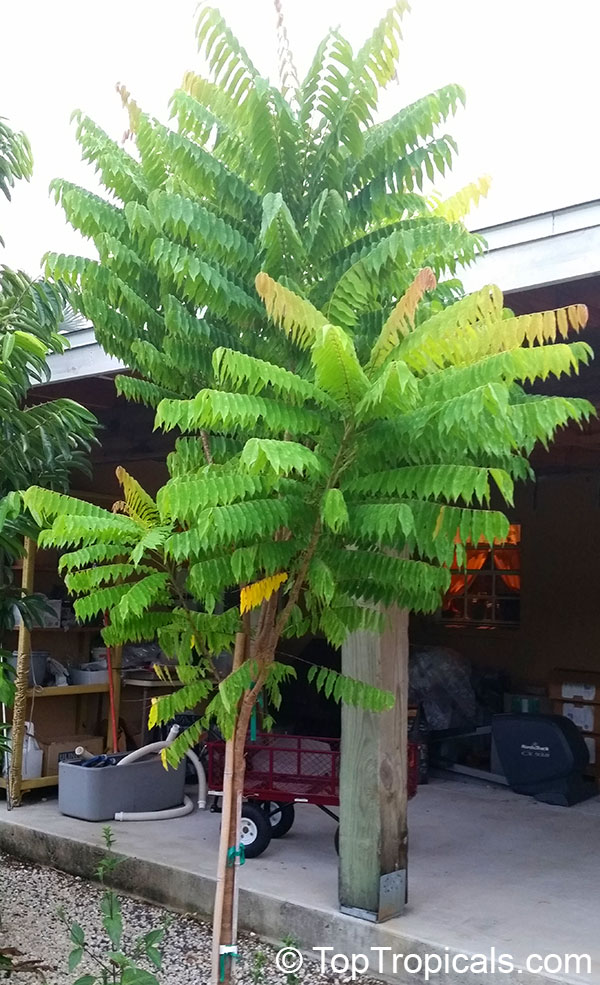
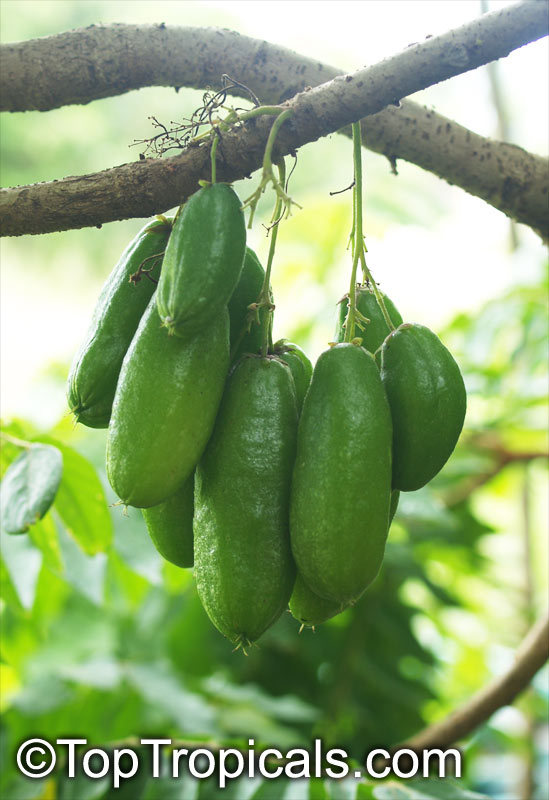
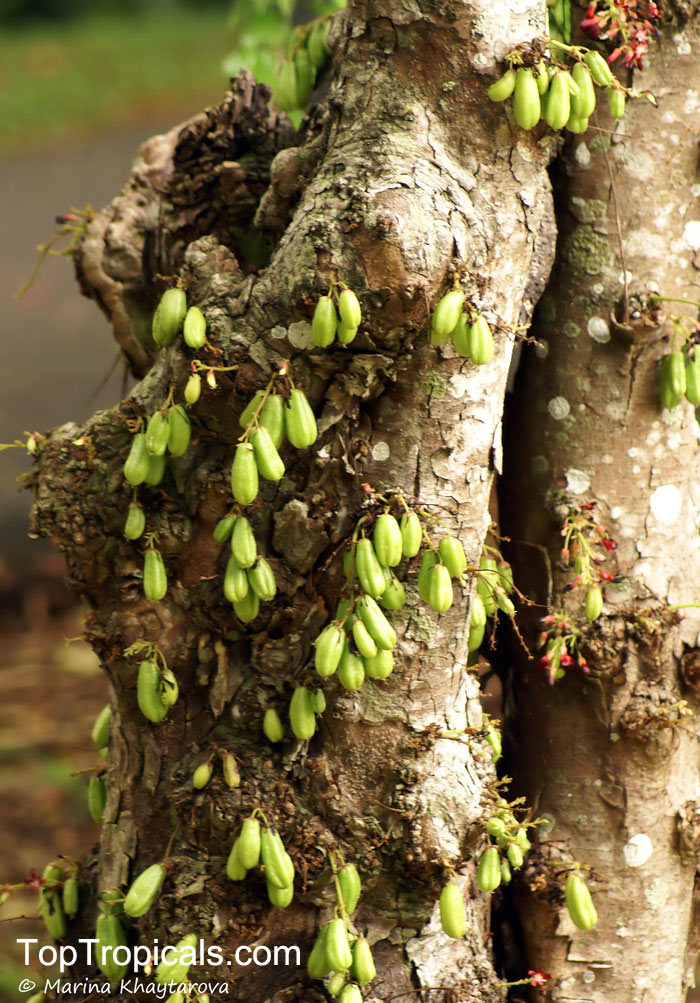
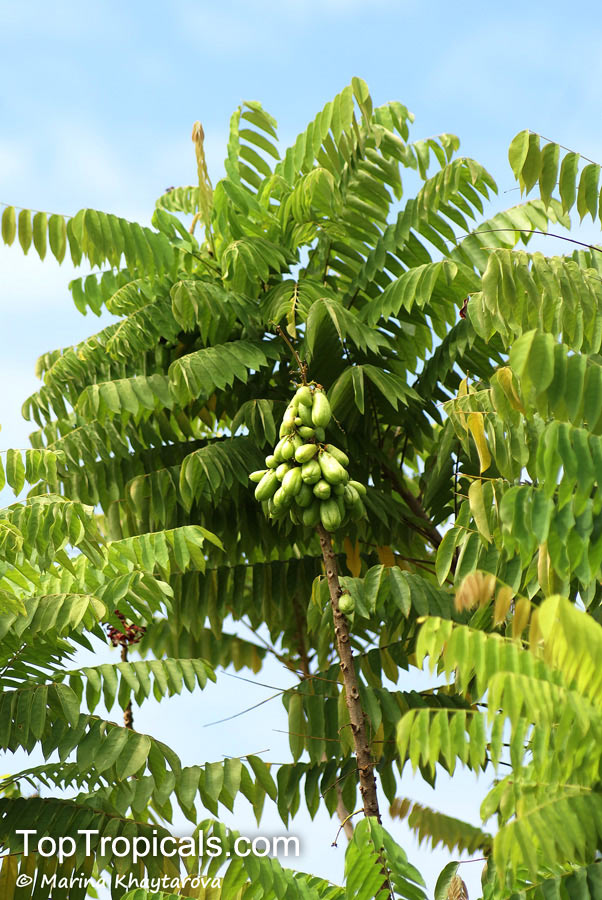
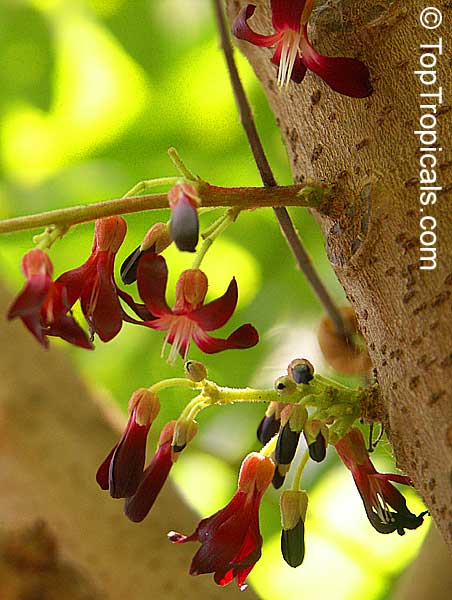
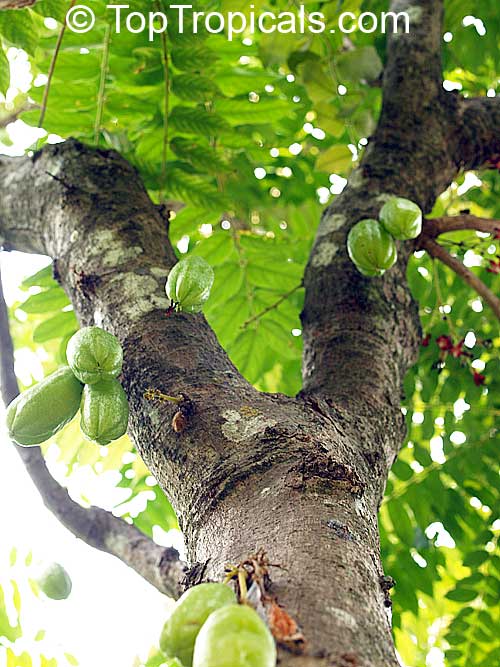

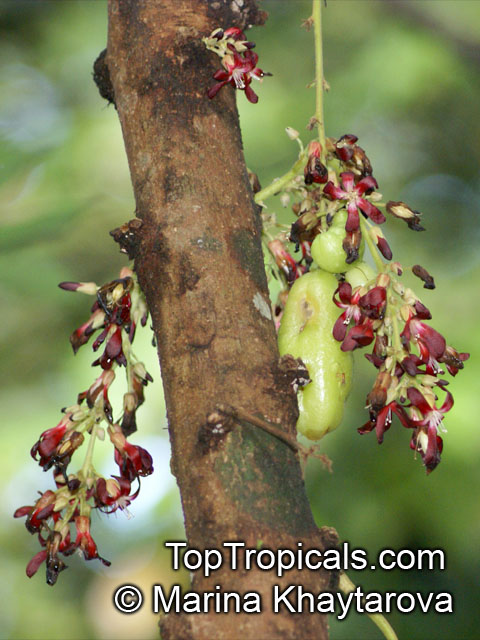
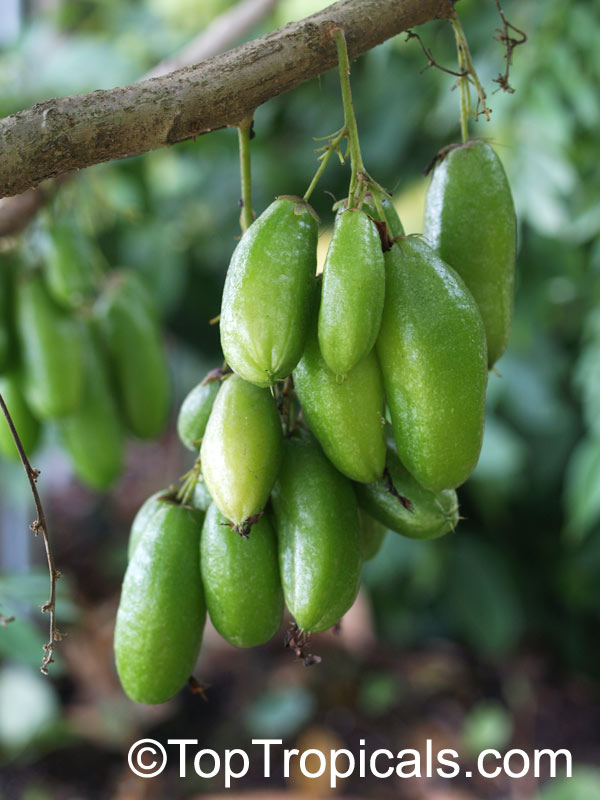
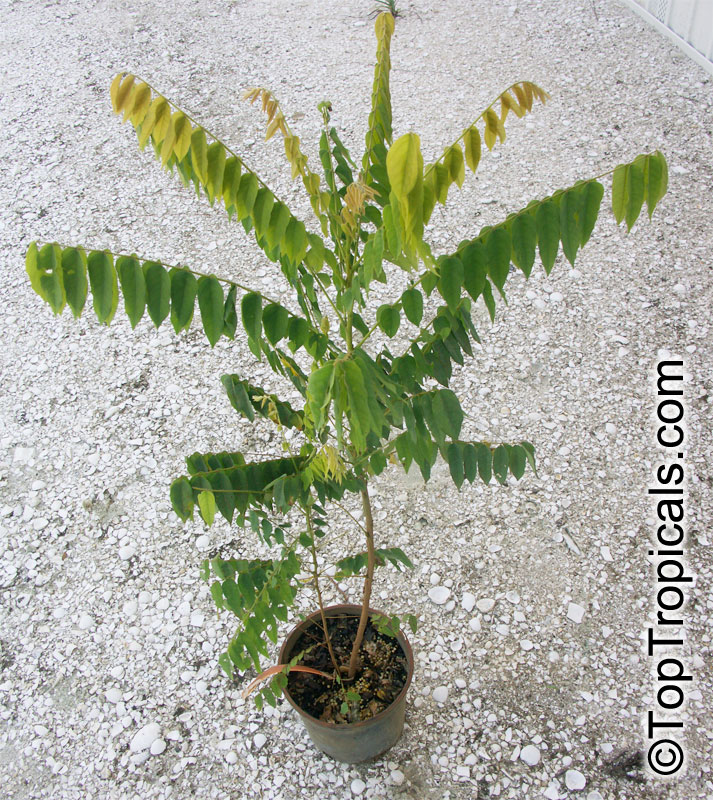
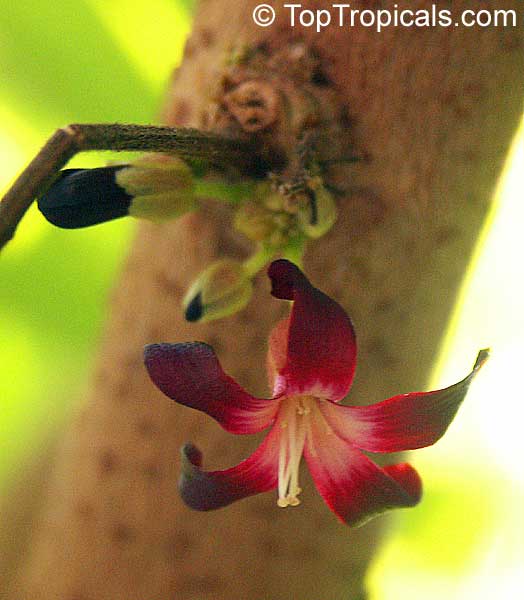
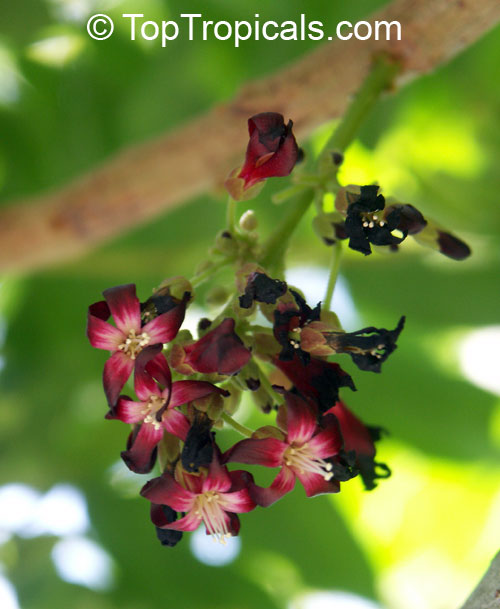
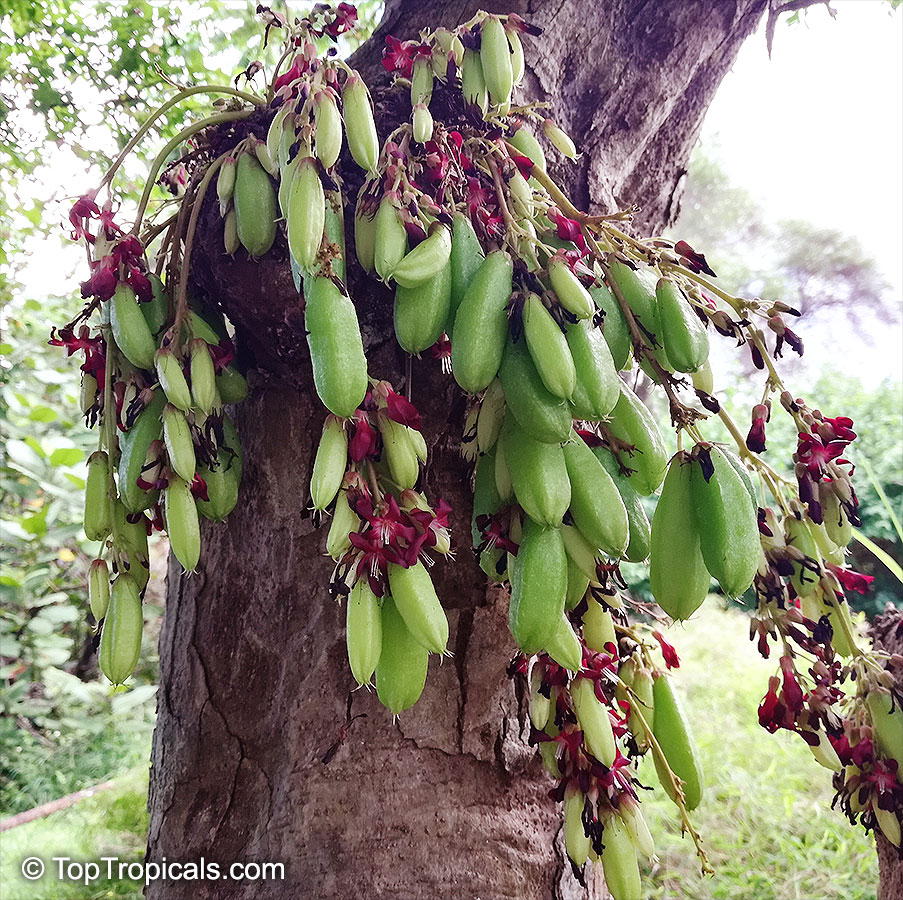



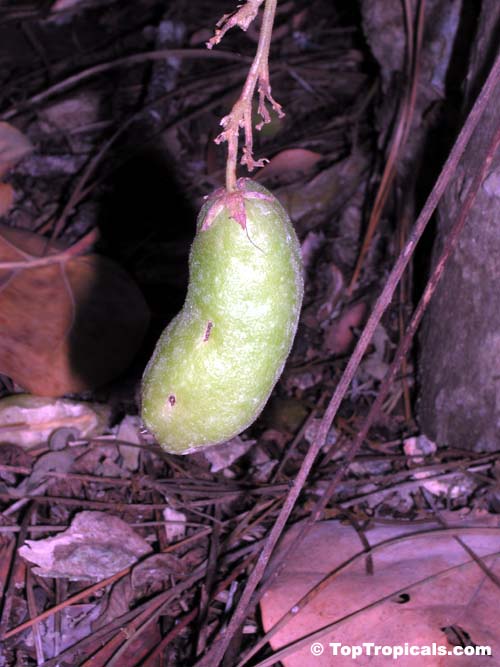
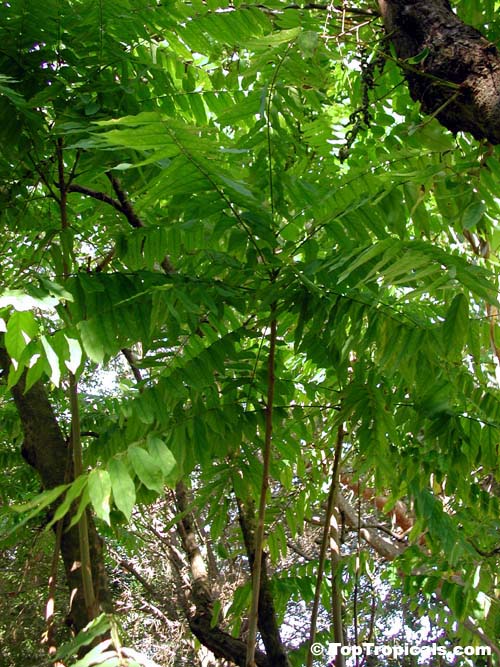

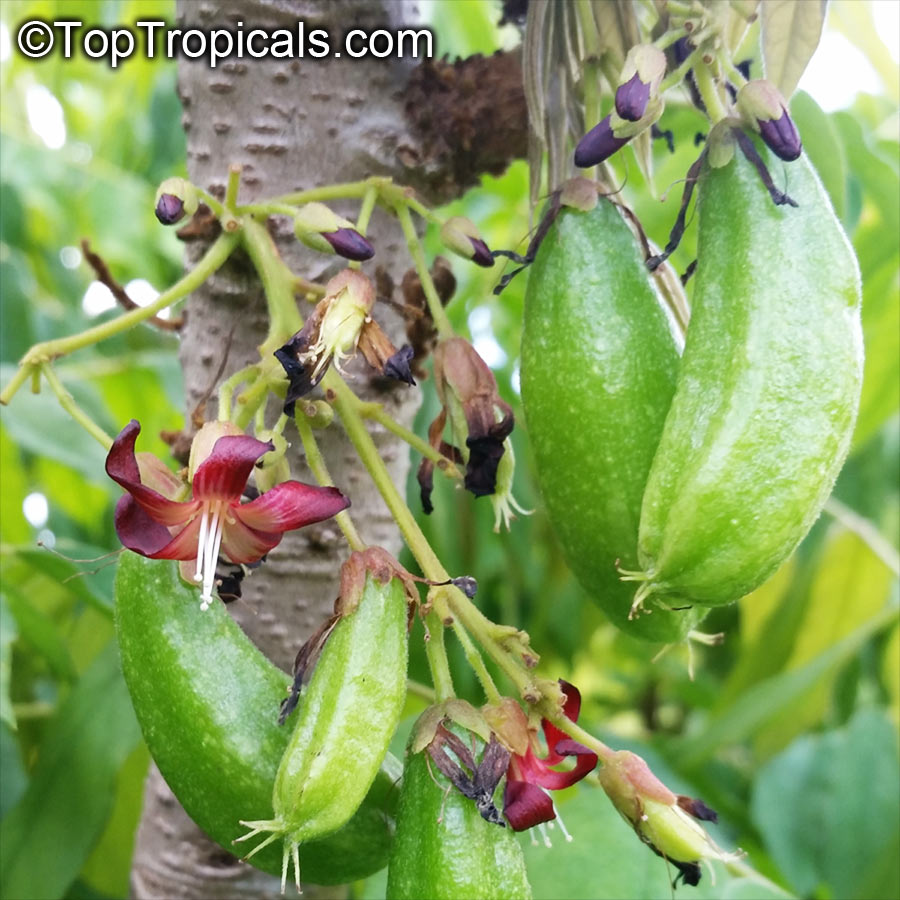
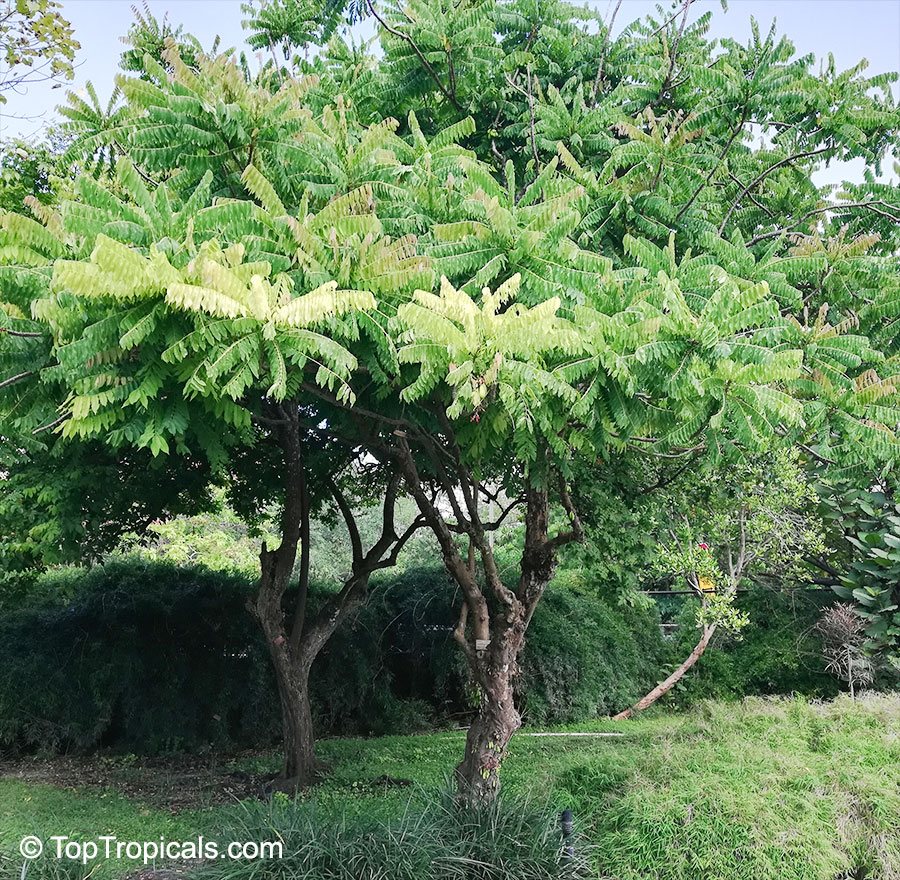
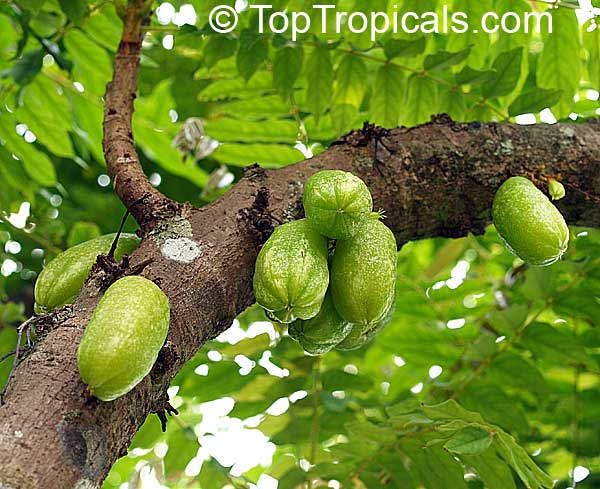
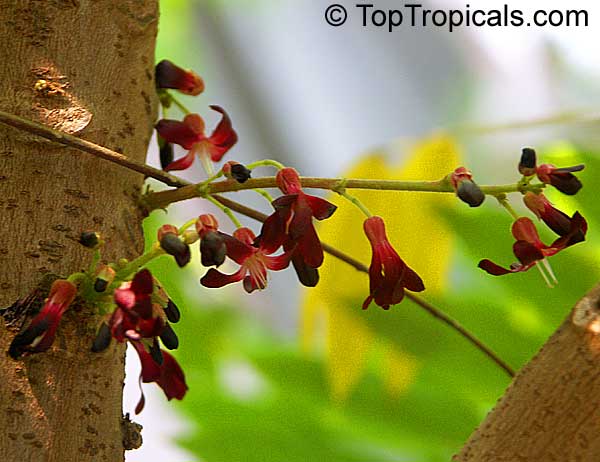
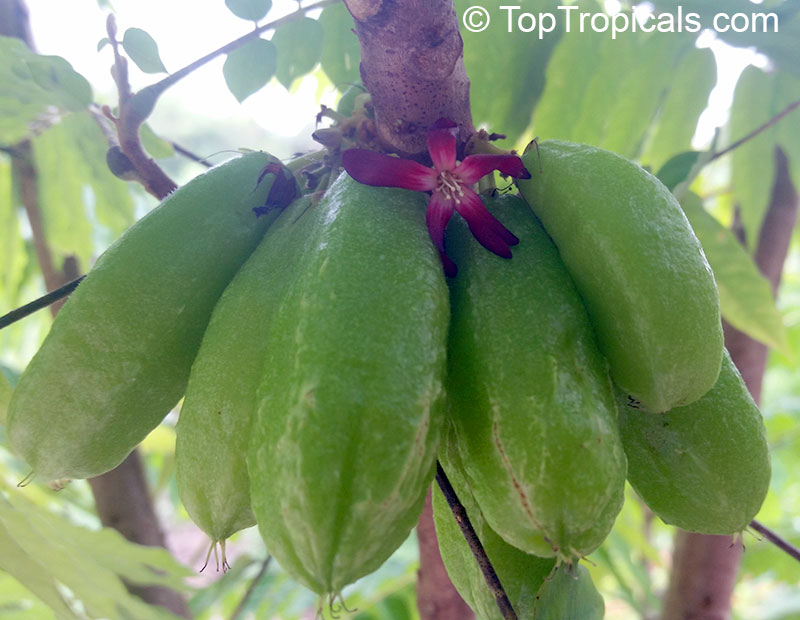
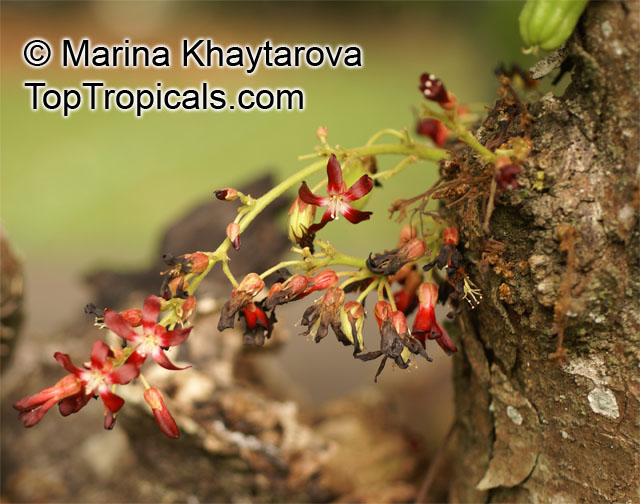
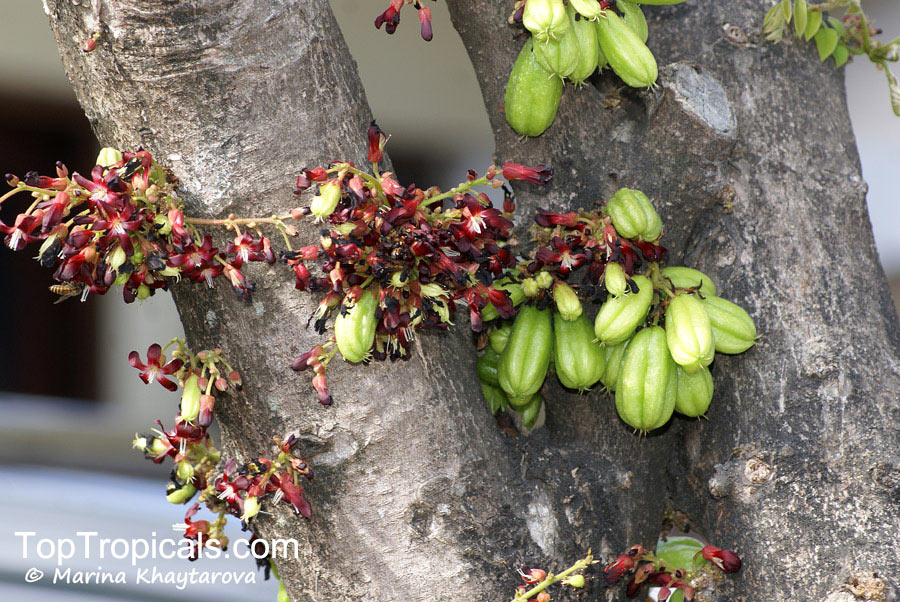

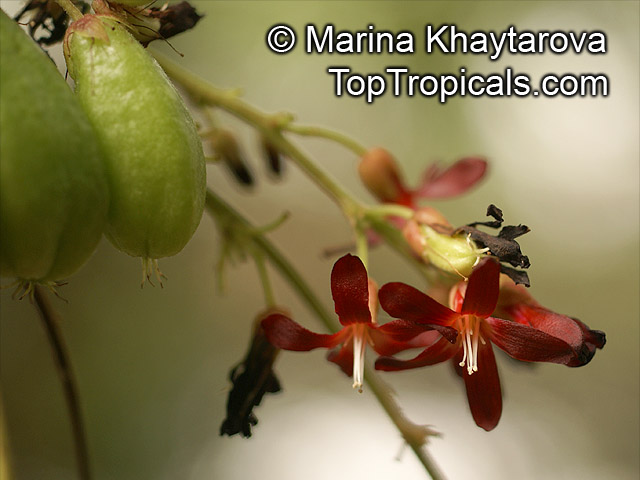
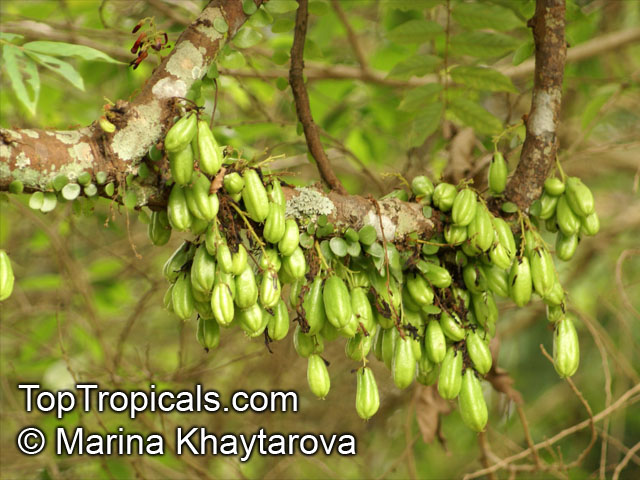
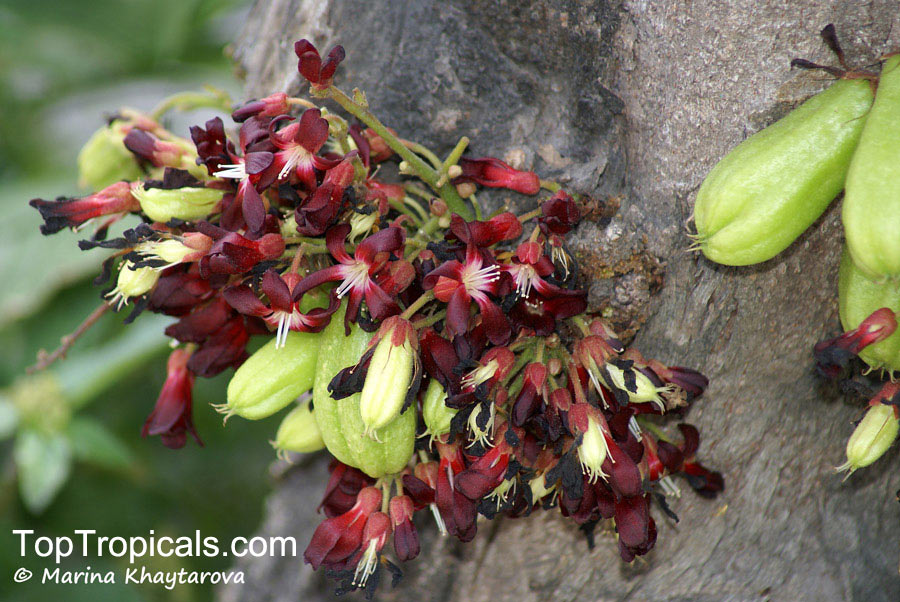


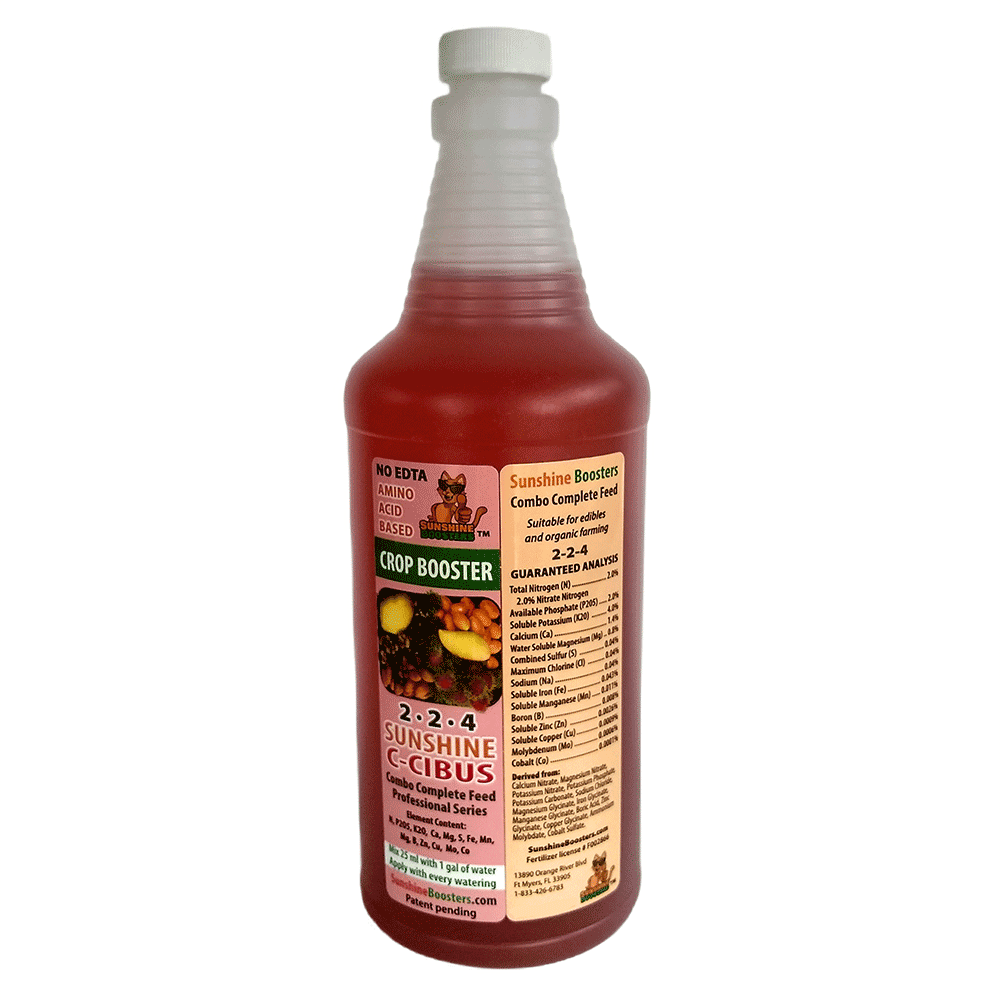 SUNSHINE C-Cibus (NPK 2-2-4) - Crop Booster for every watering.
SUNSHINE C-Cibus (NPK 2-2-4) - Crop Booster for every watering. 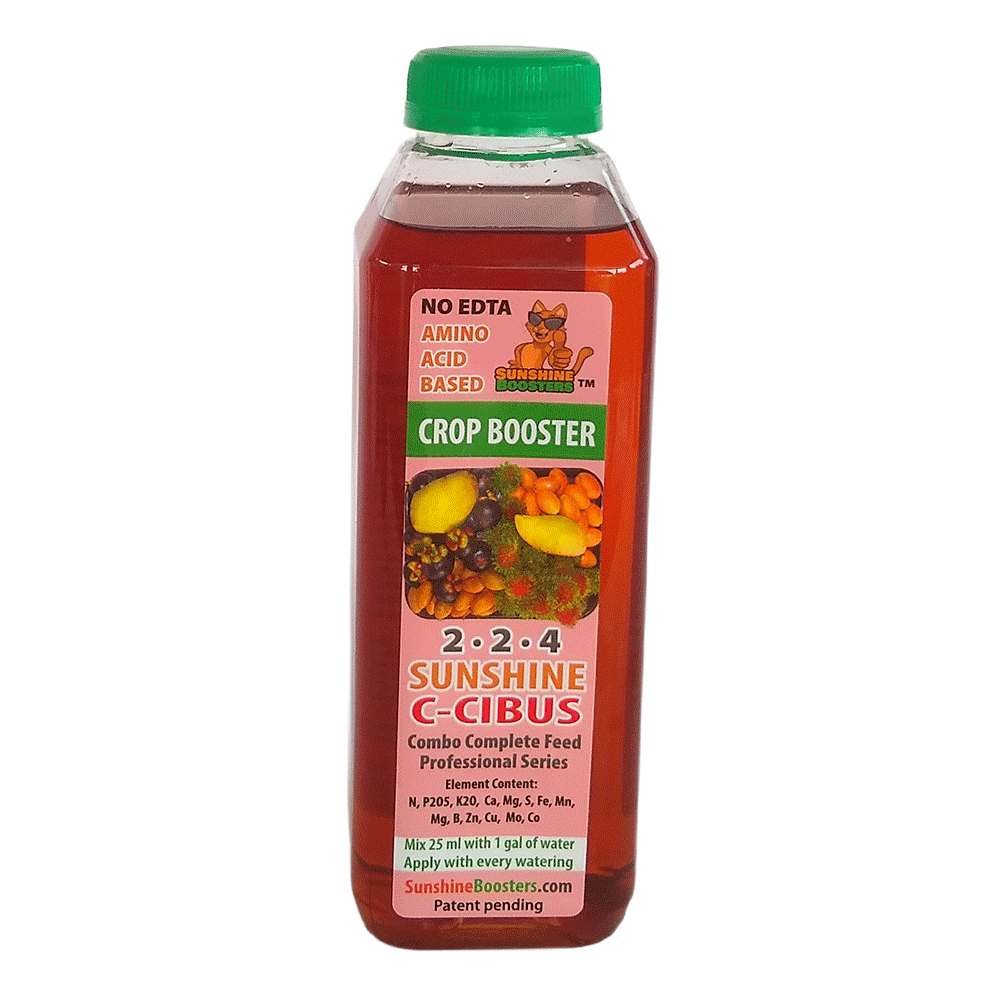 SUNSHINE C-Cibus (NPK 2-2-4) - Crop Booster for every watering.
SUNSHINE C-Cibus (NPK 2-2-4) - Crop Booster for every watering. 